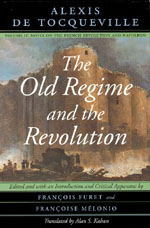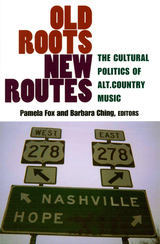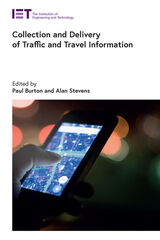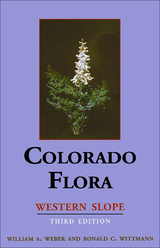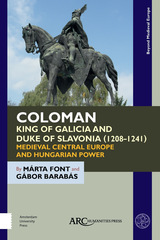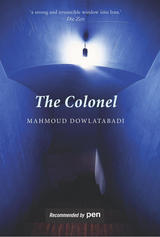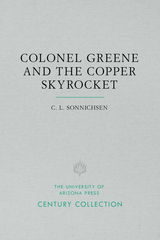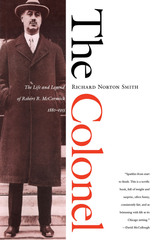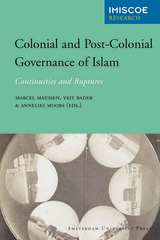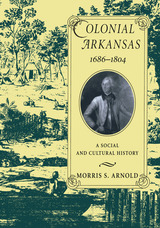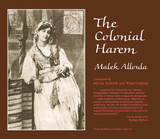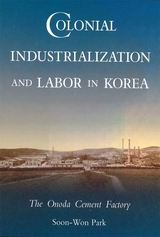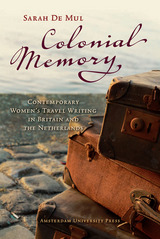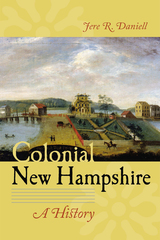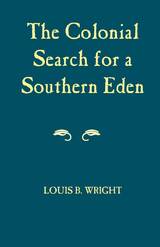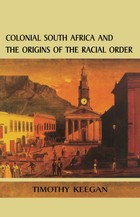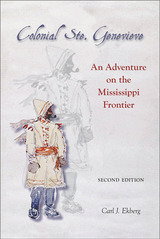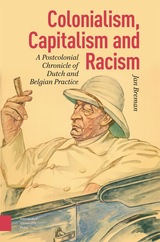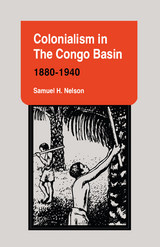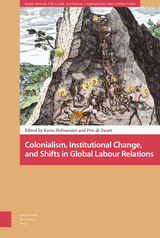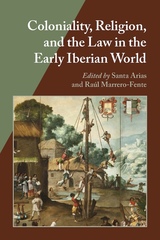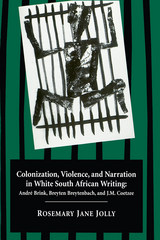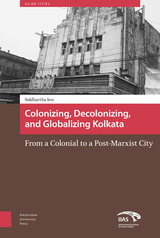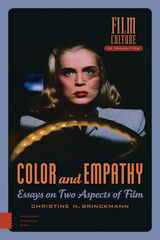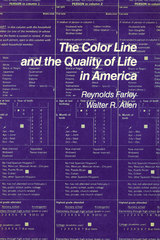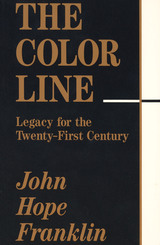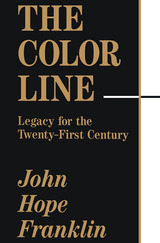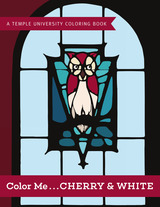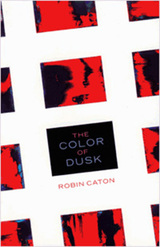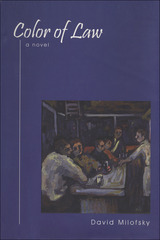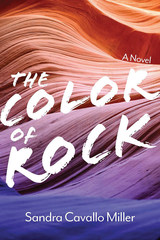 Collecting the Pre-Columbian Past
Elizabeth Hill Boone
Harvard University Press, 2011 The history of Pre-Columbian collecting is a social and aesthetic history—of ideas, people and organizations, and objects. This richly illustrated volume examines these histories by considering the collection and display of Pre-Columbian objects in Europe, Latin America, and the United States. Some of the thirteen essays locate the collecting process within its broader cultural setting in order to explain how and why such collections were formed, while others consider how collections have served as documents of culture within the disciplines of archaeology and anthropology, and as objects of fine art or aesthetic statements within the art and art historical worlds. Nearly all contemplate how such collections have been used as active signifiers of political, economic, and cultural power.
The thirteen essays were originally presented at a symposium commemorating the fiftieth anniversary of the Pre-Columbian Collection at Dumbarton Oaks. They continue to be groundbreaking contributions to the histories of collecting and Pre-Columbian art.
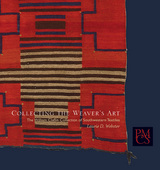 Collecting the Weaver's Art: The William Claflin Collection of Southwestern Textiles
Laurie D. Webster
Harvard University Press, 2005 This is the first publication on a remarkable collection of sixty-six outstanding Pueblo and Navajo textiles donated to the Peabody Museum in the 1980s by William Claflin, Jr., a prominent Boston businessman, avocational anthropologist, and patron of Southwestern archaeology. Claflin bequeathed to the museum not only these beautiful textiles, but also his detailed accounts of their collection histories—a rare record of the individuals who had owned or traded these weavings before they found a home in his private museum. Textile scholar Laurie Webster tells the stories of the weavings as they left their native Southwest and traveled eastward, passing through the hands of such owners and traders as a Ute Indian chief, a New England schoolteacher, a renowned artist, and various military officers and Indian agents. Her concise overview of Navajo and Pueblo weaving traditions is enhanced by the reflections of noted artist and Navajo textile expert Tony Berlant in his foreword to the text.
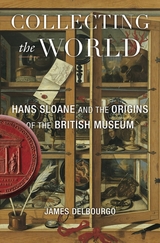 Collecting the World: Hans Sloane and the Origins of the British Museum
James Delbourgo
Harvard University Press, 2017 Winner of the Leo Gershoy Award
Winner of the Louis Gottschalk Prize
A Times Book of the Week
A Guardian Book of the Week
“A wonderfully intelligent book.”
—Linda Colley
“A superb biography—humane, judicious and as passionately curious as Sloane himself.”
—Times Literary Supplement
When the British Museum opened its doors in 1759, it was the first free national public museum in the world. Collecting the World tells the story of the eccentric collector whose thirst for universal knowledge brought it into being.
A man of insatiable curiosity and wide-ranging interests, Hans Sloane assembled a collection of antiquities, oddities, and artifacts from around the British Empire. It became the most famous cabinet of curiosities of its time. With few curbs on his passion, he established a network of agents to supply him with objects from China, India, the Caribbean, and beyond. Wampum beads, rare manuscripts, a shoe made of human skin: nothing was off limits, regardless of its human cost. The first biography of Sloane based on his complete writings, Collecting the World portrays one of the Enlightenment’s most original and controversial luminaries.
“Engrossing…situates Sloane within the welter of intellectual and political crosscurrents that marked his times.”
—New York Times Book Review
“A magnificent scholarly coup and an enthralling read… It conveys the excitement of original research as well as the thrill of tracking exotic curiosities to their source.”
—Sunday Times
“This book is a fitting tribute to [Sloane’s] contradiction-riven life. Collecting the World is about the torment of slavery, and it’s about buttered muffins and about snakes shot on boats. It teaches us about how we know, how we organize and discipline our knowledge.”
—New Republic
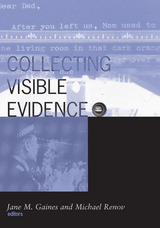 Collecting Visible Evidence
Jane Gaines
University of Minnesota Press, 1999 A redefinition of the nature of documentary film. In documentary studies, the old distinctions between fiction and nonfiction no longer apply, as contemporary film and video artists produce works that defy classification. Coming together to make sense of these developments, the contributors to this book effectively redefine documentary studies. They trace the documentary impulse in the early detective camera, in the reenactment of battle scenes from World War I, and in the telecast of the Nevada A-bomb test in 1952. Other topics include experiments in virtual reality; the crisis of representation in anthropology; and video art and documentary work that challenge the asymmetry of the postcolonial us/them divide. Contributors: Jenny Cool; Elizabeth Cowie, U of Kent; Faye Ginsburg, New York U; Tom Gunning, U of Chicago; Eithne Johnson; Alexandra Juhasz, Pitzer College; Neil Lerner, Davidson College; Akira Mizuta Lippit, San Francisco State U; Nancy Lutkehaus, USC; James M. Moran; Vivian Sobchack, UCLA; Linda Williams, U of California, Berkeley; Mark Williams, Dartmouth College; Mark J. P. Wolf, Concordia U, Wisconsin.
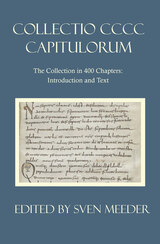 Collectio CCCC capituloru, The Collection in 400 Chapters: Introduction and Text
Sven Meeder
Catholic University of America Press, 2024 Surviving in three ninth-century manuscripts, the collection of canon law known as the Collectio 400 capitulorum is a remarkable and understudied witness to the scholarly vitality of the Carolingian period. Its 404 chapters offer ecclesiastical rules and moral guidelines taken from an unusually wide variety of authoritative sources. In addition to the customary canonical texts, such as the acts of the ecumenical councils and papal letters, the compiler of this collection drew his canons from the bible, Roman law, local Gallic synods, the Church Fathers, as well as Frankish and Insular penitential works.
Although the Collectio 400 capitulorum is a so-called systematic collection, eminent scholars of canon law commented on its lack of structure. Even ‘with the best will in the world’, the collection’s system eluded them. Despite its flaws, however, there is evidence that the collection gained some popularity in the ninth century, apparently providing the basis for the Poenitentiale Martenianum, directly or indirectly influencing Hrabanus Maurus and Benedictus Levita. The ninth-century appreciation is understandable for, as one of the many products of the vigorous canonical activity of the eighth and ninth centuries, the Collectio 400 capitulorum impresses in its handling of the canonical material as well as the breadth of sources and the topics covered.
This book constitutes the first in-depth study of this intriguing canonical collection, with a detailed description of the extant manuscript witnesses, its sources, and its influence. The critical edition offers scholars of the early Middle Ages in general and canon law in particular access to an instructive, if unpolished, product of Carolingian legal thought.
Collection and Delivery of Traffic and Travel Information
Paul Burton
The Institution of Engineering and Technology, 2021 Technologies for traffic and travel information (TTI) have been evolving rapidly in recent years. This book offers an overview of three generations of TTI technology, beginning with the first generation of human to human information transmission. The second generation incorporated machine to human information exchange, with the development of classification and transmission protocols such as RDS-TMC and TPEG. A third generation of machine to machine communication is now emerging, disrupting TTI technology and creating the need for this new reference work, which covers gathering information from automated sensors, its digital processing and transmission, and its use by increasingly intelligent agents and vehicles.
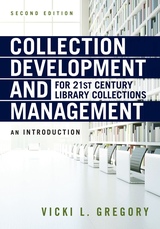 Collection Development and Management for 21st Century Library Collections: An Introduction
Vicki L. Gregory
American Library Association, 2019 Packed with discussion questions, activities, suggested additional references, selected readings, and many other features that speak directly to students and library professionals, Gregory’s Collection Development and Management for 21st Century Library Collections is a comprehensive handbook that also shares myriad insightful ideas and approaches valuable to experienced practitioners. This new second edition brings an already stellar text fully up to date, presenting top-to-bottom coverage of - the impact of new technologies and developments on the discipline, including discussion of e-books, open access, globalization, self-publishing, and other trends;
- needs assessment, policies, and selection sources and processes;
- budgeting and fiscal management;
- collection assessment and evaluation;
- weeding, with special attention paid to electronic materials;
- collaborative collection development and resource sharing;
- marketing and outreach;
- self-censorship as a component of intellectual freedom, professional ethics, and other legal issues;
- diversity and ADA issues;
- preservation; and
- the future of the field.
Additional features include updated vendor lists, samples of a needs assessment report, a collection development policy, an approval plan, and an electronic materials license.
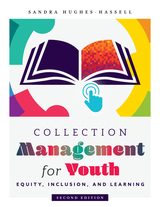 Collection Management for Youth: Equity, Inclusion, and Learning
Sandra Hughes-Hassell
American Library Association, 2020 With a renewed emphasis on facilitating learning, supporting multiple literacies, and advancing equity and inclusion, the thoroughly updated and revised second edition of this trusted text provides models and tools that will enable library staff who serve youth to create and maintain collections that provide equitable access to all youth. And as Hughes-Hassell demonstrates, the only way to do this is for collection managers to be learner-centered, confidently acting as information guides, change agents, and leaders. Based on the latest educational theory and research, this book - presents the argument for why collection management decisions and practices should focus on equity, exploring systemic inequities, educational paradigm shifts, developments in the information environment, and other key factors;
- lays out the theoretical foundation for developing and managing a library collection that facilitates learning, supports the development of multiple literacies, and provides equitable access to an increasingly diverse group of young learners;
- touches upon current competencies and standards by AASL, YALSA, and ALSC;
- uses a learner-centered and equity perspective to cover core issues and criteria such as selection and removal of materials, budgeting, and cooperation among libraries;
- shows how a business viewpoint can assist the learner-centered collector in articulating the central significance of the collection to learning;
- discusses how library staff can work collaboratively to create policy and negotiate budgets; and
- includes customizable tools and templates, including a Stakeholder Contact/SWOT Analysis, Decision-Making Model for Selecting Resources and Access Points that Support Learning and Advance Equity, and Collection Development Analysis Worksheet.
This resource will be as useful to current school librarians and supervisors, youth librarians in public libraries, and educators as it will to LIS students.
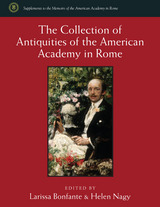 The Collection of Antiquities of the American Academy in Rome
Larissa Bonfante and Helen Nagy, editors
University of Michigan Press, 2016 The foundation of the American Academy in Rome dates back more than one hundred years to the early decades of the last century. Over the years, the Academy has acquired a study collection of material goods from antiquity, including coins, statues and figurines, lamps, stucco and other architectural fragments, jewelry, and inscriptions. While most are Roman in origin, some pieces are Greek or Etruscan. Some were gifts, others come from long-ago excavations, a few were bought. The Collection of Antiquities of the American Academy in Rome, the latest addition to the Supplements to the Memoirs of the American Academy in Rome series, focuses on highlights of the collection. Sections of the work are written by area specialists, with introductory material contributed by volume editors Larissa Bonfante and Helen Nagy, both of whom have published widely in archaeology and art history.
A Collection of Ranter Writings: Spiritual Liberty and Sexual Freedom in the English Revolution
Nigel Smith
Pluto Press, 2014 The Ranters - like the Levellers and the Diggers - were a group of religious libertarians who flourished during the English Civil War (1642–1651), a period of social and religious turmoil which saw, in the words of the historian Christopher Hill, 'the world turned upside down'.
A Collection of Ranter Writings is the most notable attempt to anthologise the key Ranter writings, bringing together some of the most remarkable, visionary and unforgettable texts. The subjects range from the limits to pleasure and divine right, to social justice and collective action.
The Ranters have intrigued and captivated generations of scholars and philosophers. This carefully curated collection will be of great interest to historians, philosophers and all those trying to understand past radical traditions.
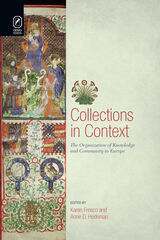 Collections in Context: The Organization of Knowledge and Community in Europe
Edited by Karen Fresco and Anne D. Hedeman
Ohio State University Press, 2011 The fourteen essays that comprise Collections in Context: The Organization of Knowledge and Community in Europe interrogate questions posed by French, Flemish, English, and Italian collections of all sorts—libraries as a whole, anthologies and miscellanies assembled within a single manuscript or printed book, and even illustrated ivory boxes. Collecting became an increasingly important activity during the fourteenth through seventeenth centuries, when the decreased cost of producing books made ownership available to more people. But the act of collecting is never neutral: it gathers information, orders material (especially linear texts), and prioritizes everything—in short, collecting both organizes and comments on knowledge. Moreover, the context of a collection must reveal something about identity, but whose? That of the compiler? The reader or viewer? The donor? The patron?
With essays by a wide array of international scholars, Collections in Context demonstrates that the very act of collecting inevitably imposes some kind of relationship among what might otherwise be naively thought of as disparate elements and simultaneously exposes something about the community that created and used the collection. Thus, Collections in Context offers unusual insights into how collecting both produced knowledge and built community in early modern Europe.
Collections Management as Critical Museum Practice
Edited by Cara Krmpotich and Alice Stevenson
University College London, 2024 A reframing of collections management in museums worldwide.
Collections Management as Critical Museum Practice redefines collections management as a political, critical, and social project, contradicting its misperception as a set of fixed procedures and universal practices. Highlighting national museums and community-led heritage work worldwide, this book explores the complexities of numbering, digitization, and description alongside the realities of climate change, global pandemics, and natural disasters. The contributors draw on their local experiences to emphasize the varying practices, ethics, and workplace pragmatics defining this work.
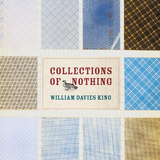 Collections of Nothing
William Davies King
University of Chicago Press, 2008 Nearly everyone collects something, even those who don’t think of themselves as collectors. William Davies King, on the other hand, has devoted decades to collecting nothing—and a lot of it. With Collections of Nothing, he takes a hard look at this habitual hoarding to see what truths it can reveal about the impulse to accumulate. Part memoir, part reflection on the mania of acquisition, Collections of Nothing begins with the stamp collection that King was given as a boy. In the following years, rather than rarity or pedigree, he found himself searching out the lowly and the lost, the cast-off and the undesired: objects that, merely by gathering and retaining them, he could imbue with meaning, even value. As he relates the story of his burgeoning collections, King also offers a fascinating meditation on the human urge to collect. This wry, funny, even touching appreciation and dissection of the collector’s art as seen through the life of a most unusual specimen will appeal to anyone who has ever felt the unappeasable power of that acquisitive fever. "What makes this book, bred of a midlife crisis, extraordinary is the way King weaves his autobiography into the account of his collection, deftly demonstrating that the two stories are essentially one. . . . His hard-won self-awareness gives his disclosures an intensity that will likely resonate with all readers, even those whose collections of nothing contain nothing at all."—New Yorker "King's extraordinary book is a memoir served up on the backs of all things he collects. . . . His story starts out sounding odd and singular—who is this guy?—but by the end, you recognize yourself in a lot of what he does."—Julia Keller, Chicago Tribune
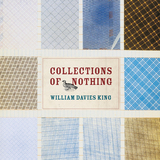 Collections of Nothing
William Davies King
University of Chicago Press, 2008 Nearly everyone collects something, even those who don’t think of themselves as collectors. William Davies King, on the other hand, has devoted decades to collecting nothing—and a lot of it. With Collections of Nothing, he takes a hard look at this habitual hoarding to see what truths it can reveal about the impulse to accumulate. Part memoir, part reflection on the mania of acquisition, Collections of Nothing begins with the stamp collection that King was given as a boy. In the following years, rather than rarity or pedigree, he found himself searching out the lowly and the lost, the cast-off and the undesired: objects that, merely by gathering and retaining them, he could imbue with meaning, even value. As he relates the story of his burgeoning collections, King also offers a fascinating meditation on the human urge to collect. This wry, funny, even touching appreciation and dissection of the collector’s art as seen through the life of a most unusual specimen will appeal to anyone who has ever felt the unappeasable power of that acquisitive fever. "What makes this book, bred of a midlife crisis, extraordinary is the way King weaves his autobiography into the account of his collection, deftly demonstrating that the two stories are essentially one. . . . His hard-won self-awareness gives his disclosures an intensity that will likely resonate with all readers, even those whose collections of nothing contain nothing at all."—New Yorker "King's extraordinary book is a memoir served up on the backs of all things he collects. . . . His story starts out sounding odd and singular—who is this guy?—but by the end, you recognize yourself in a lot of what he does."—Julia Keller, Chicago Tribune
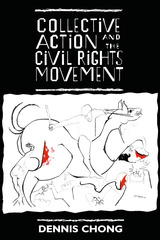 Collective Action and the Civil Rights Movement
Dennis Chong
University of Chicago Press, 1991 Collective Action and the Civil Rights Movement is a theoretical study of the dynamics of public-spirited collective action as well as a substantial study of the American civil rights movement and the local and national politics that surrounded it. In this major historical application of rational choice theory to a social movement, Dennis Chong reexamines the problem of organizing collective action by focusing on the social, psychological, and moral incentives of political activism that are often neglected by rational choice theorists. Using game theoretic concepts as well as dynamic models, he explores how rational individuals decide to participate in social movements and how these individual decisions translate into collective outcomes. In addition to applying formal modeling to the puzzling and important social phenomenon of collective action, he offers persuasive insights into the political and psychological dynamics that provoke and sustain public activism. This remarkably accessible study demonstrates how the civil rights movement succeeded against difficult odds by mobilizing community resources, resisting powerful opposition, and winning concessions from the government.
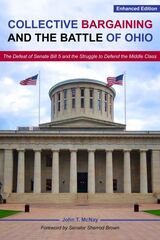 Collective Bargaining and the Battle for Ohio: The Defeat of Senate Bill 5 and the Struggle to Defend the Middle Class
John T. McNay
University of Minnesota Press, 2022 This study outlines the landmark “We Are Ohio” labor coalition.
In 2011, Ohio Governor John Kasich and his Republican-controlled legislature passed the radical Senate Bill 5 designed to impede the labor movement, particularly targeting unionized professors. Collective Bargaining and the Battle for Ohio is the story of how professors worked alongside firefighters, police, and janitors to defend universities, the value of higher education, and their collective bargaining rights. Faculty across the state joined “We Are Ohio,” a historic coalition of unions and progressive groups that spearheaded efforts to protect employees’ rights to have a voice in the workplace. A massive political struggle ensued, pitting the labor movement against powerful corporate forces, and on election day, Ohioans defended the middle class by repealing Senate Bill 5 by a nearly 2-1 margin.
In this tenth-anniversary edition, historian, higher education expert, and author John T. McNay updates the introduction and pairs his compelling account with video and articles which highlight the struggles of the union battle.
 Collective Biologies: Healing Social Ills through Sexual Health Research in Mexico
Emily A. Wentzell
Duke University Press, 2021 In Collective Biologies, Emily A. Wentzell uses sexual health research participation as a case study for investigating the use of individual health behaviors to aid groups facing crisis and change. Wentzell analyzes couples' experiences of a longitudinal study of HPV occurrence in men in Cuernavaca, Mexico. She observes how their experiences reflected Mexican cultural understandings of group belonging through categories like family and race. For instance, partners drew on collective rather than individualistic understandings of biology to hope that men's performance of “modern” masculinities, marriage, and healthcare via HPV research would aid groups ranging from church congregations to the Mexican populace. Thus, Wentzell challenges the common regulatory view of medical research participation as an individual pursuit. Instead, she demonstrates that medical research is a daily life arena that people might use for fixing embodied societal problems. By identifying forms of group interconnectedness as “collective biologies,” Wentzell investigates how people can use their own actions to enhance collective health and well-being in ways that neoliberal emphasis on individuality obscures.
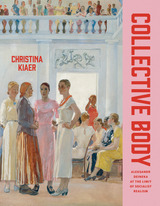 Collective Body: Aleksandr Deineka at the Limit of Socialist Realism
Christina Kiaer
University of Chicago Press, 2024 A study of the Socialist Realist aesthetic focusing on the artist Aleksandr Deineka.
Dislodging the avant-garde from its central position in the narrative of Soviet art, Collective Body presents painter Aleksandr Deineka’s haptic and corporeal version of Socialist Realist figuration as an alternate experimental aesthetic that, at its best, activates and organizes affective forces for collective ends. Christina Kiaer traces Deineka’s path from his avant-garde origins as the inventor of the proletarian body in illustrations for mass magazines after the revolution through his success as a state-sponsored painter of monumental, lyrical canvases during the Terror and beyond. In so doing, she demonstrates that Socialist Realism is best understood not as a totalitarian style but as a fiercely collective art system that organized art outside the market and formed part of the legacy of the revolutionary modernisms of the 1920s. Collective Body accounts for the way the art of the October Revolution continues to capture viewers’ imaginations by evoking the elation of collectivity, making viewers not just comprehend but truly feel socialism, and retaining the potential to inform our own art-into-life experiments within contemporary political art. Deineka figures in this study not as a singular master, in the spirit of a traditional monograph, but as a limit case of the system he inhabited and helped to create.
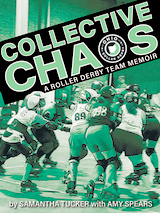 Collective Chaos: A Roller Derby Team Memoir
Samantha Tucker
Ohio University Press, 2023 A view into the continuing evolution of the niche-yet-global sport through the historical lens of Ohio Roller Derby, one of the founding leagues of the Women’s Flat Track Derby Association Part sports autobiography, part cultural critique, this book offers the collective experience of a tenacious group of nontraditional athletes who play, officiate, plan, schedule, market, and manage the business of a (mostly) women’s amateur sports team. This modern sport, with its alternative, punk rock culture, is often a place for those who’ve struggled within the mainstream. But even as the sport is often home for historically marginalized groups, such as the LGBTQ+ community, roller derby organizations and participants often mirror and experience the same inequities as those in the world surrounding them. In a full-contact, theatrical sport that some consider revolutionary, the authors show that gaining truly radical self-knowledge is an ongoing, difficult process that requires love, teamwork, discipline, critical consideration of one’s local and global societies, and—above all else—one’s place and action within them.
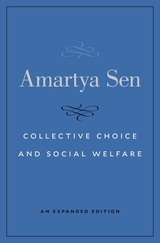 Collective Choice and Social Welfare: An Expanded Edition
Amartya Sen
Harvard University Press, 2017 Originally published in 1970, this classic study has been recognized for its groundbreaking role in integrating economics and ethics, and for its influence in opening up new areas of research in social choice, including aggregative assessment. It has also had a large influence on international organizations, including the United Nations, notably in its work on human development. The book showed that the “impossibility theorems” in social choice theory—led by the pioneering work of Kenneth Arrow—do not negate the possibility of reasoned and democratic social choice.
Sen’s ideas about social choice, welfare economics, inequality, poverty, and human rights have continued to evolve since the book’s first appearance. This expanded edition preserves the text of the original while presenting eleven new chapters of fresh arguments and results.
“Expanding on the early work of Condorcet, Pareto, Arrow, and others, Sen provides rigorous mathematical argumentation on the merits of voting mechanisms…For those with graduate training, it will serve as a frequently consulted reference and a necessity on one’s book shelf.”
—J. F. O’Connell, Choice
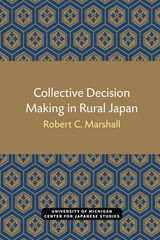 Collective Decision Making in Rural Japan
Robert C. Marshall
University of Michigan Press, 1984 This study is a result of three continuous years of fieldwork in a hamlet in rural Japan. The data presented and analyzed here consist of records from participant observation, formal and informal interviews, casual conversation and formal questionnaires, and public and private documents. The subject of this research is group decision making, and the results of this process are, after all, a matter of public record. The major conclusions of this study are outlined in their simplest and most straightforward form. A hamlet is fundamentally a nexus for the organization of productive exchange among member households, the form of exchange through which two or more parties actively combine their resources to produce something of value not available, or as cheaply available, to any of them separately. Defection from productive exchange agreements by hamlet members is reduced by making access to future valuable transactions and corporate property contingent upon the integrity of each current exchange transaction. This method of combining a common interest in production with contingent access to productive resources is termed mutual investment and is the major source of consensus in hamlet decision making. When only cooperate resources are at issue, decisions regularly result in unanimity. When a course of action can be implemented only if hamlet members relinquish control over individually held resources, a division will emerge among the membership. Whether or not a formal vote is taken, the distribution of differing opinion will be known through more informal means of communication. In all cases of division, by the time the course of action to be implemented is formally announced, the minority in opposition will be extremely small. The question then must be resolved whether those in the minority will participate in the implementation or resign as hamlet members. This book is written with two rather disparate audiences in mind: readers interested primarily in exchange and decision-making phenomenon, on the one hand, and readers interested primarily in the unity of experience represented by the Japanese sensibility, on the other.
 Collective Effervescence
Edited by Sébastien Tutenges and Philip Smith
Temple University Press, 2026 Sociologist Émile Durkheim’s theory of collective effervescence describes an overwhelming sense of excitement, empowerment, and unity. While originally tailored to examine religious phenomena, the theory has proven remarkably powerful in explaining secular experiences, from raves and military marches to sporting events and protest crowds.
The editors and contributors to Collective Effervescence make a deep dive into new waters. They investigate solo experiences, virtual collectivities, low-intensity effervescence, and negative outcomes. Through studies of drug ceremonies, occupational subcultures, bookshops, online activities, and much more, each chapter discovers and theorizes something previously unknown. Collective Effervescence finds new potentials in a familiar theoretical resource.
Contributors: Sarah H. Awad, Pierre Bouchat, Randall Collins, Silvia da Costa, Scott Draper, Lisa Flower, Romulo Lelis, Heather Margrsion, Sharon Mascall-Dare, Ashley Mears, Margit Anne Petersen, José J. Pizarro, Bernard Rimé, Dario Páez, David Sausdal, Daniel Smith, Femke Vandenberg, Brady Wagoner, David Wästerfors, Brad West, and the editors
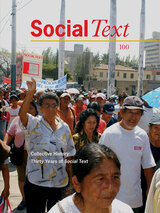 Collective History: Thirty Years of Social Text, Volume 27
Brent Hayes Edwards and Anna McCarthy, eds.
Duke University Press This issue marks the thirtieth anniversary of Social Text and celebrates the journal’s legacy. Offering a history of the journal since its inception in 1979, this issue explores the elements that have made Social Text what it is today: the intellectual impulses that first brought the editorial collective of scholars, artists, and activists together; the collective’s special commitment to collaborative journal editing; and the unique path the journal has taken to arrive at the distinctive place it now occupies in new left critical thought. Featuring new interviews with Social Text’s founders and former editors—including Stanley Aronowitz, John Brenkman, Fredric Jameson, Randy Martin, Toby Miller, Bruce Robbins, Andrew Ross, Sohnya Sayres, and Anders Stephanson—the issue reflects on the journal’s legacy as a radical publication that has bridged politics and the academy and has made critical interventions in both arenas. Several contributors revisit the first issue of the journal and describe its lasting impact. Others examine the politics of production at Social Text and detail the hands-on process of putting the journal together. Notably, the issue also features thirty essays by members of the current editorial collective, on key topics that have been crucial to the journal. Ranging from aesthetics to war, and including empire, mass culture, revolution, science, and theory, these essays bring to life the cultural history of the journal and demonstrate how Social Text has shaped the way that these terms are conceptualized and used today. Contributors. The forty-four contributors include the current members of the Social Text collective and a number of former members. For a complete list of the collective, visit socialtextonline.org.
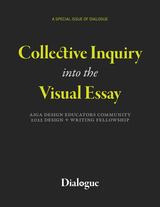 Collective Inquiry into the Visual Essay: AIGA Design Educators Community 2022 Design + Writing Fellowship
Written by AIGA Design Educators Community and Edited by Rebecca Tegtmeyer and Liese Zahabi
Michigan Publishing, 2023 The essays in this publication are the outcomes from the inaugural AIGA Design Educators Community 2022 Design + Writing Fellowship. Nineteen fellows worked both individually and collaboratively to interrogate the idea of the visual essay, to support and give critical feedback to each other, and to ultimately research, write, and design a visual essay for this publication. Once created, these works went through an initial peer-review process specific to visual essays conducted both in-person and online as part of the AIGA National Design Conference in Seattle, Washington from October 20-22, 2022. Once the feedback was collected and shared with the fellows, a first draft of the visual essays was achieved. These essays then went through a more traditional academic peer-review process, leading to the final versions of the essays you see here.
The topics and outcomes presented within these pages represent a wide range of ideas and visual language, from examining our negotiations with nature, using design as a tool to address issues of racial justice and civic engagement, exploring the reproductive life-cycle through the lens of a designer, concepts centered on the idea of the visual essay itself, and many others. Each essay takes into account the characteristics of visual language as a powerful mechanism for delivering a message.
As facilitators of this inaugural fellowship, the AIGA Design Educators Community is pleased with the outcomes and see this publication as a reminder and perhaps starting point for further elevating creative and scholarly research in the discipline of graphic design.
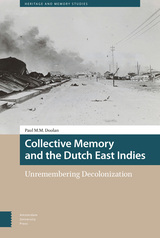 Collective Memory and the Dutch East Indies: Unremembering Decolonization
Paul M.M. Doolan
Amsterdam University Press, 2021 Collective Memory and the Dutch East Indies: Unremembering Decolonization examines the afterlife of decolonization in the collective memory of the Netherlands. It offers a new perspective on the cultural history of representing the decolonization of the Dutch East Indies, and maps out how a contested collective memory was shaped. Taking a transdisciplinary approach and applying several theoretical frames from literary studies, sociology, cultural anthropology and film theory, the author reveals how mediated memories contributed to a process of what he calls "unremembering." He analyses in detail a broad variety of sources, including novels, films, documentaries, radio interviews, memoirs and historical studies, to reveal how five decades of representing and remembering decolonization fed into an unremembering by which some key notions were silenced or ignored. The author concludes that historians, or the historical guild, bear much responsibility for the unremembering of decolonization in Dutch collective memory.
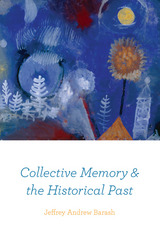 Collective Memory and the Historical Past
Jeffrey Andrew Barash
University of Chicago Press, 2016 There is one critical way we honor great tragedies: by never forgetting. Collective remembrance is as old as human society itself, serving as an important source of social cohesion, yet as Jeffrey Andrew Barash shows in this book, it has served novel roles in a modern era otherwise characterized by discontinuity and dislocation. Drawing on recent theoretical explorations of collective memory, he elaborates an important new philosophical basis for it, one that unveils profound limitations to its scope in relation to the historical past.
Crucial to Barash’s analysis is a look at the radical transformations that symbolic configurations of collective memory have undergone with the rise of new technologies of mass communication. He provocatively demonstrates how such technologies’ capacity to simulate direct experience—especially via the image—actually makes more palpable collective memory’s limitations and the opacity of the historical past, which always lies beyond the reach of living memory. Thwarting skepticism, however, he eventually looks to literature—specifically writers such as Walter Scott, Marcel Proust, and W. G. Sebald—to uncover subtle nuances of temporality that might offer inconspicuous emblems of a past historical reality.
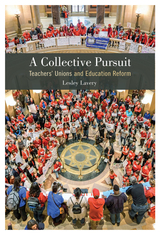 A Collective Pursuit: Teachers' Unions and Education Reform
Lesley Lavery
Temple University Press, 2020 Teachers’ unions are the organizations responsible for safeguarding the conditions of teachers’ employment. Union supporters claim strong synergies between teachers’ interests and students’ interests, but critics of unions insist that the stance of teachers in collective bargaining may disadvantage students as unions reduce the power of administrators to manage, remove, reward or retain excellent teachers. In A Collective Pursuit, Lesley Laveryunpacks how teachers’ unions today are fighting for contracts that allow them to earn a decent living and build “schools all students deserve.” She explains the form and function of the nation’s largest teachers’ unions. Lavery then explores unionization campaigns in the Twin Cities charter schools. A Collective Pursuit also examines teacher strikes and contract negotiations, school finance and finance reform, and district and union attempts to address racial achievement gaps, to provide a context for understanding the economic, political, and demographic forces that inspire teachers to improve conditions for students. A Collective Pursuit emphasizes that while teachers’ unions serve a traditional, economic role, they also provide a vast array of valuable services to students, educators, parents, and community members.
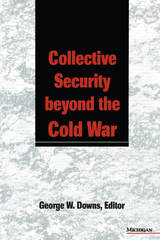 Collective Security beyond the Cold War
George W. Downs, Editor
University of Michigan Press, 1994 The fall of the Soviet empire, like the redistributions of power that followed the fall of Napoleon and the end of the two world wars, has focused attention on schemes that advertise an ability to prevent the return of conflict and promote cooperation. Chief among these is the controversial idea of a new collective security system or a redesigned United Nations. Advocates view such an institution as an inevitable step in human evolution and the basic prerequisite for long-term stability and peace. Critics consider the idea a pipe dream that has been historically and theoretically discredited. This volume reexamines the idea of collective security, weighing the arguments for and against it and assessing its potential for coping with the regional and global security problems of a post-Cold War world. Six of the essays contained herein examine collective security from a theoretical and historical perspective; three evaluate its potential to manage problems in the former Soviet empire, the Middle East, and Europe. The recurring theme of Collective Security beyond the Cold War is the importance of reviewing the potential advantages of ambitious but imperfect collective security systems and the virtues of systems less ambitious than the League of Nations. The factors limiting the potential of collective security systems are no different from those that limit the potential of other forms of state collective action, such as alliances. How great a problem these factors pose for collective security arrangements depends on the design of the system and the setting.
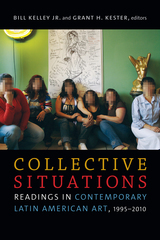 Collective Situations: Readings in Contemporary Latin American Art, 1995–2010
Bill Kelley Jr. and Grant H. Kester, editors
Duke University Press, 2017 In Collective Situations scholars, artists, and art collectives present a range of socially engaged art practices that emerged in Latin America during the Pink Tide period, between 1995 and 2010. This volume's essays, interviews, and artist's statements—many of which are appearing in English for the first time—demonstrate the complex relationship between moments of political transformation and artistic production. Whether addressing human rights in Colombia, the politics of urban spaces in Brazil, the violent legacy of military dictatorships in the region, or art’s intersection with public policy, health, and the environment, the contributors outline the region’s long-standing tradition of challenging ideas about art and the social sphere through experimentation. Introducing English-language readers to some of the most dynamic and innovative contemporary art in Latin America, Collective Situations documents new possibilities for artistic practice, collaboration, and creativity in ways that have the capacity to foster vibrant forms of democratic citizenship.
Contributors
Gavin Adams, Mariola V. Alvarez, Gustavo Buntinx, María Fernanda Cartagena, David Gutiérrez Castañeda, Fabian Cereijido, Paloma Checa-Gismero, Kency Cornejo, Raquel de Anda, Bill Kelley Jr., Grant H. Kester, Suzanne Lacy, Ana Longoni, Rodrigo Martí, Elize Mazadiego, Annie Mendoza, Alberto Muenala, Prerana Reddy, Maria Reyes Franco, Pilar Riaño-Alcalá, Juan Carlos Rodríguez
The Collectivization of Agriculture in Communist Eastern Europe: Comparison and Entanglements
Constantin Iordachi
Central European University Press, 2014 This book explores the interrelated campaigns of agricultural collectivization in the USSR and in the communist dictatorships established in Soviet-dominated Eastern Europe. Despite the profound, long-term societal impact of collectivization, the subject has remained relatively underresearched. The volume combines detailed studies of collectivization in individual Eastern European states with issueoriented comparative perspectives at regional level. Based on novel primarysources, it proposes a reappraisal of the theoretical underpinnings and research agenda of studies on collectivization in Eastern Europe.The contributions provide up-to-date overviews of recent research in the field and promote new approaches to the topic, combining historical comparisons with studies of transnational transfers and entanglements.
 The College Administrator’s Survival Guide
C. K. Gunsalus
Harvard University Press, 2006 Late one afternoon, as you are organizing your new office as department chair, one of the senior members of the department drops by. He affably informs you of his plans for the coming semester: that contrary to the published class schedule, he only teaches on Tuesday afternoon, Wednesday, and Thursday morning, so as to have the weekends free for travel; that he expects the office staff to start his coffeemaker by 10 a.m. sharp on his teaching days; and that since he hasn’t been assigned a research assistant, his teaching assistant will do research tasks, including errands. What do you say? What do you do?
Never mind budgets or curriculum reform: staff problems can be the most thorny of any academic administrator’s job. Every day, professors who have never run anything bigger than a seminar find themselves in charge of a complex and volatile organization called a Department of English (or Biology, or Sociology, or Textile Marketing). What should they do?
In this book, a widely respected advisor on academic administration and ethics offers tips, insights, and tools on handling complaints, negotiating disagreements, responding to accusations of misconduct, and dealing with difficult personalities. With humor and generosity, C. K. Gunsalus applies scenarios based on real-life cases, examples from negotiation, law, and child-rearing to guide novice (and experienced) academic administrators through the dilemmas of management in not-entirely-manageable environments.
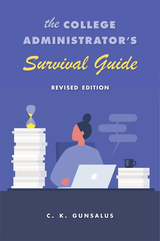 The College Administrator’s Survival Guide: Revised Edition
C.K. Gunsalus
Harvard University Press, 2021 The book that every dean and department chair needs to survive—and thrive—in the twenty-first-century university.
First released in 2006, The College Administrator’s Survival Guide has served as the bible for a generation of provosts, deans, department chairs, and program directors. Shrewd administrators have returned to the guide time and again for C. K. Gunsalus’s advice on handling complaints, negotiating disagreements, and dealing with difficult personalities. Now, in this revised and updated edition, Gunsalus guides rookie administrators and seasoned veterans through today’s most pressing higher-education challenges.
These days academic leaders must respond to heightened demands for transparency and openness. These demands are intensified by social media, which increases the visibility of university conflicts and can foster widespread misinformation about campus affairs. Meanwhile, institutions have become flatter, with administrators expected to work more closely with faculty, students, and a range of professionals even as support staffs shrink. Between the ever-replenishing inbox, the integration of often-exasperating management systems into every dimension of academic life, and the new demands of remote learning, deans and department heads are juggling more balls than ever before. Tightening budgets have already forced administrators into more difficult choices and, in the wake of COVID-19, there will be no relief from financial constraints.
From #MeToo to partisan battles over curricula and funding, college and university leaders need more savvy and greater sensitivity than ever. What hasn’t changed are the challenges of dealing with difficult people and the importance of creating and maintaining environments in which faculty, staff, and students have the support they need to do their best work. The College Administrator’s Survival Guide provides the tools to keep cool and get the job done.
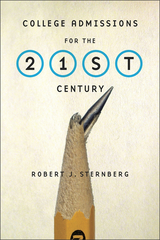 College Admissions for the 21st Century
Robert J. Sternberg
Harvard University Press, 2010 SATs, ACTs, GPAs. Everyone knows that these scores can’t tell a college everything that’s important about an applicant. But what else should admissions officers look for, and how can they know it when they see it? In College Admissions for the 21st Century a leading researcher on intelligence and creativity offers a bold and practical approach to college admissions testing.
Standardized tests are measures of memory and analytical skills. But the ever-changing global society beyond a college campus needs more than just those qualities, argues Robert Sternberg. Tomorrow’s leaders and citizens also need creativity, practicality, and wisdom.
How can the potential for those complex qualities be measured? One answer is “Kaleidoscope,” a new initiative in undergraduate admissions, first used at Tufts University. Its open-ended questions for applicants, and the means used to score the answers, gives applicants and admissions officers the chance to go beyond standardized tests.
Does it work? As Sternberg describes in detail, Kaleidoscope measures predicted first-year academic success, over and above SATs and high school GPAs, and predicted first-year extracurricular activities, leadership, and active citizenship as well. And every year that Kaleidoscope measures were used, the entering class’s average SATs and high school GPAs went up too.
What worked at Tufts can work elsewhere. New kinds of assessments, like Kaleidoscope, can liberate many colleges and students from the narrowness of standardized tests and inspire new approaches to teaching for new kinds of talented, motivated citizens of the world.
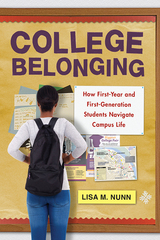 College Belonging: How First-Year and First-Generation Students Navigate Campus Life
Lisa M. Nunn
Rutgers University Press, 2021 College Belonging reveals how colleges’ and universities’ efforts to foster a sense of belonging in their students are misguided. Colleges bombard new students with the message to “get out there!” and “find your place” by joining student organizations, sports teams, clubs and the like. Nunn shows that this reflects a flawed understanding of what belonging is and how it works. Drawing on the sociological theories of Emile Durkheim, College Belonging shows that belonging is something that members of a community offer to each other. It is something that must be given, like a gift. Individuals cannot simply walk up to a group or community and demand belonging. That’s not how it works. The group must extend a sense of belonging to each and every member. It happens by making a person feel welcome, to feel that their presence matters to the group, that they would be missed if they were gone. This critical insight helps us understand why colleges' push for students simply to “get out there!” does not always work.
 College Choice in America
Charles F. Manski and David A. Wise
Harvard University Press, 1983 The most crucial choice a high school graduate makes is whether to attend college or to go to work. Here is the most sophisticated study of the complexities behind that decision.
Based on a unique data set of nearly 23,000 seniors from more than 1,300 high schools who were tracked over several years, the book treats the following questions in detail: Who goes to college? Does low family income prevent some young people from enrolling, or does scholarship aid offset financial need? How important are scholastic aptitude scores, high school class rank, race, and socioeconomic background in determining college applications and admissions? Do test scores predict success in higher education?
Using the data from the National Longitudinal Study of the Class of 1972, the authors present a set of interrelated analyses of student and institutional behavior, each focused on a particular aspect of the process of choosing and being chosen by a college. Among their interesting findings: most high school graduates would be admitted to some four-year college of average quality, were they to apply; applicants do not necessarily prefer the highest-quality school; high school class rank and SAT scores are equally important in college admissions; federal scholarship aid has had only a small effect on enrollments at four-year colleges but a much stronger effect on attendance at two-year colleges; the attention paid to SAT scores in admissions is commensurate with the power of the scores in predicting persistence to a degree. This clearly written book is an important source of information on a perpetually interesting topic.
 College Choices: The Economics of Where to Go, When to Go, and How to Pay for It
Edited by Caroline M. Hoxby
University of Chicago Press, 2004 Aspiring college students and their families have many options. A student can attend an in-state or an out-of-state school, a public or private college, a two-year community college program or a four-year university program. Students can attend full-time and have a bachelor of arts degree by the age of twenty-three or mix college and work, progressing toward a degree more slowly. To make matters more complicated, the array of financial aid available is more complex than ever. Students and their families must weigh federal grants, state merit scholarships, college tax credits, and college savings accounts, just to name a few.
In College Choices, Caroline Hoxby and a distinguished group of economists show how students and their families really make college decisions—how they respond to financial aid options, how peer relationships figure in the decision-making process, and even whether they need mentoring to get through the admissions process. Students of all sorts are considered—from poor students, who may struggle with applications and whether to continue on to college, to high aptitude students who are offered "free rides" at elite schools. College Choices utilizes the best methods and latest data to analyze the college decision-making process, while explaining how changes in aid and admissions practices inform those decisions as well.
 The College Fear Factor: How Students and Professors Misunderstand One Another
Rebecca D. Cox
Harvard University Press, 2011 They’re not the students strolling across the bucolic liberal arts campuses where their grandfathers played football. They are first-generation college students—children of immigrants and blue-collar workers—who know that their hopes for success hinge on a degree.
But college is expensive, unfamiliar, and intimidating. Inexperienced students expect tough classes and demanding, remote faculty. They may not know what an assignment means, what a score indicates, or that a single grade is not a definitive measure of ability. And they certainly don’t feel entitled to be there. They do not presume success, and if they have a problem, they don’t expect to receive help or even a second chance.
Rebecca D. Cox draws on five years of interviews and observations at community colleges. She shows how students and their instructors misunderstand and ultimately fail one another, despite good intentions. Most memorably, she describes how easily students can feel defeated—by their real-world responsibilities and by the demands of college—and come to conclude that they just don’t belong there after all.
Eye-opening even for experienced faculty and administrators, The College Fear Factor reveals how the traditional college culture can actually pose obstacles to students’ success, and suggests strategies for effectively explaining academic expectations.
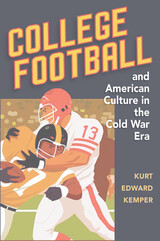 College Football and American Culture in the Cold War Era
Kurt Edward Kemper
University of Illinois Press, 2009 The Cold War era spawned a host of anxieties in American society, and in response, Americans sought cultural institutions that reinforced their sense of national identity and held at bay their nagging insecurities. They saw football as a broad, though varied, embodiment of national values. College teams in particular were thought to exemplify the essence of America: strong men committed to hard work, teamwork, and overcoming pain. Toughness and defiance were primary virtues, and many found in the game an idealized American identity. In this book, Kurt Kemper charts the steadily increasing investment of American national ideals in the presentation and interpretation of college football, beginning with a survey of the college game during World War II. From the Army-Navy game immediately before Pearl Harbor, through the gradual expansion of bowl games and television coverage, to the public debates over racially integrated teams, college football became ever more a playing field for competing national ideals. Americans utilized football as a cultural mechanism to magnify American distinctiveness in the face of Soviet gains, and they positioned the game as a cultural force that embodied toughness, discipline, self-deprivation, and other values deemed crucial to confront the Soviet challenge. Americans applied the game in broad strokes to define an American way of life. They debated and interpreted issues such as segregation, free speech, and the role of the academy in the Cold War. College Football and American Culture in the Cold War Era offers a bold new contribution to our understanding of Americans' assumptions and uncertainties regarding the Cold War.
 College Girls: A Century in Fiction
Shirley Marchalonis
Rutgers University Press, 1995 Since the opening of Vassar College in 1865, objections to higher education for women have ranged from charges that females were mentally and physically incapable of learning to the belief that educating women would destroy society. Underlying all arguments was the folk wisdom which declared that women could not live and work together. To counteract such beliefs, women’s colleges tried to create a special kind of space and new role models that would allow women to exist for a short time in idyllic (or, at least, idealized) conditions. The debate over women’s education, for the good or ill of society, generated a great deal of "print," including short stories and novels. Shirley Marchalonis guides us through the history of this fiction, its depiction of the complexities of the college experience, and the conflicting attitudes that teetered between fascination and fear, celebration and regret. Using novels, short stories, and some juvenile fiction from 1865 to 1940--all of it specifically about college “girls”--she examines these ideas, the way they developed over time, and their significance in understanding women’s education and women’s history. The debate over separate colleges for women continues to this day and can be better understood in the context of this informative and entertaining look at the past.
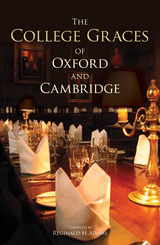 The College Graces of Oxford and Cambridge
Compiled by Reginald H. Adams
Bodleian Library Publishing, 2013 The custom of formal dining at Oxford and Cambridge dates back to the earliest days of college life. Before each dinner, according to ancient statutes, grace must be said in Latin, and, although the text and nature of grace for each college has changed over the years, the tradition itself remains current to this day.
Following a historical introduction, The College Graces of Oxford and Cambridge reproduces in chronological order the full Latin texts of all the graces alongside facing English-language translations. Also included are the special graces reserved for feast days, as well as an explanation of some of the traditions that accompany them, including the trumpeters that summon students to dinner to the use of the Sconce Cup and the Rose Bowl.
From the twelfth-century monastic texts and the two-word graces of the nineteenth century to the new graces written for the modern age, this meticulous collection reveals how the tradition of the Latin grace has survived and evolved over the centuries and offers a rare glimpse inside the private halls of Oxford and Cambridge.
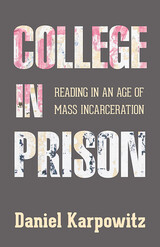 College in Prison: Reading in an Age of Mass Incarceration
Karpowitz, Daniel
Rutgers University Press, 2017 Over the years, American colleges and universities have made various efforts to provide prisoners with access to education. However, few of these outreach programs presume that incarcerated men and women can rise to the challenge of a truly rigorous college curriculum. The Bard Prison Initiative is different.
College in Prison chronicles how, since 2001, Bard College has provided hundreds of incarcerated men and women across the country access to a high-quality liberal arts education. Earning degrees in subjects ranging from Mandarin to advanced mathematics, graduates have, upon release, gone on to rewarding careers and elite graduate and professional programs. Yet this is more than just a story of exceptional individuals triumphing against the odds. It is a study in how the liberal arts can alter the landscape of some of our most important public institutions giving people from all walks of life a chance to enrich their minds and expand their opportunities.
Drawing on fifteen years of experience as a director of and teacher within the Bard Prison Initiative, Daniel Karpowitz tells the story of BPI’s development from a small pilot project to a nationwide network. At the same time, he recounts dramatic scenes from in and around college-in-prison classrooms pinpointing the contested meanings that emerge in moments of highly-charged reading, writing, and public speaking. Through examining the transformative encounter between two characteristically American institutions—the undergraduate college and the modern penitentiary—College in Prison makes a powerful case for why liberal arts education is still vital to the future of democracy in the United States.
 College Knowledge: 101 Tips
David Schoem
University of Michigan Press, 2005 Practical advice on every aspect of campus life for students headed off to college
What educators and students have to say about David Schoem's College Knowledge:
"David Schoem is a devoted teacher. He recognizes the challenges of preparing to be a responsible, compassionate, successful adult in the twenty-first century. He has written a book that can make a meaningful difference in the lives of its readers."
---Jeffrey Lehman, President, Cornell University
"College Knowledge is full of wise, straight-to-the-point guidance for success both in and out of the classroom. Every first-year student should read-a--nd heed---David Schoem's advice. Though written for students, parents of first-year students can learn from it, too!"
---Beverly Daniel Tatum, President, Spelman College
"College Knowledge is a deceptively straightforward guide appropriate for any student entering higher education. As both a parent and an educator, I highly recommend this sage, yet easy-to-digest guide as a must for the college-bound young adult."
---Pamela Horne, Director of Admissions, Michigan State University
"Professor Schoem's insights and encouragement helped me to create many of my most satisfying and lasting experiences during college. This book captures his infectious enthusiasm and will inspire readers to take risks in exploring all that college has to offer."
---Miriam Vogel, former Schoem student
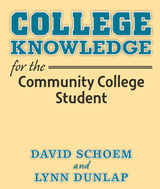 College Knowledge for the Community College Student
David Schoem and Lynn Dunlap
University of Michigan Press, 2011 Most students arrive at college not fully aware of just how different the college experience is from other prior experiences. The intellectual and social expectations, as well as the rules and regulations, are different, and not just different from high school.
While all college students must learn to negotiate the transition to college, the challenges for those who enroll in community colleges are unique. Many community college students work, and many work full-time. Many also have family responsibilities—children, partners, and aging parents. A majority of community college students are the first in their family to enroll in college. Some students—both from abroad and from the United States--do not speak English fluently. Some students are retired military personnel. and some are seeking to make a career change. This book strives to speak to this diversity as well as to situations specific to today’s U.S. community college students.
College Knowledge for the Community College Student is a road map and tour guide for a successful community college experience and education. Tips are based on research and the wisdom and advice of other community college students and are designed to help students learn, succeed, graduate, and have a rewarding and fulfilling community college experience.
 College Knowledge for the Jewish Student: 101 Tips
David Schoem
University of Michigan Press, 2010 "Students and parents alike will benefit from reading David Schoem's well-written, lively, and documented guide."
---Elie Wiesel “This is a wonderful sequel to Schoem’s very successful College Knowledge: 101 Tips. As I read through this new volume, I was constantly struck that the advice offered would help all students who approach the college experience with distinctive cultural backgrounds and commitments. Indeed all prospective college students, and their parents, can benefit from this serious yet delightful, well-written and incisive book of advice. I intend to buy one for each of my grandchildren.”
---Harold Shapiro, former president, Princeton University; former president, University of Michigan For the individual Jewish student who enters college, it is critical that he or she come intellectually, emotionally, and spiritually prepared for the academic and social experience that awaits. College is a qualitatively different experience than high school, and students’ expectations need to be set appropriately. The transition from high school to college is so significant that it can be difficult for most without some preparation. College Knowledgefor the Jewish Student: 101 Tips is the perfect guide for students heading off to college with high expectations for learning, academic success, personal growth, and independence. Through lively tips and compelling student stories about life at college, it offers thoughtful, practical information for every Jewish student who wants to make a successful transition. College Knowledge for the Jewish Student includes tips on the academic aspects of college life, like communicating with faculty, learning what is where on campus, where to go for help with coursework, how to manage one’s time for a balanced experience, etc. In addition, it offers advice on dealing with family, finances, health, and safety, as well as the many social and emotional aspects of this important rite of passage.
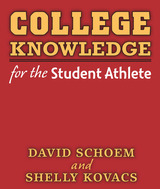 College Knowledge for the Student Athlete
David Schoem and Shelly Kovacs
University of Michigan Press, 2011 This book was written to support the academic success of student athletes—whether at a large or small university or college, whether team or individual sport, whether women or men, whether on scholarship or not. While all college students must learn to negotiate the complex transition from high school to college, student athletes face unique challenges, including the complicated set of regulations set out by the NCAA and individual conferences that determine eligibility. The current environment in college athletics makes it even more critical that student athletes understand what they need to do academically and how to avoid potential situations that could jeopardize their athletic careers. College Knowledge for the Student Athlete is a road map and tour guide for a successful career as a student athlete. Tips are based on research and the authors’ experience, as well as the wisdom and advice of hundreds of former student athletes.
 College Unranked: Ending the College Admissions Frenzy
Lloyd Thacker
Harvard University Press Stressed and sleepless, today's high school students race from school to activities in their most competitive game of all: admission to a top-ranked, prestigious university. But is relying on magazine rankings and a vague sense of "prestige" really the best way to choose a college? Is hiring test prep teachers and consultants really the best way to shape your own education?
In this book, edited by a veteran admissions counselor, a passionate advocate for students, the presidents and admission deans of leading colleges and universities--like Dartmouth, Vanderbilt, Harvard--remind readers that college choice and admission are a matter of fit, not of winning a prize, and that many colleges are "good" in different ways. They call for bold changes in admissions policies and application strategies, to help both colleges and applicants to rediscover what college is really for. It's not just a ticket to financial success, but a once-in-a-lifetime chance to explore new worlds of knowledge.
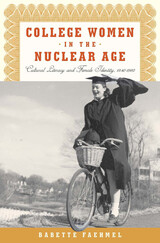 College Women In The Nuclear Age: Cultural Literacy and Female Identity, 1940-1960
Babette Faehmel
Rutgers University Press, 2011 In the popular imagination, American women during the time between the end of World War II and the 1960s—the era of the so-called “feminine mystique”—were ultraconservative and passive. College Women in the Nuclear Age takes a fresh look at these women, showing them actively searching for their place in the world while engaging with the larger intellectual and political movements of the times. Drawing from the letters and diaries of young women in the Cold War era, Babette Faehmel seeks to restore their unique voices and to chronicle their collective ambitions. She also explores the shifting roles that higher education played in establishing these hopes and dreams, making the case that the GI Bill served to diminish the ambitions of many American women even as it opened opportunities for many American men. A treasure-trove of original research, the book should stimulate scholarly discussion and captivate any reader interested in the thoughts and lives of American women.
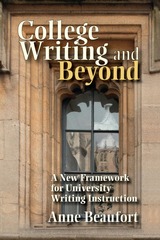 College Writing and Beyond: A New Framework for University Writing Instruction
Anne Beaufort
Utah State University Press, 2007 Composition research consistently demonstrates that the social context of writing determines the majority of conventions any writer must observe. Still, most universities organize the required first-year composition course as if there were an intuitive set of general writing "skills" usable across academic and work-world settings. In College Writing and Beyond: A New Framework for University Writing Instruction, Anne Beaufort reports on a longitudinal study comparing one student’s experience in FYC, in history, in engineering, and in his post-college writing. Her data illuminate the struggle of college students to transfer what they learn about "general writing" from one context to another. Her findings suggest ultimately not that we must abolish FYC, but that we must go beyond even genre theory in reconceiving it. Accordingly, Beaufort would argue that the FYC course should abandon its hope to teach a sort of general academic discourse, and instead should systematically teach strategies of responding to contextual elements that impinge on the writing situation. Her data urge attention to issues of learning transfer, and to developmentally sound linkages in writing instruction within and across disciplines. Beaufort advocates special attention to discourse community theory, for its power to help students perceive and understand the context of writing.
 Colleges in Controversy: The Jesuit Schools in France from Revival to Suppression, 1815–1880
John W. Padberg, S.J.
Harvard University Press, 1969 Until the suppression of the Society of Jesus in 1773 by Pope Clement XIV, the Jesuits had been the undisputed “schoolmasters of Europe.” In France, especially, the educational system of the Society had attained its most widespread development and its greatest fame. The nineteenth-century colleges, formed after the revival of the Society in 1814, never reached the number, size, or influence of their predecessors; but for their time and for the new obstacles they faced, these schools were important. Founded during a period of growing secularization, they faced the constant threat of political attack. Indeed, both their admirers and their critics believed that the Jesuit schools fostered in their graduates distinctive attitudes toward state and society.
John W. Padberg, S.J., has written the first full-length study of these colleges, from their revival in 1815 to their suppression in 1880. Drawing almost exclusively on archival material not previously utilized, Father Padberg places his study against the background of anti-clericalism, revolution, the Second Empire, and the first decade of the Third Republic. He describes the founding of the schools; their resources; their curriculum structure and content; their inner life—religious practices, the daily order, the social structure; and their relation to the political and social milieu of the times. He also discusses the backgrounds and ideological orientations of the faculty and students.
The author first portrays life in the semi-clandestine seminary schools in France from 1815 to 1828. He then depicts the experiences of the exile colleges on the borders of France. With the passage of the Falloux Law of 1850, Jesuit colleges became legal in France for the first time since the 18th century. Father Padberg describes the subsequent rush to found new schools and the resultant problems of lack of personnel, financial crises, and governmental suspicion. He discusses in detail the inner lives of these seventeen new colleges.
During the early years of the Third Republic, the Jesuits founded eleven more colleges. But the mutual fear and misunderstanding between the Society and the Republic and the growing anti-clericalism of the government came to a climax in 1880, when Jules Ferry expelled the Jesuits from these institutions and made impossible their control over any such schools in France.
Father Padberg concludes that during these sixty-five years the French Jesuit schools had little room to maneuver. Externally, government suspicion and hostility circumscribed them. Internally, they reacted to this hostility, which antedated the French Revolution, by the inability to adapt to contemporary circumstances their commitment to the values of a humane and Christian education.
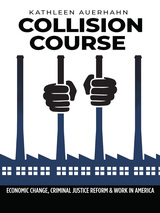 Collision Course: Economic Change, Criminal Justice Reform, and Work in America
Kathleen Auerhahn
Rutgers University Press, 2022 This book is about the convergence of trends in two American institutions – the economy and the criminal justice system. The American economy has radically transformed in the past half-century, led by advances in automation technology that have permanently altered labor market dynamics. Over the same period, the U.S. criminal justice system experienced an unprecedented expansion at great cost. These costs include not only the $80 billion annually in direct expenditures on criminal justice, but also the devastating impacts experienced by justice-involved individuals, families, and communities.
Recently, a widespread consensus has emerged that the era of “mass incarceration” is at an end, reflected in a declining prison population. Criminal justice reforms such as diversion and problem-solving courts, a renewed focus on reentry, and drug policy reform have as their goal keeping more individuals with justice system involvement out of prisons, in the community and subsequently in the labor force, which lacks the capacity to accommodate these additional would-be workers. This poses significant problems for criminal justice practice, which relies heavily on employment as a signal of offenders’ intentions to live a law-abiding lifestyle. The diminished capacity of the economy to utilize the labor of all who have historically been expected to work presents significant challenges for American society. Work, in the American ethos is the marker of success, masculinity and how one “contributes to society.” What are the consequences of ignoring these converging structural trends? This book examines these potential consequences, the meaning of work in American society, and suggests alternative redistributive and policy solutions to avert the collision course of these economic and criminal justice policy trends.
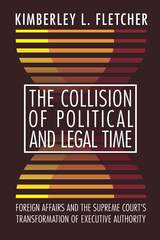 The Collision of Political and Legal Time: Foreign Affairs and the Supreme Court's Transformation of Executive Authority
Kimberley L. Fletcher
Temple University Press, 2018 How does the U.S. Supreme Court shape constitutional and political development? In The Collision of Political and Legal Time, Kimberley Fletcher answers this question by analyzing the key role the Court has played in interpreting presidential decision-making in the area of foreign affairs since 1936. She reconsiders the Curtiss-WrightCourt, which instituted a new constitutional order that established plenary powers independent of congressional delegation. Fletcher also reexamines Japanese internment and detainee cases, demonstrating the entrenchment of the new constitutional order and how presidential ascendency becomes institutionalized. Other cases, such as Youngstown, illustrate how the Court, during a time of war, will check Executive power and authority. The Collision of Political and Legal Time examines these cases and controversies in foreign policymaking through the twentieth and into the twenty-first centuries to show that the Court is not passive or constrained; it does not merely follow politics or the majority coalition. Through her nuanced analysis, Fletcher makes a larger argument about the role of the U.S. Supreme Court as an agent of change, which ultimately transforms power, shapes politics, and redirects history.
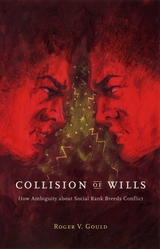 Collision of Wills: How Ambiguity about Social Rank Breeds Conflict
Roger V. Gould
University of Chicago Press, 2003 Minor debts, derisive remarks, a fight over a parking space, butting in line—these are the little things that nevertheless account for much of the violence in human society. But why? Roger V. Gould considers this intriguing question in Collision of Wills. He argues that human conflict is more likely to occur in symmetrical relationships—among friends or social equals—than in hierarchical ones, wherein the difference of social rank between the two individuals is already established.
This, he maintains, is because violence most often occurs when someone wants to achieve superiority or dominance over someone else, even if there is no substantive reason for doing so. In making the case for this original idea, Gould explores a diverse range of examples, including murders, blood feuds, vendettas, revolutions, and the everyday disagreements that compel people to act violently. The result is an intelligent and provocative work that restores the study of conflict to the center of social inquiry.
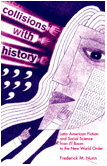 Collisions With History: Latin American Fiction and Social Science from “El Boom” to the New World Order
Frederick M. Nunn
Ohio University Press, 2001 Latin American intellectuals have traditionally debated their region’s history, never with so much agreement as in the fiction, commentary, and scholarship of the late twentieth century. Collisions with History shows how “fictional histories” of discovery and conquest, independence and early nationhood, and the recent authoritarian past were purposeful revisionist collisions with received national versions. These collisions occurred only because of El Boom, thus making Latin America’s greatest literary movement a historical phenomenon as well. Frederick M. Nunn discusses the cataclysmic view of history conveyed in Boom novels and examines the thought and self-perception of selected authors whose political activism enhanced the appeal of their works—historical and otherwise: Alejo Carpentier, Carlos Fuentes, Gabriel García Márquez, and Augusto Roa Bastos; Julio Cortázar, Isabel Allende, Mario Vargas Llosa, and Darcy Ribeiro. Collisions with History demonstrates how their commentary on history, literature, politics, and international affairs reveals a conscious sense of purpose. From between the lines of their nonfiction emerges a consensus that outside forces have defined as well as controlled Latin America’s history. Professor Nunn also suggests that, with novelists now no longer very interested in colliding with history, it may fall to social scientists to speak for what remains of the region’s past in the New World Order.
The Colloquial Short in China: A Study of the San-Yen Collections
John Lyman Bishop
Harvard University Press John Lyman Bishop has included English versions of four previously untranslated representative San-yen stories: a detective story, an erotic story, an exemplary tale, and a pseudo-historical heroic story. The Latin, German, French, and English translations of San-yen stories are listed in the appendix. Although this book will be of primary interest to specialists, the stories make highly entertaining reading.
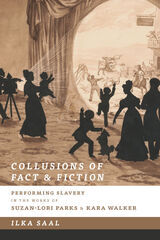 Collusions of Fact and Fiction: Performing Slavery in the Works of Suzan-Lori Parks and Kara Walker
Saal, Ilka
University of Iowa Press, 2021 Collusions of Fact and Fiction traces a generational shift in late twentieth-century African American cultural engagements with the history and legacies of transatlantic slavery. With a focus on works by playwright Suzan-Lori Parks and visual artist Kara Walker, the book explores how, in comparison to the first wave of neo-slave narratives of the 1970s and 1980s, artists of the 1990s and early 2000s tend to approach the past from the vantage point of a liberal entanglement of fact and fiction as well as a highly playful, often humorous, and sometimes irreverent signifying on entrenched motifs, iconographies, and historiographies.
Saal argues that the attempt to reconstruct or recuperate the experience of African Americans under slavery is no longer at stake in the works of artists growing up in the post–Civil Rights era. Instead, they lay bare the discursive dimension of our contemporary understanding of the past and address the continued impact of its various verbal and visual signs upon contemporary identities. In this manner, Parks and Walker stake out new possibilities for engaging the past and inhabiting the present and future.
Coloman, King of Galicia and Duke of Slavonia (1208-1241): Medieval Central Europe and Hungarian Power
Márta Font
Arc Humanities Press, 2019 A figure of crucial importance to scholarship on western and eastern Europe alike, King Coloman (1208–1241) here receives long-overdue scholarly treatment as a key figure of the thirteenth century. The Árpád prince ruled over a vast area in Central Europe which remained largely affiliated to the Western Church, territories that comprise modern-day Hungary, Slovakia, Croatia, and Bosnia. This study draws on Hungarian and other research that is inaccessible outside the region and places Coloman at the crossroads of Latin Christendom, Eastern Orthodoxy, and the Mongol Empire.
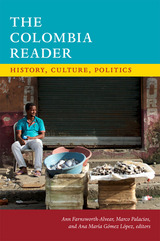 The Colombia Reader: History, Culture, Politics
Ann Farnsworth-Alvear, Marco Palacios, and Ana María Gómez López, editors
Duke University Press, 2017 Containing over one hundred selections—most of them published in English for the first time—The Colombia Reader presents a rich and multilayered account of this complex nation from the colonial era to the present. The collection includes journalistic reports, songs, artwork, poetry, oral histories, government documents, and scholarship to illustrate the changing ways Colombians from all walks of life have made and understood their own history. Comprehensive in scope, it covers regional differences; religion, art, and culture; the urban/rural divide; patterns of racial, economic, and gender inequalities; the history of violence; and the transnational flows that have shaped the nation. The Colombia Reader expands readers' knowledge of Colombia beyond its reputation for violence, contrasting experiences of conflict with the stability and significance of cultural, intellectual, and economic life in this plural nation.
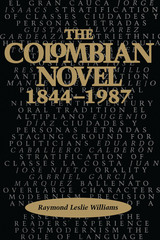 The Colombian Novel, 1844-1987
By Raymond Leslie Williams
University of Texas Press, 1991 Novels such as One Hundred Years of Solitude have awakened English-language readers to the existence of Colombian literature in recent years, but Colombia has a well-established literary tradition that far predates the Latin American "boom." In this pathfinding study, Raymond Leslie Williams provides an overview of seventeen major authors and more than one hundred works spanning the years 1844 to 1987. After an introductory discussion of Colombian regionalism and novelistic development, Williams considers the novels produced in Colombia's four semi-autonomous regions. The Interior Highland Region is represented by novels ranging from Eugenio Díaz' Manuela to Eduardo Caballero Calderón's El buen salvaje. The Costa Region is represented by Juan José Nieto's Ingermina to Alvaro Cepeda Samudio's La casa grande and Gabriel García Márquez' Cien años de soledad; the Greater Antioquian Region by Tomás Carrasquilla's Frutos de mi tierra to Manuel Mejía Vallejo's El día señalado; and the Greater Cauca Region by Jorge Isaacs' Maria to Gustavo Alvarez Gardeazábal's El bazar de los idiotas. A discussion of the modern and postmodern novel concludes the study, with special consideration given to the works of García Márquez and Moreno-Durán. Written in a style accessible to a wide audience, The Colombian Novel will be a foundational work for all students of Colombian culture and Latin American literature.
The Colonel
Mahmoud Dowlatabadi
Haus Publishing, 2011 On a pitch black, rainy night in a small Iranian town, the colonel paces back and forth inside his house waiting for the inevitable – the knock on the door from the secret police. From there he will be taken to the tortured body of his youngest daughter.
The Islamic Revolution, like so many revolutions before it, is devouring its own children. The colonel must bury his daughter before sunrise, alone, without ceremony. So who is to blame? What follows is a shocking diatribe against the failures of the Iranian Left over the last sixty years.
Confrontational, angry, sad and lyrical, Mahmoud Dowlatabadi leaves no taboo unbroken as he asks three generations who have suffered under oppressive and brutal regimes, how has it come to this.
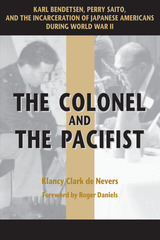 The Colonel and The Pacifist
Klancy Clark De Nevers
University of Utah Press, 2004 Executive Order 9066. In February 1942, ten weeks after the Japanese attack on Pearl Harbor, President Franklin D. Roosevelt put his signature to a piece of paper that allowed the forced removal of Americans of Japanese ancestry from their West Coast homes, and their incarceration in makeshift camps. Those are the facts. But two faces emerge from behind these facts: Karl R. Bendetsen, the Army major who was promoted to full colonel and placed in charge of the evacuation after formulating the concept of 'military necessity,' and who penned the order Roosevelt signed, and Perry H. Saito, a young college student, future Methodist minister, and former neighbor from Bendetsen’s hometown of Aberdeen, Washington who was incarcerated in Tule Lake Relocation Camp.
The Colonel and the Pacifist tells the story of two men caught up in one of the most infamous episodes in American history. While they never met, Bendetsen and Saito’s lives touched tangentially—from their common hometown to their eventual testimony during the 1981 hearings of the Commission on the Wartime Relocation and Internment of Civilians. In weaving together these contrasting stories, Klancy Clark de Nevers not only exposes unknown or little known aspects of World War II history, she also explores larger issues of racism and war that resonate through the years and ring eerily familiar to our post-9/11 ears.
 Colonel Benjamin Stephenson and the History of Early Illinois
Sidney G. Denny, with a foreword by Jason Stacy
Southern Illinois University Press, 2025 Rediscovering a forgotten Illinois founding father
In early 2024, the Director of the Colonel Benjamin Stephenson House in Edwardsville, Illinois, discovered an unpublished manuscript among the files of Sidney G. Denny, a longtime Friends of the Colonel Benjamin Stephenson House Board member who had passed away just months before. The manuscript compiled the materials from a decade’s worth of articles Denny had written for the House’s newsletter, the Spectator, on the history of the House, Benjamin Stephenson, and early Illinois—history that, without Denny, would have been lost to time.
Colonel Benjamin Stephenson, a founding father of both the city of Edwardsville and the state of Illinois, played a crucial role in the emergence of Illinois from a territory into the nation’s twenty-first state in 1818. Informed by a treasure trove of primary sources, Colonel Benjamin Stephenson and the History of Early Illinois traces Stephenson from his childhood in 18th-century Pennsylvania to his experiences on the Illinois frontier and, eventually, to his final residence, which is now a museum of his life and times in Edwardsville. The volume also provides a detailed chronicle that connects early Illinois history to the history of westward settlement and to the American Revolution itself.
Denny explores the rich history of Madison County and delves into the complexities of early Illinois and its pioneering leaders, weaving together the lives of various families to reveal the interconnected nature of early Illinois society. His meticulously researched work showcases how the impact of those early days is still visible today.
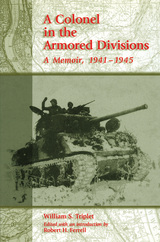 A Colonel in the Armored Divisions: A Memoir, 1941-1945
William S. Triplet, Edited by Robert H. Ferrell
University of Missouri Press, 2001 In this fascinating memoir William S. Triplet continues the saga begun in his earlier book, A Youth in the Meuse-Argonne: A Memoir, 1917-1918. After serving in World War I, Triplet chose to become a career military man and entered West Point. Upon graduation in 1924, his assignments were routine—to regiments in the Southwest and in Panama or as an officer in charge of Reserve Officers' Training Corps units or of men sent to a tank school. All this changed, however, when a new war opened in Europe. From 1940 to1942, Triplet was assigned to the Infantry Board at Fort Benning, Georgia, where he engaged in testing new weapons and machines for the expanding army. He became a full colonel in December 1942. After leaving Benning he received posts with four armored forces: the Thirteenth Armored Division forming in the United States, an amphibious tank and troop carrier group training at Fort Ord, California, and the Second and Seventh Armored Divisions in Europe. His extraordinary abilities as a tank commander became evident in the Seventh Armored, where he took over a four-thousand-man unit known as Combat Command A. He was soon moving from triumph to triumph as he led his unit into Germany. Here was much room for professional judgment and decision, and the colonel was in his element. In the war's last days Triplet and his men fought their way to the Baltic, preventing many German troops from joining in the defense of Berlin against the advancing Soviet army. Although Triplet was recommended for brigadier general, Dwight D. Eisenhower believed the U.S. Army had enough generals to finish the war; thus, the indomitable Triplet served out the few remaining years of his career as a colonel. After retiring in 1954, Triplet moved to Leesburg, Virginia, where he soon began to mull over his military experiences. Fascinated by the history he had witnessed, engaged by the attraction of writing about it, he recorded his memories with a combination of verve, thoughtfulness, and harsh judgments concerning ranking officers he considered incompetent— generals not excluded. Through his annotations, Robert H. Ferrell provides the historical context for Triplet's experiences. Well written and completely absorbing, A Colonel in the Armored Divisions provides readers the rare opportunity to see firsthand what a real professional in the U.S. Army thought about America's preparation for and participation in the war against Germany and Japan.
 Colonel Sanders and the American Dream
By Josh Ozersky
University of Texas Press, 2012 From Aunt Jemima and Uncle Ben to the Jolly Green Giant and Ronald McDonald, corporate icons sell billions of dollars’ worth of products. But only one of them was ever a real person—Colonel Sanders of Kentucky Fried Chicken/KFC. From a 1930s roadside café in Corbin, Kentucky, Harland Sanders launched a fried chicken business that now circles the globe, serving “finger lickin’ good” chicken to more than twelve million people every day. But to get there, he had to give up control of his company and even his own image, becoming a mere symbol to people today who don’t know that Colonel Sanders was a very real human being. This book tells his story—the story of a dirt-poor striver with unlimited ambition who personified the American Dream. Acclaimed cultural historian Josh Ozersky defines the American Dream as being able to transcend your roots and create yourself as you see fit. Harland Sanders did exactly that. Forced at age ten to go to work to help support his widowed mother and sisters, he failed at job after job until he went into business for himself as a gas station/café/motel owner and finally achieved a comfortable, middle-class life. But then the interstate bypassed his business and, at sixty-five, Sanders went broke again. Packing his car with a pressure cooker and his secret blend of eleven herbs and spices, he began peddling the recipe for “Colonel Sanders’ Kentucky Fried Chicken” to small-town diners in exchange for a nickel for each chicken they sold. Ozersky traces the rise of Kentucky Fried Chicken from this unlikely beginning, telling the dramatic story of Sanders’ self-transformation into “The Colonel,” his truculent relationship with KFC management as their often-disregarded goodwill ambassador, and his equally turbulent afterlife as the world’s most recognizable commercial icon.
The Colonel: The Life and Legend of Robert R. McCormick, 1880-1955
Richard Norton Smith
Northwestern University Press, 2003 This is the acclaimed biography of a giant of American journalism. As editor-publisher of the Chicago Tribune, Robert R. McCormick came to personify his city. Drawing on McCormick's personal papers and years of research, Richard Norton Smith has written the definitive life of the towering figure known as The Colonel.
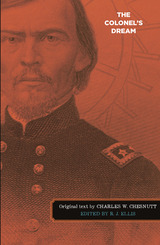 The Colonel's Dream
Charles W. Chesnutt
West Virginia University Press, 2014
Charles Waddell Chesnutt (1858-1932) was an African American writer, essayist, Civil Rights activist, legal-stenography businessman, and lawyer whose novels and short stories explore race, racism, and the problematic contours of African Americans’ social and cultural identities in post-Civil War South. He was the first African American to be published by a major American publishing house and served as a beacon-point for future African American writers.
The Colonel’s Dream, written in 1905, is a compelling tale of the post-Civil War South’s degeneration into a region awash with virulent racist practices against African Americans: segregation, lynchings, disenfranchisement, convict-labor exploitation, and endemic violent repression. The events in this novel are powerfully depicted from the point of view of a philanthropic but unreliable southern white colonel. Upon his return to the South, the colonel learns to abhor this southern world, as a tale of vicious racism unfolds. Throughout this narrative, Chesnutt confronts the deteriorating position of African Americans in an increasingly hostile South. Upon its publication The Colonel’s Dream was considered too controversial and unpalatable because of its bitter criticisms of southern white prejudice and northern indifference, and so this groundbreaking story failed to gain public attention and acclaim.
This is the first scholarly edition of The Colonel’s Dream. It includes an introduction and notes by R. J. Ellis and works to reestablish this great novel’s reputation.
 Colonial al-Andalus: Spain and the Making of Modern Moroccan Culture
Eric Calderwood
Harvard University Press, 2018 Through state-backed Catholicism, monolingualism, militarism, and dictatorship, Spain’s fascists earned their reputation for intolerance. It may therefore come as a surprise that 80,000 Moroccans fought at General Franco’s side in the 1930s. What brought these strange bedfellows together, Eric Calderwood argues, was a highly effective propaganda weapon: the legacy of medieval Muslim Iberia, known as al-Andalus. This legacy served to justify Spain’s colonization of Morocco and also to define the Moroccan national culture that supplanted colonial rule.
Writers of many political stripes have celebrated convivencia, the fabled “coexistence” of Christians, Muslims, and Jews in medieval Iberia. According to this widely-held view, modern Spain and Morocco are joined through their shared Andalusi past. Colonial al-Andalus traces this supposedly timeless narrative to the mid-1800s, when Spanish politicians and intellectuals first used it to press for Morocco’s colonization. Franco later harnessed convivencia to the benefit of Spain’s colonial program in Morocco. This shift precipitated an eloquent historical irony. As Moroccans embraced the Spanish insistence on Morocco’s Andalusi heritage, a Spanish idea about Morocco gradually became a Moroccan idea about Morocco.
Drawing on a rich archive of Spanish, Arabic, French, and Catalan sources—including literature, historiography, journalism, political speeches, schoolbooks, tourist brochures, and visual arts—Calderwood reconstructs the varied political career of convivencia and al-Andalus, showing how shared pasts become raw material for divergent contemporary ideologies, including Spanish fascism and Moroccan nationalism. Colonial al-Andalus exposes the limits of simplistic oppositions between European and Arab, Christian and Muslim, that shape current debates about European colonialism.
Colonial and Post-Colonial Governance of Islam: Continuities and Ruptures
Edited by Marcel Maussen, Veit Bader, and Annelies Moors
Amsterdam University Press, 2012
This comprehensive collection examines a broad spectrum of Islamic governance during colonial and postcolonial eras. The book pays special attention to the ongoing battles over the codification of Islamic education, religious authority, law and practice while outlining the similarities and differences in British, French and Portuguese colonial rule in Islamic regions. Using a shared conceptual framework the contributors to this volume analyze the nature of regulation in different historical periods and geographical areas. From Africa and the Middle East to Asia and Europe, Colonial and Post-Colonial Governance of Islam opens up new vistas for research in Islamic studies
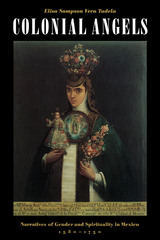 Colonial Angels: Narratives of Gender and Spirituality in Mexico, 1580-1750
By Elisa Sampson Vera Tudela
University of Texas Press, 2000 Spain's attempt to establish a "New Spain" in Mexico never fully succeeded, for Spanish institutions and cultural practices inevitably mutated as they came in contact with indigenous American outlooks and ways of life. This original, interdisciplinary book explores how writing by and about colonial religious women participated in this transformation, as it illuminates the role that gender played in imposing the Spanish empire in Mexico. The author argues that the New World context necessitated the creation of a new kind of writing. Drawing on previously unpublished writings by and about nuns in the convents of Mexico City, she investigates such topics as the relationship between hagiography and travel narratives, male visions of the feminine that emerge from the reworking of a nun's letters to her confessor into a hagiography, the discourse surrounding a convent's trial for heresy by the Inquisition, and the reports of Spanish priests who ministered to noble Indian women. This research rounds out colonial Mexican history by revealing how tensions between Spain and its colonies played out in the local, daily lives of women.
Colonial Arkansas, 1686-1804: A Social and Cultural History
Morris S. Arnold
University of Arkansas Press, 1993 "Meticulously researched, highly readable, profusely illustrated, and broadly focused . . . unquestionably the most significant work ever written about the Arkansas Post." --Carl Brasseaux
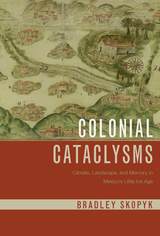 Colonial Cataclysms: Climate, Landscape, and Memory in Mexico’s Little Ice Age
Bradley Skopyk
University of Arizona Press, 2020 The contiguous river basins that flowed in Tlaxcala and San Juan Teotihuacan formed part of the agricultural heart of central Mexico. As the colonial project rose to a crescendo in the sixteenth and seventeenth centuries, the Indigenous farmers of central Mexico faced long-term problems standard historical treatments had attributed to drought and soil degradation set off by Old World agriculture. Instead, Bradley Skopyk argues that a global climate event called the Little Ice Age brought cold temperatures and elevated rainfall to the watersheds of Tlaxcala and Teotihuacan. With the climatic shift came cataclysmic changes: great floods, human adaptations to these deluges, and then silted wetlands and massive soil erosion. This book chases water and soil across the colonial Mexican landscape, through the fields and towns of New Spain’s Native subjects, and in and out of some of the strongest climate anomalies of the last thousand or more years. The pursuit identifies and explains the making of two unique ecological crises, the product of the interplay between climatic and anthropogenic processes. It charts how Native farmers responded to the challenges posed by these ecological rifts with creative use of plants and animals from the Old and New Worlds, environmental engineering, and conflict within and beyond the courts. With a new reading of the colonial climate and by paying close attention to land, water, and agrarian ecologies forged by farmers, Skopyk argues that colonial cataclysms—forged during a critical conjuncture of truly unprecedented proportions, a crucible of human and natural forces—unhinged the customary ways in which humans organized, thought about, and used the Mexican environment. This book inserts climate, earth, water, and ecology as significant forces shaping colonial affairs and challenges us to rethink both the environmental consequences of Spanish imperialism and the role of Indigenous peoples in shaping them.
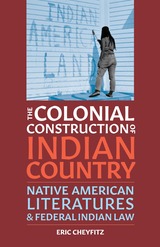 The Colonial Construction of Indian Country: Native American Literatures and Federal Indian Law
Eric Cheyfitz
University of Minnesota Press, 2024 A guide to the colonization and projected decolonization of Native America In The Colonial Construction of Indian Country, Eric Cheyfitz mounts a pointed historical critique of colonialism through careful analysis of the dialogue between Native American literatures and federal Indian law. Illuminating how these literatures indict colonial practices, he argues that if the decolonization of Indian country is to be achieved, then federal Indian law must be erased and replaced with independent Native nation sovereignty—because subordinate sovereignty, the historical regime, is not sovereignty at all. At the same time, Cheyfitz argues that Native American literatures, specifically U.S. American Indian literatures, cannot be fully understood without a knowledge of U.S. federal Indian law: the matrix of colonialism in Indian country. Providing intersectional readings of a range of literary and legal texts, he discusses such authors as Louise Erdrich, Frances Washburn, James Welch, Gerald Vizenor, Simon Ortiz, Leslie Marmon Silko, and others. Cheyfitz examines how American Indian writers and critics have responded to the impact of law on Native life, revealing recent trends in Native writing that build upon traditional modes of storytelling and governance. With a focus on resistance to the colonial regime of federal Indian law, The Colonial Construction of Indian Country not only elucidates how Native American literatures and federal Indian law are each crucial to any reading of the other, it also guides readers to better understand the genocidal assault on Indigenous peoples by Western structures of literacy, politics, and law.
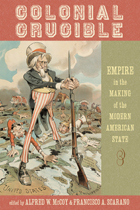 Colonial Crucible: Empire in the Making of the Modern American State
Edited by Alfred W. McCoy and Francisco A. Scarano
University of Wisconsin Press, 2009 At the end of the nineteenth century the United States swiftly occupied a string of small islands dotting the Caribbean and Western Pacific, from Puerto Rico and Cuba to Hawaii and the Philippines. Colonial Crucible: Empire in the Making of the Modern American State reveals how this experiment in direct territorial rule subtly but profoundly shaped U.S. policy and practice—both abroad and, crucially, at home. Edited by Alfred W. McCoy and Francisco A. Scarano, the essays in this volume show how the challenge of ruling such far-flung territories strained the U.S. state to its limits, creating both the need and the opportunity for bold social experiments not yet possible within the United States itself. Plunging Washington’s rudimentary bureaucracy into the white heat of nationalist revolution and imperial rivalry, colonialism was a crucible of change in American statecraft. From an expansion of the federal government to the creation of agile public-private networks for more effective global governance, U.S. empire produced far-reaching innovations.
Moving well beyond theory, this volume takes the next step, adding a fine-grained, empirical texture to the study of U.S. imperialism by analyzing its specific consequences. Across a broad range of institutions—policing and prisons, education, race relations, public health, law, the military, and environmental management—this formative experience left a lasting institutional imprint. With each essay distilling years, sometimes decades, of scholarship into a concise argument, Colonial Crucible reveals the roots of a legacy evident, most recently, in Washington’s misadventures in the Middle East.
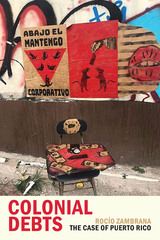 Colonial Debts: The Case of Puerto Rico
Rocío Zambrana
Duke University Press, 2021 With the largest municipal debt in US history and a major hurricane that destroyed much of the archipelago's infrastructure, Puerto Rico has emerged as a key site for the exploration of neoliberalism and disaster capitalism. In Colonial Debts Rocío Zambrana develops the concept of neoliberal coloniality in light of Puerto Rico's debt crisis. Drawing on decolonial thought and praxis, Zambrana shows how debt functions as an apparatus of predation that transforms how neoliberalism operates. Debt functions as a form of coloniality, intensifying race, gender, and class hierarchies in ways that strengthen the colonial relationship between Puerto Rico and the United States. Zambrana also examines the transformation of protest in Puerto Rico. From La Colectiva Feminista en Construcción's actions, long-standing land rescue/occupation in the territory, to the July 2019 protests that ousted former governor Ricardo “Ricky” Rosselló, protests pursue variations of decolonial praxis that subvert the positions of power that debt installs. As Zambrana demonstrates, debt reinstalls the colonial condition and adapts the racial/gender order essential to it, thereby emerging as a key site for political-economic subversion and social rearticulation.
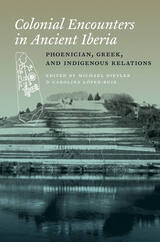 Colonial Encounters in Ancient Iberia: Phoenician, Greek, and Indigenous Relations
Edited by Michael Dietler and Carolina López-Ruiz
University of Chicago Press, 2009 During the first millennium BCE, complex encounters of Phoenician and Greek colonists with natives of the Iberian Peninsula transformed the region and influenced the entire history of the Mediterranean. One of the first books on these encounters to appear in English, this volume brings together a multinational group of contributors to explore ancient Iberia’s colonies and indigenous societies, as well as the comparative study of colonialism. These scholars—from a range of disciplines including classics, history, anthropology, and archaeology—address such topics as trade and consumption, changing urban landscapes, cultural transformations, and the ways in which these issues played out in the Greek and Phoenician imaginations. Situating ancient Iberia within Mediterranean colonial history and establishing a theoretical framework for approaching encounters between colonists and natives, these studies exemplify the new intellectual vistas opened by the engagement of colonial studies with Iberian history.
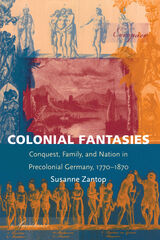 Colonial Fantasies: Conquest, Family, and Nation in Precolonial Germany, 1770-1870
Susanne Zantop
Duke University Press, 1997 Since Germany became a colonial power relatively late, postcolonial theorists and histories of colonialism have thus far paid little attention to it. Uncovering Germany’s colonial legacy and imagination, Susanne Zantop reveals the significance of colonial fantasies—a kind of colonialism without colonies—in the formation of German national identity. Through readings of historical, anthropological, literary, and popular texts, Zantop explores imaginary colonial encounters of "Germans" with "natives" in late-eighteenth- and early-nineteenth-century literature, and shows how these colonial fantasies acted as a rehearsal for actual colonial ventures in Africa, South America, and the Pacific.
From as early as the sixteenth century, Germans preoccupied themselves with an imaginary drive for colonial conquest and possession that eventually grew into a collective obsession. Zantop illustrates the gendered character of Germany’s colonial imagination through critical readings of popular novels, plays, and travel literature that imagine sexual conquest and surrender in colonial territory—or love and blissful domestic relations between colonizer and colonized. She looks at scientific articles, philosophical essays, and political pamphlets that helped create a racist colonial discourse and demonstrates that from its earliest manifestations, the German colonial imagination contained ideas about a specifically German national identity, different from, if not superior to, most others.
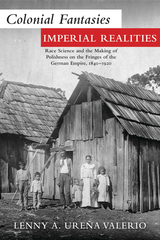 Colonial Fantasies, Imperial Realities: Race Science and the Making of Polishness on the Fringes of the German Empire, 1840–1920
Lenny A. Ureña Valerio
Ohio University Press, 2019 In Colonial Fantasies, Imperial Realities, Lenny Ureña Valerio offers a transnational approach to Polish-German relations and nineteenth-century colonial subjectivities. She investigates key cultural dynamics in the history of medicine, colonialism, and migration that bring Germany and Prussian Poland closer to the colonial and postcolonial worlds in Africa and Latin America. She also analyzes how Poles in the German Empire positioned themselves in relation to Germans and native populations in overseas colonies. She thus recasts Polish perspectives and experiences, allowing new insights into identity formation and nationalist movements within the German Empire. Crucially, Ureña Valerio also studies the medical projects and scientific ideas that traveled from colonies to the German metropole, and vice versa, which were influential not only in the racialization of Slavic populations, but also in bringing scientific conceptions of race to the everydayness of the German Empire. As a whole, Colonial Fantasies, Imperial Realities illuminates nested imperial and colonial relations using sources that range from medical texts and state documents to travel literature and fiction. By studying these scientific and political debates, Ureña Valerio uncovers novel ways to connect medicine, migration, and colonialism and provides an invigorating model for the analysis of Polish history from a global perspective.
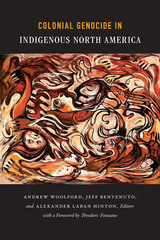 Colonial Genocide in Indigenous North America
Andrew Woolford, Jeff Benvenuto and Alexander Laban Hinton, eds.
Duke University Press, 2014 This important collection of essays expands the geographic, demographic, and analytic scope of the term genocide to encompass the effects of colonialism and settler colonialism in North America. Colonists made multiple and interconnected attempts to destroy Indigenous peoples as groups. The contributors examine these efforts through the lens of genocide. Considering some of the most destructive aspects of the colonization and subsequent settlement of North America, several essays address Indigenous boarding school systems imposed by both the Canadian and U.S. governments in attempts to "civilize" or "assimilate" Indigenous children. Contributors examine some of the most egregious assaults on Indigenous peoples and the natural environment, including massacres, land appropriation, the spread of disease, the near-extinction of the buffalo, and forced political restructuring of Indigenous communities. Assessing the record of these appalling events, the contributors maintain that North Americans must reckon with colonial and settler colonial attempts to annihilate Indigenous peoples.
Contributors. Jeff Benvenuto, Robbie Ethridge, Theodore Fontaine, Joseph P. Gone, Alexander Laban Hinton, Tasha Hubbard, Margaret D. Jabobs, Kiera L. Ladner, Tricia E. Logan, David B. MacDonald, Benjamin Madley, Jeremy Patzer, Julia Peristerakis, Christopher Powell, Colin Samson, Gray H. Whaley, Andrew Woolford
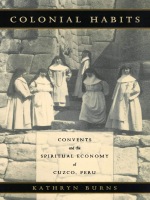 Colonial Habits: Convents and the Spiritual Economy of Cuzco, Peru
Kathryn Burns
Duke University Press, 1999 In Colonial Habits Kathryn Burns transforms our view of nuns as marginal recluses, making them central actors on the colonial stage. Beginning with the 1558 founding of South America’s first convent, Burns shows that nuns in Cuzco played a vital part in subjugating Incas, creating a creole elite, and reproducing an Andean colonial order in which economic and spiritual interests were inextricably fused.
Based on unprecedented archival research, Colonial Habits demonstrates how nuns became leading guarantors of their city’s social order by making loans, managing property, containing “unruly” women, and raising girls. Coining the phrase “spiritual economy” to analyze the intricate investments and relationships that enabled Cuzco’s convents and their backers to thrive, Burns explains how, by the late 1700s, this economy had faltered badly, making convents an emblem of decay and a focal point for intense criticism of a failing colonial regime. By the nineteenth century, the nuns had retreated from their previous roles, marginalized in the construction of a new republican order.
Providing insight that can be extended well outside the Andes to the relationships articulated by convents across much of Europe, the Americas, and beyond, Colonial Habits will engage those interested in early modern economics, Latin American studies, women in religion, and the history of gender, class, and race.
Colonial Harem
Malek Alloula
University of Minnesota Press, 1986 A collection of picture postcards of Algerian women exploited by the French, this “album” illustrates a powerful analysis of the distorting, denigrating effects of their presence on Algerian Society.
Colonial Industrialization and Labor in Korea: The Onoda Cement Factory
Soon-Won Park
Harvard University Press, 1999 This book is a study of labor relations and the first generation of skilled workers in colonial Korea, a subject crucial to the understanding of modernization in twentieth-century Korea. Born in rural Korea, these workers confronted both the colonial experience and the modern workplace as they interacted with Japanese managers and workers. Based on the archives of the Onoda Cement Factory and interviews with surviving workers, this work analyzes the complex relationship between colonialism and modernization.
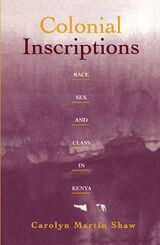 Colonial Inscriptions: Race, Sex, and Class in Kenya
Carolyn Martin Shaw
University of Minnesota Press, 1995 In Kenyan colonialist imagery, the Kikuyu were vilified as deceitful servants while the Maasai were romanticized as noble savages in a fashion similar to American representation of the Black slave and the "wild" Indian. Carolyn Martin Shaw examines this imagery in the works of historians and ethnographers, as well as in novels and films. Through the works of Louis Leakey, Jomo Kenyatta, Elspeth Huxley, and Isak Dinesen, along with her own ethnographic research, Martin Shaw investigates the discourses that shaped inequalities, rivalries, and fantasies in colonial Kenya. She explores narratives of domination and subordination, arguing that Europeans brought to Africa long-established ideas of difference that influenced racial inequalities in the colonial situation. Including discussion of the controversial practice of female genital mutilation, Colonial Inscriptions presents an African American woman's views of how images of African colonialism have been influenced by European and American racism and sexual fantasies.
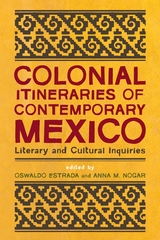 Colonial Itineraries of Contemporary Mexico: Literary and Cultural Inquiries
Edited by Oswaldo Estrada and Anna M. Nogar
University of Arizona Press, 2014 The rewritings of the Mexican colonia discussed in this book question a present reality of marginalities and inequality, of imposed political domination, and of hybrid subjectivities. In their examination of the novels, films, poetry, and chronicles produced in and outside of Mexico since 2000, the critics included in Colonial Itineraries of Contemporary Mexico produce new interpretations, alternative readings, and different angles of analysis that extend far beyond the theories of the new historical novel of the eighties and nineties, and well beyond the limits of the novel as re-creative genre.
Through a transformative interdisciplinary lens, this book studies the ultra-contemporary chronicles of Carlos Monsiváis, the poetry of Carmen Boullosa and Luis Felipe Fabre, and the novels of Enrique Serna, Héctor de Mauleón, Mónica Lavín, and Pablo Soler Frost, among others. The book also pays close attention to a good sample of recent children’s literature that revisit Mexico’s colonia. It includes the transatlantic perspective of Spanish novelist Inma Chacón, and a detailed analysis of the strategies employed by Laura Esquivel in the creation of a best seller. Other chapters are devoted to the study of transnational film productions, a play by Flavio González Mello, and a set of novels set in the nineteenth-century colonia that problematize static notions of both personal and national identity within specific cultural palimpsests. Taken together, these incisive readings open broader conversations about Mexican coloniality as it continues well into the twenty-first century.
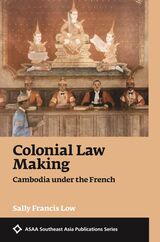 Colonial Law Making: Cambodia under the French
Sally Frances Low
National University of Singapore Press, 2023 An important case study in the history of law under colonialism.
Covering a previously neglected area of Cambodian history, Colonial Law Making explores the structural forces and contingent exchanges that shaped colonial law in Cambodia and examines its post-independence colonial legacy.
The court of King Norodom and the temples of Angkor Wat became orientalist icons in the French colonial imagination, perpetuating an image of the Protectorate (1863–1953) as special and worthy of preservation. This contributed to exceptionalism in the way the Kingdom was colonized, including through law. Drawing on previously unexamined archival material, Sally Low presents a comparative case study of French approaches to colonial law, jurisdiction, and protection. Although the voices of non-elite Cambodians are largely absent from the archives, their influence on colonial law is evident as they resisted efforts to regulate their lives and their land. Low argues that the result was a set of state legal institutions and an indigenous jurisdiction that blended Cambodian and French notions of patronage and royal power as the source and authority for law.
This work is a case study of colonial law as an instrument of control and administration in an indirectly ruled colony. It adds depth to our understanding of the impact of European colonial law and the significance of different forms of colonial rule—direct, indirect, and unofficial. It is easily accessible for non-lawyers and is a must-read for those interested in the recent past of Southeast Asia and the countries that were previously colonized as French Indochina.
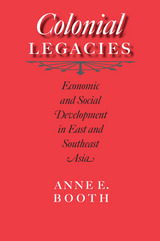 Colonial Legacies: Economic and Social Development in East and Southeast Asia
Anne E. Booth
University of Hawaii Press, 2007 It is well known that Taiwan and South Korea, both former Japanese colonies, achieved rapid growth and industrialization after 1960. The performance of former European and American colonies (Malaysia, Singapore, Burma, Vietnam, Laos, Cambodia, Indonesia, and the Philippines) has been less impressive. Some scholars have attributed the difference to better infrastructure and greater access to education in Japan’s colonies. Anne Booth examines and critiques such arguments in this ambitious comparative study of economic development in East and Southeast Asia from the beginning of the twentieth century until the 1960s.
Booth takes an in-depth look at the nature and consequences of colonial policies for a wide range of factors, including the growth of export-oriented agriculture and the development of manufacturing industry. She evaluates the impact of colonial policies on the growth and diversification of the market economy and on the welfare of indigenous populations. Indicators such as educational enrollments, infant mortality rates, and crude death rates are used to compare living standards across East and Southeast Asia in the 1930s. Her analysis of the impact that Japan’s Greater Asian Co-Prosperity Sphere and later invasion and conquest had on the region and the living standards of its people leads to a discussion of the painful and protracted transition to independence following Japan’s defeat. Throughout Booth emphasizes the great variety of economic and social policies pursued by the various colonial governments and the diversity of outcomes.
Lucidly and accessibly written, Colonial Legacies offers a balanced and elegantly nuanced exploration of a complex historical reality. It will be a lasting contribution to scholarship on the modern economic history of East and Southeast Asia and of special interest to those concerned with the dynamics of development and the history of colonial regimes.
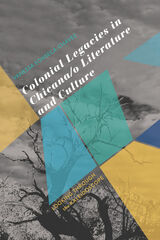 Colonial Legacies in Chicana/o Literature and Culture: Looking Through the Kaleidoscope
Vanessa Fonseca-Chávez
University of Arizona Press, 2020 Colonial Legacies in Chicana/o Literature and Culture exposes the ways in which colonialism is expressed in the literary and cultural production of the U.S. Southwest, a region that has experienced at least two distinct colonial periods since the sixteenth century.
Vanessa Fonseca-Chávez traces how Spanish colonial texts reflect the motivation for colonial domination. She argues that layers of U.S. colonialism complicate how Chicana/o literary scholars think about Chicana/o literary and cultural production. She brings into view the experiences of Chicana/o communities that have long-standing ties to the U.S. Southwest but whose cultural heritage is tied through colonialism to multiple nations, including Spain, Mexico, and the United States.
While the legacies of Chicana/o literature simultaneously uphold and challenge colonial constructs, the metaphor of the kaleidoscope makes visible the rupturing of these colonial fragments via political and social urgencies. This book challenges readers to consider the possibilities of shifting our perspectives to reflect on stories told and untold and to advocate for the inclusion of fragmented and peripheral pieces within the kaleidoscope for more complex understandings of individual and collective subjectivities.
This book is intended for readers interested in how colonial legacies are performed in the U.S. Southwest, particularly in the context of New Mexico, Texas, and Arizona. Readers will relate to the book’s personal narrative thread that provides a path to understanding fragmented identities.
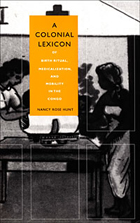 A Colonial Lexicon: Of Birth Ritual, Medicalization, and Mobility in the Congo
Nancy Rose Hunt
Duke University Press, 1999 A Colonial Lexicon is the first historical investigation of how childbirth became medicalized in Africa. Rejecting the “colonial encounter” paradigm pervasive in current studies, Nancy Rose Hunt elegantly weaves together stories about autopsies and bicycles, obstetric surgery and male initiation, to reveal how concerns about strange new objects and procedures fashioned the hybrid social world of colonialism and its aftermath in Mobutu’s Zaire. Relying on archival research in England and Belgium, as well as fieldwork in the Congo, Hunt reconstructs an ethnographic history of a remote British Baptist mission struggling to survive under the successive regimes of King Leopold II’s Congo Free State, the hyper-hygienic, pronatalist Belgian Congo, and Mobutu’s Zaire. After exploring the roots of social reproduction in rituals of manhood, she shows how the arrival of the fast and modern ushered in novel productions of gender, seen equally in the forced labor of road construction and the medicalization of childbirth. Hunt focuses on a specifically interwar modernity, where the speed of airplanes and bicycles correlated with a new, mobile medicine aimed at curbing epidemics and enumerating colonial subjects. Fascinating stories about imperial masculinities, Christmas rituals, evangelical humor, colonial terror, and European cannibalism demonstrate that everyday life in the mission, on plantations, and under a strongly Catholic colonial state was never quite what it seemed. In a world where everyone was living in translation, privileged access to new objects and technologies allowed a class of “colonial middle figures”—particularly teachers, nurses, and midwives—to mediate the evolving hybridity of Congolese society. Successfully blurring conventional distinctions between precolonial, colonial, and postcolonial situations, Hunt moves on to discuss the unexpected presence of colonial fragments in the vibrant world of today’s postcolonial Africa. With its close attention to semiotics as well as sociology, A Colonial Lexiconwill interest specialists in anthropology, African history, obstetrics and gynecology, medical history, religion, and women’s and cultural studies.
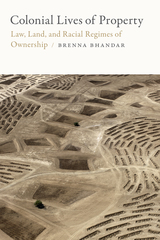 Colonial Lives of Property: Law, Land, and Racial Regimes of Ownership
Brenna Bhandar
Duke University Press, 2018 In Colonial Lives of Property Brenna Bhandar examines how modern property law contributes to the formation of racial subjects in settler colonies and to the development of racial capitalism. Examining both historical cases and ongoing processes of settler colonialism in Canada, Australia, and Israel and Palestine, Bhandar shows how the colonial appropriation of indigenous lands depends upon ideologies of European racial superiority as well as upon legal narratives that equate civilized life with English concepts of property. In this way, property law legitimates and rationalizes settler colonial practices while it racializes those deemed unfit to own property. The solution to these enduring racial and economic inequities, Bhandar demonstrates, requires developing a new political imaginary of property in which freedom is connected to shared practices of use and community rather than individual possession.
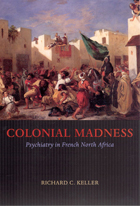 Colonial Madness: Psychiatry in French North Africa
Richard C. Keller
University of Chicago Press, 2007 Nineteenth-century French writers and travelers imagined Muslim colonies in North Africa to be realms of savage violence, lurid sexuality, and primitive madness. Colonial Madness traces the genealogy and development of this idea from the beginnings of colonial expansion to the present, revealing the ways in which psychiatry has been at once a weapon in the arsenal of colonial racism, an innovative branch of medical science, and a mechanism for negotiating the meaning of difference for republican citizenship.
Drawing from extensive archival research and fieldwork in France and North Africa, Richard Keller offers much more than a history of colonial psychology. Colonial Madness explores the notion of what French thinkers saw as an inherent mental, intellectual, and behavioral rift marked by the Mediterranean, as well as the idea of the colonies as an experimental space freed from the limitations of metropolitan society and reason. These ideas have modern relevance, Keller argues, reflected in French thought about race and debates over immigration and France’s postcolonial legacy.
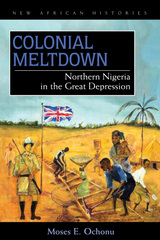 Colonial Meltdown: Northern Nigeria in the Great Depression
Moses E. Ochonu
Ohio University Press, 2009 Historians of colonial Africa have largely regarded the decade of the Great Depression as a period of intense exploitation and colonial inactivity. In Colonial Meltdown, Moses E. Ochonu challenges this conventional interpretation by mapping the determined, at times violent, yet instructive responses of Northern Nigeria’s chiefs, farmers, laborers, artisans, women, traders, and embryonic elites to the British colonial mismanagement of the Great Depression. Colonial Meltdown explores the unraveling of British colonial power at a moment of global economic crisis. Ochonu shows that the economic downturn made colonial exploitation all but impossible and that this dearth of profits and surpluses frustrated the colonial administration which then authorized a brutal regime of grassroots exactions and invasive intrusions. The outcomes were as harsh for Northern Nigerians as those of colonial exploitation in boom years. Northern Nigerians confronted colonial economic recovery measures and their agents with a variety of strategies. Colonial Meltdown analyzes how farmers, women, laborers, laid-off tin miners, and NorthernNigeria’s emergent elite challenged and rebelled against colonial economic recovery schemes with evasive trickery, defiance, strategic acts of revenge, and criminal self-help and, in the process, exposed the weak underbelly of the colonial system. Combined with the economic and political paralysis of colonial bureaucrats in the face of crisis, these African responses underlined the fundamental weakness of the colonial state, the brittleness of its economicmission, and the limits of colonial coercion and violence. This atmosphere of colonial collapse emboldened critics of colonial policies who went on to craft the rhetorical terms on which the anticolonial struggle of the post–World War II period was fought out. In the current climate of global economic anxieties, Ochonu’s analysis will enrich discussions on the transnational ramifications of economic downturns. It will also challenge the pervasive narrative of imperial economic success.
Colonial Memory: Contemporary Women’s Travel Writing in Britain and The Netherlands
Sarah De Mul
Amsterdam University Press, 2011 Exploring the intersections of memory, gender, and the postcolonial, Colonial Memory explores the phenomenon of colonial memory through the specific genre of women’s travel writing. Building on criticism of memory and travel writing, Sarah De Mul seeks to open Dutch literature to postcolonial themes and concepts and to insert the history of the Dutch colonies and its critical recollection into the traditionally Anglophone-dominated field of postcolonial studies.
“A vividly conceived and theoretically astute reading of the complicated weavings between the past and present involved in memory work and the process of nostalgic return.”—Elleke Boehmer, University of Oxford
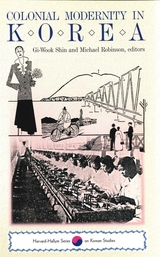 Colonial Modernity in Korea
Gi-Wook Shin
Harvard University Press, 1999 The twelve chapters in this volume seek to overcome the nationalist paradigm of Japanese repression and exploitation versus Korean resistance that has dominated the study of Korea’s colonial period (1910–1945) by adopting a more inclusive, pluralistic approach that stresses the complex relations among colonialism, modernity, and nationalism. By addressing such diverse subjects as the colonial legal system, radio, telecommunications, the rural economy, and industrialization and the formation of industrial labor, one group of essays analyzes how various aspects of modernity emerged in the colonial context and how they were mobilized by the Japanese for colonial domination, with often unexpected results. A second group examines the development of various forms of identity from nation to gender to class, particularly how aspects of colonial modernity facilitated their formation through negotiation, contestation, and redefinition.
Colonial New Hampshire: A History
Jere R. Daniell
University Press of New England, 2015 In his full-scale history of New Hampshire from the Algonkin people to the coming of the American Revolution, the historian Jere R. Daniell discusses the Indian population, the development of community life, the founding of New Hampshire as a royal colony, the political adjustments that existence as a separate colony necessitated, the nature of New Hampshire’s social institutions, and many other subjects. His epilogue links colonial New Hampshire to subsequent developments in the state. This volume will interest historians of colonial New England and New Hampshire.
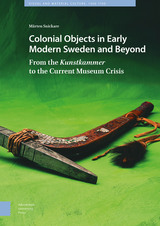 Colonial Objects in Early Modern Sweden and Beyond: From the Kunstkammer to the Current Museum Crisis
Mårten Snickare
Amsterdam University Press, 2022 An elaborately crafted and decorated tomahawk from somewhere along the North American east coast: how did it end up in the royal collections in Stockholm in the late seventeenth century? What does it say about the Swedish kingdom’s colonial ambitions and desires? What questions does it raise from its present place in a display cabinet in the Museum of Ethnography in Stockholm?
Colonial Objects in Early Modern Sweden and Beyond is about the tomahawk and other objects like it, acquired in colonial contact zones and displayed by Swedish elites in the seventeenth century. Its first part situates the objects in two distinct but related spaces: the expanding space of the colonial world, and the exclusive space of the Kunstkammer. The second part traces the objects’ physical and epistemological transfer from the Kunstkammer to the modern museum system. In the final part, colonial objects are considered at the centre of a heated debate over the present state of museums, and their possible futures.
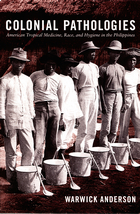 Colonial Pathologies: American Tropical Medicine, Race, and Hygiene in the Philippines
Warwick Anderson
Duke University Press, 2006 Colonial Pathologies is a groundbreaking history of the role of science and medicine in the American colonization of the Philippines from 1898 through the 1930s. Warwick Anderson describes how American colonizers sought to maintain their own health and stamina in a foreign environment while exerting control over and “civilizing” a population of seven million people spread out over seven thousand islands. In the process, he traces a significant transformation in the thinking of colonial doctors and scientists about what was most threatening to the health of white colonists. During the late nineteenth century, they understood the tropical environment as the greatest danger, and they sought to help their fellow colonizers to acclimate. Later, as their attention shifted to the role of microbial pathogens, colonial scientists came to view the Filipino people as a contaminated race, and they launched public health initiatives to reform Filipinos’ personal hygiene practices and social conduct. A vivid sense of a colonial culture characterized by an anxious and assertive white masculinity emerges from Anderson’s description of American efforts to treat and discipline allegedly errant Filipinos. His narrative encompasses a colonial obsession with native excrement, a leper colony intended to transform those considered most unclean and least socialized, and the hookworm and malaria programs implemented by the Rockefeller Foundation in the 1920s and 1930s. Throughout, Anderson is attentive to the circulation of intertwined ideas about race, science, and medicine. He points to colonial public health in the Philippines as a key influence on the subsequent development of military medicine and industrial hygiene, U.S. urban health services, and racialized development regimes in other parts of the world.
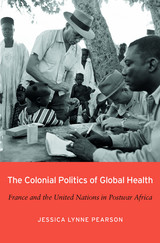 The Colonial Politics of Global Health: France and the United Nations in Postwar Africa
Jessica Lynne Pearson
Harvard University Press, 2018 In The Colonial Politics of Global Health, Jessica Lynne Pearson explores the collision between imperial and international visions of health and development in French Africa as decolonization movements gained strength.
After World War II, French officials viewed health improvements as a way to forge a more equitable union between France and its overseas territories. Through new hospitals, better medicines, and improved public health, French subjects could reimagine themselves as French citizens. The politics of health also proved vital to the United Nations, however, and conflicts arose when French officials perceived international development programs sponsored by the UN as a threat to their colonial authority. French diplomats also feared that anticolonial delegations to the United Nations would use shortcomings in health, education, and social development to expose the broader structures of colonial inequality. In the face of mounting criticism, they did what they could to keep UN agencies and international health personnel out of Africa, limiting the access Africans had to global health programs. French personnel marginalized their African colleagues as they mapped out the continent’s sanitary future and negotiated the new rights and responsibilities of French citizenship. The health disparities that resulted offered compelling evidence that the imperial system of governance should come to an end.
Pearson’s work links health and medicine to postwar debates over sovereignty, empire, and human rights in the developing world. The consequences of putting politics above public health continue to play out in constraints placed on international health organizations half a century later.
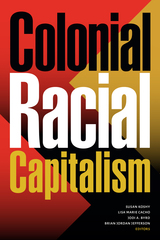 Colonial Racial Capitalism
Susan Koshy, Lisa Marie Cacho, Jodi A. Byrd, and Brian Jordan Jefferson, editors
Duke University Press, 2022 The contributors to Colonial Racial Capitalism consider anti-Blackness, human commodification, and slave labor alongside the history of Indigenous dispossession and the uneven development of colonized lands across the globe. They demonstrate the co-constitution and entanglement of slavery and colonialism from the conquest of the New World through industrial capitalism to contemporary financial capitalism. Among other topics, the essays explore the historical suturing of Blackness and Black people to debt, the violence of uranium mining on Indigenous lands in Canada and the Belgian Congo, how municipal property assessment and waste management software encodes and produces racial difference, how Puerto Rican police crackdowns on protestors in 2010 and 2011 drew on decades of policing racially and economically marginalized people, and how historic sites in Los Angeles County narrate the Mexican-American War in ways that occlude the war’s imperialist groundings. The volume’s analytic of colonial racial capitalism opens new frameworks for understanding the persistence of violence, precarity, and inequality in modern society.
Contributors. Joanne Barker, Jodi A. Byrd, Lisa Marie Cacho, Michael Dawson, Iyko Day, Ruth Wilson Gilmore, Alyosha Goldstein, Cheryl I. Harris, Kimberly Kay Hoang, Brian Jordan Jefferson, Susan Koshy, Marisol LeBrón, Jodi Melamed, Laura Pulido
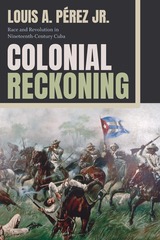 Colonial Reckoning: Race and Revolution in Nineteenth-Century Cuba
Louis A. Pérez Jr.
Duke University Press, 2023 In Colonial Reckoning Louis A. Pérez Jr. examines Cuba’s wars for independence in the second half of the nineteenth century, focusing specifically on those Cubans who remained loyal to Spain. Drawing on newspaper articles, personal letters, military battle reports, government commissions, consular reports, literature, and other materials, Pérez shows how everyday black, white, and creole Cubans defended the Spanish empire as paramilitary guerrillas alongside white elites. These loyalist Cubans helped the Spanish fight a separatist insurgency composed of a similarly diverse population of Cubans. Pérez demonstrates that these wars were so deadly and drawn out precisely because Cubans fought on both sides, each holding myriad competing visions of sovereignty and contested meanings of nation. Complicating mythical and historiographical narratives that Cuban national liberation was a struggle waged between Cubans of color and white elites beholden to Spain, Pérez shows that the fight consisted of a great number of factions with unique and evolving motivations. In so doing, he interrogates anew the multifaceted social dimensions and multiple political aspects of the complex drama of Cuban national formation.
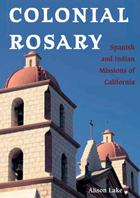 Colonial Rosary: The Spanish and Indian Missions of California
Alison Lake
Ohio University Press, 2006 California would be a different place today without the imprint of Spanish culture and the legacy of Indian civilization. The colonial Spanish missions that dot the coast and foothills between Sonoma and San Diego are relics of a past that transformed California’s landscape and its people. In a spare and accessible style, Colonial Rosary looks at the complexity of California’s Indian civilization and the social effects of missionary control. While oppressive institutions lasted in California for almost eighty years under the tight reins of royal Spain, the Catholic Church, and the government of Mexico, letters and government documents reveal the missionaries’ genuine concern for the Indian communities they oversaw for their health, spiritual upbringing, and material needs. With its balanced attention to the variety of sources on the mission period, Colonial Rosary illuminates ongoing debates over the role of the Franciscan missions in the settlement of California. By sharing the missions’ stories of tragedy and triumph, author Alison Lake underlines the importance of preserving these vestiges of California’s prestatehood period. An illustrated tour of the missions as well as a sensitive record of their impact on California history and culture, Colonial Rosary brings the story of the Spanish missions of California alive.
Colonial Search For A Southern Eden
Louis B. Wright
University of Alabama Press, 2008 European imperialists began to dream of other kinds of wealth besides gold in the New World
Louis Booker Wright was a graduate of Wofford College, and was at various times a John Simon Guggenheim Fellow and a Benjamin Franklin Medalist, and he held honorary degrees from, among others, Princeton, Tulane, and California State University-Fulerton. He was the author of a number of books, including The Atlantic Frontier: Colonial American Civilization 1607-1763, Gold, Glory, and the Gospel: the Adventurous Lives of the Renaissance Explorers, Culture on the Moving Frontier, and The Dream of Prosperity in Colonial America. At the time of the preparation of this work he was Director of the Folger Shakespeare Library.
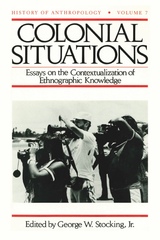 Colonial Situations: Essays on the Contextualization of Ethnographic Knowledge
Edited by George W. Stocking, Jr.
University of Wisconsin Press, 1993 As European colonies in Asia and Africa became independent nations, as the United States engaged in war in Southeast Asia and in covert operations in South America, anthropologists questioned their interactions with their subjects and worried about the political consequences of government-supported research. By 1970, some spoke of anthropology as “the child of Western imperialism” and as “scientific colonialism.” Ironically, as the link between anthropology and colonialism became more widely accepted within the discipline, serious interest in examining the history of anthropology in colonial contexts diminished. This volume is an effort to initiate a critical historical consideration of the varying “colonial situations” in which (and out of which) ethnographic knowledge essential to anthropology has been produced. The essays comment on ethnographic work from the middle of the nineteenth century to nearly the end of the twentieth, in regions from Oceania through southeast Asia, the Andaman Islands, and southern Africa to North and South America. The “colonial situations” also cover a broad range, from first contact through the establishment of colonial power, from District Officer administrations through white settler regimes, from internal colonialism to international mandates, from early “pacification” to wars of colonial liberation, from the expropriation of land to the defense of ecology. The motivations and responses of the anthropologists discussed are equally varied: the romantic resistance of Maclay and the complicity of Kubary in early colonialism; Malinowski’s salesmanship of academic anthropology; Speck’s advocacy of Indian land rights; Schneider’s grappling with the ambiguities of rapport; and Turner’s facilitation of Kaiapo cinematic activism. “Provides fresh insights for those who care about the history of science in general and that of anthropology in particular, and a valuable reference for professionals and graduate students.”—Choice “Among the most distinguished publications in anthropology, as well as in the history of social sciences.”—George Marcus, Anthropologica
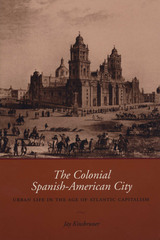 The Colonial Spanish-American City: Urban Life in the Age of Atlantic Capitalism
By Jay Kinsbruner
University of Texas Press, 2005 The colonial Spanish-American city, like its counterpart across the Atlantic, was an outgrowth of commercial enterprise. A center of entrepreneurial activity and wealth, it drew people seeking a better life, with more educational, occupational, commercial, bureaucratic, and marital possibilities than were available in the rural regions of the Spanish colonies. Indeed, the Spanish-American city represented hope and opportunity, although not for everyone. In this authoritative work, Jay Kinsbruner draws on many sources to offer the first history and interpretation in English of the colonial Spanish-American city. After an overview of pre-Columbian cities, he devotes chapters to many important aspects of the colonial city, including its governance and administrative structure, physical form, economy, and social and family life. Kinsbruner's overarching thesis is that the Spanish-American city evolved as a circumstance of trans-Atlantic capitalism. Underpinning this thesis is his view that there were no plebeians in the colonial city. He calls for a class interpretation, with an emphasis on the lower-middle class. His study also explores the active roles of women, many of them heads of households, in the colonial Spanish-American city.
Colonial Ste. Genevieve: An Adventure on the Mississippi Frontier
Carl J. Ekberg
Southern Illinois University Press, 1996 Colonial Ste. Genevieve: An Adventure on the Mississippi Frontier is a comprehensive, award-winning history of the French colonial town of Ste. Genevieve, from its founding in about 1750 to the Louisiana Purchase. Ekberg covers all aspects of the town during this period, including politics, agriculture, family life, and religion, and places Ste. Genevieve within the context of the history of the colonial Illinois Country.
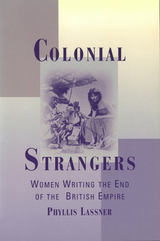 Colonial Strangers: Women Writing the End of the British Empire
Lassner, Phyllis
Rutgers University Press, 2004 Colonial Strangers revolutionizes modern British literary studies by showing how our interpretations of the postcolonial must confront World War II and the Holocaust. Phyllis Lassner’s analysis reveals how writers such as Muriel Spark, Olivia Manning, Rumer Godden, Phyllis Bottome, Elspeth Huxley, and Zadie Smith insist that World War II is critical to understanding how and why the British Empire had to end. Drawing on memoirs, fiction, reportage, and film adaptations, Colonial Strangers explores the critical perspectives of writers who correct prevailing stereotypes of British women as agents of imperialism. They also question their own participation in British claims of moral righteousness and British politics of cultural exploitation. These authors take center stage in debates about connections between the racist ideologies of the Third Reich and the British Empire. Colonial Strangers reveals how the literary responses of key artists represent not only compelling reading, but also a necessary intervention in colonial and postcolonial debates and the canons of modern British fiction.
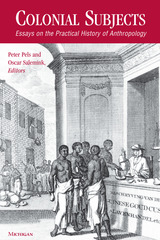 Colonial Subjects: Essays on the Practical History of Anthropology
Peter Pels and Oscar Salemink, Editors
University of Michigan Press, 2000 It is often forgotten that anthropology--the scientific study of cultural difference--arose from situations that required a practical management of cultural differences. Out of the practical contexts of colonial contact--administration, mission, nationalism, policing, settler cultivation, tourism, warfare--emerged methods, and images of otherness, that inform anthropological notions of cultural difference to this day.
The essays in this volume share the assumption that "ethnography," far from being the unique purview of anthropology, is a broader field of practice out of which and alongside which anthropology attempted to distinguish itself as a scientific discipline. They explore a variety of situations in colonial South and Southeast Asia and Africa and in the treatment of the indigenous inhabitants of North America and Australia to provide genealogies of present-day anthropological practices, tracing them back to the subjects of colonial ethnography.
This book introduces into the history of anthropology many of the insights developed in recent studies in history, cultural studies, and the anthropology of colonialism. It can serve as a course book in the history of anthropology and the anthropology of colonialism, while at the same time addressing a much larger audience of students of colonial history, of the history of science and modernity, and of globalization.
Peter Pels is Lecturer in Anthropology, University of Amsterdam. Oscar Salemink is Program Officer for Social Sciences and Humanities, The Ford Foundation-Vietnam.
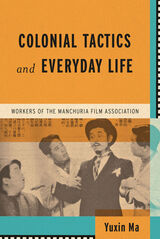 Colonial Tactics and Everyday Life: Workers of the Manchuria Film Association
Yuxin Ma
University of Wisconsin Press, 2023 Following the Japanese invasion of northeast China in 1931, the occupying authorities established the Manchuria Film Association to promote film production efficiency and serve Japan’s propaganda needs. Manchuria Film Association had two tasks: to make “national policy films” as part of a cultural mission of educating Chinese in Manchukuo (the puppet state created in 1932) on the special relationship between Japan and the region, and to block the exhibition of Chinese films from Shanghai that contained anti-Japanese messages. The corporation relied on Japanese capital, technology, and film expertise, but it also employed many Chinese filmmakers. After the withdrawal of Japanese forces in 1945, many of these individuals were portrayed as either exploited victims or traitorous collaborators. Yuxin Ma seeks to move the conversation beyond such simplistic and inaccurate depictions.
By focusing on the daily challenges and experiences of the Chinese workers at the corporation, Ma examines how life was actually lived by people navigating between practical and ideological concerns. She illustrates how the inhabitants of Manchukuo navigated social opportunities, economic depression, educational reforms, fascist rule, commercial interests, practical daily needs, and more—and reveals ways in which these conflicting preoccupations sometimes manifested as tension and ambiguity on screen. In the battle between repression and expression, these Chinese actors, directors, writers, and technicians adopted defensive and opportunistic tactics. They did so in colonial spaces, often rejecting modernist representations of Manchukuo in favor of venerating traditional Chinese culture and values. The expertise, skills, and professional networks they developed extended well beyond the occupation into the postwar period, and may individuals reestablished themselves as cinema professionals in the socialist era.
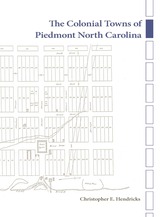 The Colonial Towns of Piedmont North Carolina
Christopher E. Hendricks
University of Tennessee Press, 2024 How do towns come into existence? What circumstances determine whether they succeed or fail? In The Colonial Towns of Piedmont North Carolina, author Christopher E. Hendricks looks at one region in eighteenth-century America to explore answers to these questions. He examines the establishment and development of eleven towns in the Piedmont, classifying them into three types: county towns formed by the establishment of government institutions, such as a courthouse; trade towns formed around commercial opportunities; and religious towns such as the three towns developed in Wachovia, a region where Moravians settled. He uses these classifications to tell the stories of how these towns came into being, and how, in their development, they struggled against economic, cultural, and political challenges.
Ultimately, The Colonial Towns of Piedmont North Carolina deepens our understanding of the influence that American towns had on the settlement of the backcountry. Hendricks tells the poignant story of the Moravians’ struggle to maintain their neutral stance during the Revolutionary War, surviving exploitation and brutality from both the Continental Army and the British. The author also integrates the history of Native Americans into this mix of competing forces and shows how they were challenged by—and resisted—the newcomers. He emphasizes the role of individual initiative as well as the impetus of government, specifically courthouses, in establishing towns. By utilizing a variety of rarely examined primary sources, methodological approaches ranging from geographic theory to material culture studies, and a deep examination of local history, Hendricks provides a comprehensive analysis of the emergence of these towns on the frontier.
 A Colonial Tragedy: The Chinese Massacre at Batavia, 1740
Leonard Blussé
Leiden University Press, 2025 "In October 1740, a tragedy unfolded in Batavia, the Asian headquarters of the Dutch East India Company on the island of Java. Faced with a spontaneous Chinese peasant uprising, Batavia’s vengeful inhabitants carried out a bloody massacre of their fellow Chinese within the city walls. The murderers marched from house to house, looting and pillaging, not even sparing the hospitals and prisons. How could such a slaughter take place in the prosperous Queen of the East? Drawing on a wealth of Dutch and Chinese sources, Leonard Blussé reconstructs the colonial development of Batavia and its environs, and the crucial Chinese contribution to it. After more than a hundred years of successful cooperation, this spectacular colonial project was lost to a toxic mix of ecological decline, epidemics, runaway Chinese immigration and high-level personal conflicts within the colonial administration, with the Chinese paying the ultimate price. Never before has so much attention to detail revealed what preceded the massacre and how this tragedy was eventually swept under the carpet of colonial history."
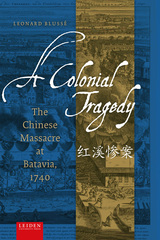 A Colonial Tragedy: The Chinese Massacre at Batavia, 1740
Leonard Blussé
Leiden University Press, 2025 In October 1740, a tragedy unfolded in Batavia, the Asian headquarters of the Dutch East India Company on the island of Java. Faced with a spontaneous Chinese peasant uprising, Batavia’s vengeful inhabitants carried out a bloody massacre of their fellow Chinese within the city walls. The murderers marched from house to house, looting and pillaging, not even sparing the hospitals and prisons. How could such a slaughter take place in the prosperous Queen of the East? Drawing on a wealth of Dutch and Chinese sources, Leonard Blussé reconstructs the colonial development of Batavia and its environs, and the crucial Chinese contribution to it. After more than a hundred years of successful cooperation, this spectacular colonial project was lost to a toxic mix of ecological decline, epidemics, runaway Chinese immigration and high-level personal conflicts within the colonial administration, with the Chinese paying the ultimate price. Never before has so much attention to detail revealed what preceded the massacre and how this tragedy was eventually swept under the carpet of colonial history.
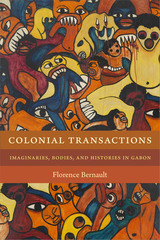 Colonial Transactions: Imaginaries, Bodies, and Histories in Gabon
Florence Bernault
Duke University Press, 2019 In Colonial Transactions Florence Bernault moves beyond the racial divide that dominates colonial studies of Africa. Instead, she illuminates the strange and frightening imaginaries that colonizers and colonized shared on the ground. Bernault looks at Gabon from the late nineteenth century to the present, historicizing the most vivid imaginations and modes of power in Africa today: French obsessions with cannibals, the emergence of vampires and witches in the Gabonese imaginary, and the use of human organs for fetishes. Struggling over objects, bodies, agency, and values, colonizers and colonized entered relations that are better conceptualized as "transactions." Together they also shared an awareness of how the colonial situation broke down moral orders and forced people to use the evil side of power. This foreshadowed the ways in which people exercise agency in contemporary Africa, as well as the proliferation of magical fears and witchcraft anxieties in present-day Gabon. Overturning theories of colonial and postcolonial nativism, this book is essential reading for historians and anthropologists of witchcraft, power, value, and the body.
 Colonial Transformations in Venezuela: Anthropology, Archaeology, and History, Volume 47
Berta E. Pérez, ed.
Duke University Press This special issue employs the tools of history, anthropology and ethnology to address the relationship between the colonizer and the colonized in Venezuela. It examines various aspects of the Venezuelan oral-based cultures—including religion, gender, and trade—and argue that the indigenous and black populations were never "cultural islands"—neither before nor after European penetration. "Colonial Transformations in Venezuela" also provides a much-needed ethnohistorical approach to tropical Amazonia in general. In light of current debates over the nature of the colonial occupation and the ecological potential of the tropical forest as a site for human complexity and development, the papers gathered in this special issue bring new kinds of arguments and important new data to these issues. The articles also indicate important new lines of research for the understanding of native histories in a modern age of global connections. Contributors include Rodrigo Navarrete, H. Dieter Heinen. Alvaro Garcia-Castro, Rafael A. Gassón, Silvia M. Vidal, Lilliam Arvelo, Franz Scaramelli, Kay Tarble, and Nelly Arvelo-Jiménez
 Colonial Vocabularies: Teaching and Learning Arabic, 1870-1970
Sarah Irving
Amsterdam University Press, 2025 Language teaching and learning were crucial to Europeans’ colonial, national, and individual enterprises in the Levant, and in these processes, “Oriental language teachers” – as they were termed prior to the Second World War – were fundamental. European state nationalisms influenced and increasingly competed with each other by promoting their languages and cultures abroad, by means of both private and governmental actors. At the same time, learning Arabic became more prominent around the Mediterranean. The first half of the twentieth century corresponded with the emergence of new media; language was thought of as a cultural product to be exported into new cultural spaces. However, many blind spots remain in the history of linguistic thought and practices, including the forgotten and neglected voices of those involved in learning and teaching Arabic. This volume aims to revisit aspects of this linguistic encounter, including its vision, profile, priorities, trajectories, and practices.
 Colonial Wars, 1689-1762
Howard H. Peckham
University of Chicago Press, 1965 Although the colonial wars consisted of almost continuous raids and skirmishes between the English and French colonists and their Indian allies and enemies, they can be separated into four major conflicts, corresponding to four European wars of which they were, in varying degrees, a part: King William's War (1689-97) (War of the League of Augsburg); Queen Anne's War (1702-13) (War of the Spanish Succession); King George's War (1744-48) (War of the Austrian Succession); and The French and Indian War (1755-62) (Seven Years' War).
Mr. Peckham chronicles the events of these wars, summarizing the struggle for empire in America among France, England, and Spain. He indicates how the colonists applied the experience they gained from fighting Indians to their engagements with European powers. And what they learned from the colonial wars they translated into a political philosophy that led to independence and self-government.
The ready involvement of the colonies in European ambitions, the success and failure of co-operation between colony and mother country, the efforts of the English colonies together, and the growing differences between them and Britain give the narrative continuity and rising excitement.
 Colonial Wars, 1689-1762
Howard H. Peckham
University of Chicago Press, 1965 This is an auto-narrated audiobook version of this book.
Although the colonial wars consisted of almost continuous raids and skirmishes between the English and French colonists and their Indian allies and enemies, they can be separated into four major conflicts, corresponding to four European wars of which they were, in varying degrees, a part: King William's War (1689-97) (War of the League of Augsburg); Queen Anne's War (1702-13) (War of the Spanish Succession); King George's War (1744-48) (War of the Austrian Succession); and The French and Indian War (1755-62) (Seven Years' War).
Mr. Peckham chronicles the events of these wars, summarizing the struggle for empire in America among France, England, and Spain. He indicates how the colonists applied the experience they gained from fighting Indians to their engagements with European powers. And what they learned from the colonial wars they translated into a political philosophy that led to independence and self-government.
The ready involvement of the colonies in European ambitions, the success and failure of co-operation between colony and mother country, the efforts of the English colonies together, and the growing differences between them and Britain give the narrative continuity and rising excitement.
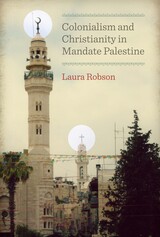 Colonialism and Christianity in Mandate Palestine
By Laura Robson
University of Texas Press, 2011 Drawing on a rich base of British archival materials, Arabic periodicals, and secondary sources, Colonialism and Christianity in Mandate Palestine brings to light the ways in which the British colonial state in Palestine exacerbated sectarianism. By transforming Muslim, Christian, and Jewish religious identities into legal categories, Laura Robson argues, the British ultimately marginalized Christian communities in Palestine. Robson explores the turning points that developed as a result of such policies, many of which led to permanent changes in the region's political landscapes. Cases include the British refusal to support Arab Christian leadership within Greek-controlled Orthodox churches, attempts to avert involvement from French or Vatican-related groups by sidelining Latin and Eastern Rite Catholics, and interfering with Arab Christians' efforts to cooperate with Muslims in objecting to Zionist expansion. Challenging the widespread but mistaken notion that violent sectarianism was endemic to Palestine, Colonialism and Christianity in Mandate Palestine shows that it was intentionally stoked in the wake of British rule beginning in 1917, with catastrophic effects well into the twenty-first century.
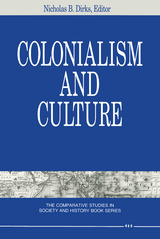 Colonialism and Culture
Nicholas B. Dirks, Editor
University of Michigan Press, 1992 Colonialism and Culture, edited by Nicholas B. Dirks, is an insightful exploration of the intricate relationship between colonialism and cultural transformation. The book features contributions that reflect how colonialism reshaped cultural identities and expressions across the globe, and how it remains a potent force defining both historical and contemporary landscapes. Drawing on cases from different historical periods and geographic locations, the essays examine how colonial powers imposed and justified their dominance through cultural means—such as transforming local cultures into rigid categories of the "other." The impact of this cultural hegemony extended beyond the local to influence metropolitan societies, altering notions of race, nationality, and power even in the colonizers’ homelands. Essays delve into various aspects such as the role of missionary work in the Philippines, peasant resistance in Southeast Asia, labor practices in colonial Kenya, and the conceptualization of time and development in colonial India. The work encourages a reconsideration of colonialism not just as a historical occurrence but as an active component in the configuration of modern cultural and social institutions. Engaging with the intersection of power and culture, the book challenges readers to rethink traditional narratives of empire and its legacy, offering new insights into the ongoing global implications of colonial structures.
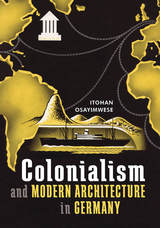 Colonialism and Modern Architecture in Germany
Itohan Osayimwese
University of Pittsburgh Press, 2017 Over the course of the nineteenth century, drastic social and political changes, technological innovations, and exposure to non-Western cultures affected Germany’s built environment in profound ways. The economic challenges of Germany’s colonial project forced architects designing for the colonies to abandon a centuries-long, highly ornamental architectural style in favor of structural technologies and building materials that catered to the local contexts of its remote colonies, such as prefabricated systems. As German architects gathered information about the regions under their influence in Africa, Asia, and the Pacific—during expeditions, at international exhibitions, and from colonial entrepreneurs and officials—they published their findings in books and articles and organized lectures and exhibits that stimulated progressive architectural thinking and shaped the emerging modern language of architecture within Germany itself.
Offering in-depth interpretations across the fields of architectural history and postcolonial studies, Itohan Osayimwese considers the effects of colonialism, travel, and globalization on the development of modern architecture in Germany from the 1850s until the 1930s. Since architectural developments in nineteenth-century Germany are typically understood as crucial to the evolution of architecture worldwide in the twentieth century, this book globalizes the history of modern architecture at its founding moment.
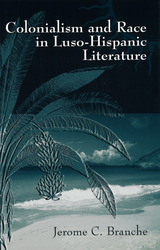 Colonialism and Race in Luso-Hispanic Literature
Jerome C. Branche
University of Missouri Press, 2006
In Colonialism and Race in Luso-Hispanic Literature, Jerome C. Branche examines race naming and race making in the modern period (1415–1948). During this time, racism, a partner to both slavery and colonial exploitation, took myriad discursive forms, ranging from the reflections and treatises of philosophers and scientists to travel writing, novels, poetry, drama, and the grammar of everyday life. Branche’s main premise is that modern race making went hand in hand with European expansion, the colonial enterprise, and the international development of capitalism.
Branche looks at the racially partisan works of the Luso-Hispanic canon to document just how long lasting, widespread, and deep the feelings they expressed were. He also illustrates how important race as narrative has been and continues to be. Branche pays particular attention to the Portuguese travel writing of the mid-fifteenth century, Spanish drama of the sixteenth and seventeenth centuries, Cuban and Brazilian antislavery texts of the nineteenth century, and the Afro-Antillean negrismo movement of the twentieth century.
While Colonialism and Race in Luso-Hispanic Literature complements important studies of the 1970s and 1990s that treat black identity in the Spanish literary tradition, at the same time its range is wider than many other works because of the inclusion of the Luso-Brazilian dimension, its examination of extraliterary texts, and its coverage of a broader time frame. Branche’s marriage of postcolonial and cultural theory with his own close readings of related texts leads to a provocative reconsideration of how the Negro was portrayed in Latin American cultural discourse.
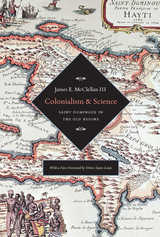 Colonialism and Science: Saint Domingue and the Old Regime
James E. McClellan III
University of Chicago Press, 2010 How was the character of science shaped by the colonial experience? In turn, how might we make sense of how science contributed to colonialism? Saint Domingue (now Haiti) was the world’s richest colony in the eighteenth century and home to an active society of science—one of only three in the world, at that time. In this deeply researched and pathbreaking study of the colony, James E. McClellan III first raised his incisive questions about the relationship between science and society that historians of the colonial experience are still grappling with today. Long considered rare, the book is now back in print in an English-language edition, accompanied by a new foreword by Vertus Saint-Louis, a native of Haiti and a widely-acknowledged expert on colonialism. Frequently cited as the crucial starting point in understanding the Haitian revolution, Colonialism and Science will be welcomed by students and scholars alike. “By deftly weaving together imperialism and science in the story of French colonialism, [McClellan] . . . brings to light the history of an almost forgotten colony.”—Journal of Modern History “McClellan has produced an impressive case study offering excellent surveys of Saint Domingue’s colonial history and its history of science.”—Isis
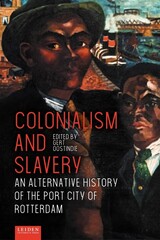 Colonialism and Slavery: An Alternative History of the Port City of Rotterdam
Gert Oostindie
Leiden University Press, 2021 Unlike most city histories, this book focuses exclusively on the city’s connections with colonialism and slavery. Rotterdam, the second-largest Dutch city, is one of Europe’s leading ports. Its maritime expansion was intrinsically linked to Dutch colonialism, including slave trading and colonial slavery in the Americas, Africa and Asia. This painful history sits uneasily with the city’s modern cosmopolitan image and its large population of ‘new Rotterdammers’ with colonial roots. The present volume provides a summary of the research that has documented this history, with chapters on the contribution of colonial trade to economic development; the city’s involvement in slavery; the role of the urban political elites; the impact on urban development and architecture; the ‘ethical impulse’; colonial art and ethnographic collections; colonial and postcolonial migration; and finally the resonance of this history in postcolonial Rotterdam.
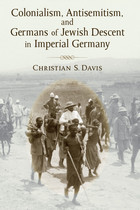 Colonialism, Antisemitism, and Germans of Jewish Descent in Imperial Germany
Christian S. Davis
University of Michigan Press, 2012 Colonialism, Antisemitism, and Germans of Jewish Descent in Imperial Germany examines the relationship between the colonial and antisemitic movements of modern Germany from 1871 to 1918, examining the complicated ways in which German antisemitism and colonialism fed off of and into each other in the decades before the First World War. Author Christian S. Davis studies the significant involvement with and investment in German colonialism by the major antisemitic political parties and extra-parliamentary organizations of the day, while also investigating the prominent participation in the colonial movement of Jews and Germans of Jewish descent and their tense relationship with procolonial antisemites. Working from the premise that the rise and propagation of racial antisemitism in late-nineteenth-century Germany cannot be separated from the context of colonial empire, Colonialism, Antisemitism, and Germans of Jewish Descent in Imperial Germany is the first work to study the dynamic and evolving interrelationship of the colonial and antisemitic movements of the Kaiserreich era. It shows how individuals and organizations who originated what would later become the ideological core of National Socialism---racial antisemitism---both influenced and perceived the development of a German colonial empire predicated on racial subjugation. It also examines how colonialism affected the contemporaneous German antisemitic movement, dividing it over whether participation in the nationalist project of empire building could furnish patriotic credentials to even Germans of Jewish descent. The book builds upon the recent upsurge of interest among historians of modern Germany in the domestic impact and character of German colonialism, and on the continuing fascination with the racialization of the German sense of self that became so important to German history in the twentieth century.
Colonialism, Capitalism and Racism: A Postcolonial Chronicle of Dutch and Belgian Practice
Jan Breman
Amsterdam University Press, 2024 For a long time, Europe’s colonizing powers justified their urge for expansion with the conviction that they were ‘bringing civilization to territories where civilization was lacking.’ This doctrine of white superiority and indigenous inferiority was accompanied by a boundless exploitation of local labor. Under colonial rule, the ideology that later became known as neoliberalism was free to subject labor to a capitalism tainted by racialized policies. This political economy has now become dominant in the Western world, too, and has reversed the trend towards equality. In Colonialism, Capitalism and Racism, Jan Breman shows how racial favoritism is no longer contained to ‘faraway, indigenous peoples,’ but has become a source of polarization within Western societies as well.
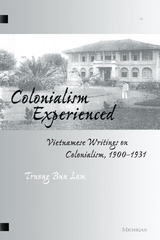 Colonialism Experienced: Vietnamese Writings on Colonialism, 1900-1931
Truong Buu Lam
University of Michigan Press, 2000 The first three decades of the twentieth century in late-colonial Vietnam--the period that also marked the transition between the dominant Confucian and nascent Western worldviews--generated an abundance of political literature in that country. The documents from this transitional era belong to a variety of genres: propaganda pamphlets, open letters to government officials, texts for private or clandestine classrooms, manifestos of political or cultural organizations, columns from newspapers, public proclamations, petitions to international agencies, and poems. Whether from the old or the new era, however, they all expressed an opinion on the colonial status of their country.
Scholar Truong Buu Lam has collected twenty of these documents, all written between 1900 and 1931, into an anthology which captures the spirit of the conflicting ideologies and the political struggles of this time. Written originally in Vietnamese, French, or classical Chinese, the documents have been translated into English by Lam and given individual introductions in an effort to clarify their historical contexts most accurately. Lam also provides a lengthy overview of the contemporary scene at the time of the writings to further illuminate the grander themes tying the writings together.
In Vietnam, all of these writings are well-known texts, quoted in every publication that examines the period under consideration; yet, to the best of our knowledge, few have been reproduced in their entirety and none has ever been translated into English. This translation marks an important addition to the fields of Southeast Asian and colonial studies and will be welcomed by historians, political scientists, and anthropologists alike.
Truong Buu Lam is Associate Professor of History, University of Hawaii at Manoa. He is editor of the collections Patterns of Vietnamese Response to Foreign Intervention, 1858-1900 and Borrowings and Adaptations in Vietnamese Culture, and the author of Resistance, Rebellion, Revolution: Popular Movements in Vietnamese History and New Lamps for Old: The Transformation of the Vietnamese Administrative Elite.
Colonialism in the Congo Basin, 1880–1940
Samuel H. Nelson
Ohio University Press, 1993 This exceptional study of the Mongo people of the upper Congo River basin focuses on the evolution of Mongo work patterns from the period of the late nineteenth century to 1940, the high-water mark of the colonial period. It brings new evidence from oral histories, anthropological research, and archival records to build on or to correct colonial ethnographic accounts. From this fresh vantage point, Nelson reassesses colonial labor policies and relates them to today’s rural poverty and underdevelopment.
Colonialism, Institutional Change, and Shifts in Global Labour Relations
Edited by Karin Hofmeester and Pim de Zwart
Amsterdam University Press, 2018 This book offers a view of shifts in labour relations in various parts of the world over a breathtaking span, from 1500 to 2000, with a particular emphasis on colonial institutions. How did growing demand for colonial commodities affect labour in the Global South? How did colonial interference with land and labour markets affect developments in labour relations? And what were the effects of the introduction of colonial currencies? The contributors to this volume answer those questions and more, combining global perspectives with impressively detailed case studies.
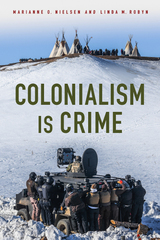 Colonialism Is Crime
Marianne Nielsen
Rutgers University Press, 2019 There is powerful evidence that the colonization of Indigenous people was and is a crime, and that that crime is on-going. Achieving historical colonial goals often meant committing acts that were criminal even at the time. The consequences of this oppression and criminal victimization is perhaps the critical factor explaining why Indigenous people today are overrepresented as victims and offenders in the settler colonist criminal justice systems. This book presents an analysis of the relationship between these colonial crimes and their continuing criminal and social consequences that exist today. The authors focus primarily on countries colonized by Britain, especially the United States. Social harm theory, human rights covenants, and law are used to explain the criminal aspects of the historical laws and their continued effects. The final chapter looks at the responsibilities of settler-colonists in ameliorating these harms and the actions currently being taken by Indigenous people themselves.
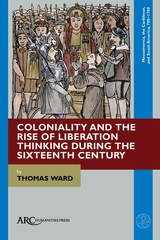 Coloniality and the Rise of Liberation Thinking during the Sixteenth Century
Thomas Ward
Arc Humanities Press, 2021 This book delves into the inadequately explored, liberative side of Humanism during the late Renaissance. While some long-sixteenth-century thinking anticipates twentieth-century Liberation Theology, a more appropriate description is simply “liberation thinking,” which embraces its diverse, timeless, and sometimes nontheological aspects.
Two moments frame the treatment of American colonialism’s physical and mental pathways and the liberative response to them, known as liberation thinking. These are St. Thomas More’s Utopia, published in 1516, and Felipe Guaman Poma de Ayala’s thousand-page Nueva crónica y buen gobierno, completed one hundred years later. These works and others by Erasmus and Bartolomé de las Casas trace the development of the idea of human liberation in the face of degrading chattel and encomienda slavery as well as the peonage that gave rise to the hacienda system in the Americas. Catholic humanists such as More, Erasmus, Las Casas, and Guaman Poma developed arguments, theories, and even theology that attempted to deconstruct those subordinating structures.
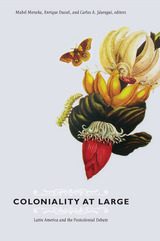 Coloniality at Large: Latin America and the Postcolonial Debate
Mabel Moraña, Enrique Dussel, and Carlos A. Jáuregui, eds.
Duke University Press, 2008 Postcolonial theory has developed mainly in the U.S. academy, and it has focused chiefly on nineteenth-century and twentieth-century colonization and decolonization processes in Asia, Africa, the Middle East, and the Caribbean. Colonialism in Latin America originated centuries earlier, in the transoceanic adventures from which European modernity itself was born. Coloniality at Large brings together classic and new reflections on the theoretical implications of colonialism in Latin America. By pointing out its particular characteristics, the contributors highlight some of the philosophical and ideological blind spots of contemporary postcolonial theory as they offer a thorough analysis of that theory’s applicability to Latin America’s past and present. Written by internationally renowned scholars based in Latin America, the United States, and Europe, the essays reflect multiple disciplinary and ideological perspectives. Some are translated into English for the first time. The collection includes theoretical reflections, literary criticism, and historical and ethnographic case studies focused on Ecuador, Guatemala, Mexico, Brazil, the Andes, and the Caribbean. Contributors examine the relation of Marxist thought, dependency theory, and liberation theology to Latin Americans’ experience of and resistance to coloniality, and they emphasize the critique of Occidentalism and modernity as central to any understanding of the colonial project. Analyzing the many ways that Latin Americans have resisted imperialism and sought emancipation and sovereignty over several centuries, they delve into topics including violence, identity, otherness, memory, heterogeneity, and language. Contributors also explore Latin American intellectuals’ ambivalence about, or objections to, the “post” in postcolonial; to many, globalization and neoliberalism are the contemporary guises of colonialism in Latin America. Contributors: Arturo Arias, Gordon Brotherston, Santiago Castro-Gómez, Sara Castro-Klaren, Amaryll Chanady, Fernando Coronil, Román de la Campa, Enrique Dussel, Ramón Grosfoguel, Russell G. Hamilton, Peter Hulme, Carlos A. Jáuregui, Michael Löwy, Nelson Maldonado-Torres, José Antonio Mazzotti, Eduardo Mendieta, Walter D. Mignolo, Mario Roberto Morales, Mabel Moraña, Mary Louise Pratt, Aníbal Quijano, José Rabasa, Elzbieta Sklodowska, Catherine E. Walsh
 Coloniality in the Cliff Swallow: The Effect of Group Size on Social Behavior
Charles R. Brown and Mary Bomberger Brown
University of Chicago Press, 1996 Many animal species live and breed in colonies. Although biologists have documented numerous costs and benefits of group living, such as increased competition for limited resources and more pairs of eyes to watch for predators, they often still do not agree on why coloniality evolved in the first place.
Drawing on their twelve-year study of a population of cliff swallows in Nebraska, the Browns investigate twenty-six social and ecological costs and benefits of coloniality, many never before addressed in a systematic way for any species. They explore how these costs and benefits are reflected in reproductive success and survivorship, and speculate on the evolution of cliff swallow coloniality.
This work, the most comprehensive and detailed study of vertebrate coloniality to date, will be of interest to all who study social animals, including behavioral ecologists, population biologists, ornithologists, and parasitologists. Its focus on the evolution of coloniality will also appeal to evolutionary biologists and to psychologists studying decision making in animals.
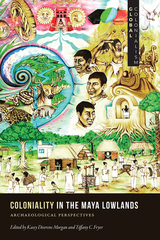 Coloniality in the Maya Lowlands: Archaeological Perspectives
edited by Kasey Diserens Morgan &Tiffany C. Fryer
University Press of Colorado, 2022 Coloniality in the Maya Lowlands explores what has been required of the Maya to survive both internal and external threats and other destabilizing forces. These include shifting power dynamics and sociocultural transformations, tumultuous political regimes, the precarity of newly formed nation states, migration in search of refuge, and newly globalizing economies in the Yucatecan lowlands in the Late Colonial to Early National periods—the times when formal Spanish colonial rule was giving way to Yucatecan and Mexican neocolonial settler systems.
The work takes a hemispheric approach to the historical and material analysis of colonialism, bridging the often disparate literatures on coloniality and settler colonialism. Archaeologists and anthropologists working in what are today southeastern Mexico, Belize, Guatemala, and Honduras grapple with the material realities of coloniality at a regional level. They provide sustained discussions of Maya experiences with wide-ranging colonial endurances: violence, resource insecurity, land rights, refugees, the control of borders, the movement of contraband, surveillance, individual and collective agency, consumption, and use of historic resources.
Considering a future for historical archaeologies of the Maya region that bridges anthropology, ethnohistory, Indigenous studies, settler colonial studies, and Latin American studies, Coloniality in the Maya Lowlands presents a new understanding of how ways of being in the Maya world have formed and changed over time, as well as the shared investments of historical archaeologists and sociocultural anthropologists working in the Maya region.
Contributors: Fernando Armstrong-Fumero, Alejandra Badillo Sánchez, Adolfo Iván Batún Alpuche, A. Brooke Bonorden, Maia C. Dedrick, Scott L. Fedick, Fior García Lara, John Gust, Brett A. Houk, Rosemary A. Joyce, Gertrude B. Kilgore, Jennifer P. Mathews, Patricia A. McAnany, James W. Meierhoff, Fabián A. Olán de la Cruz, Julie K. Wesp
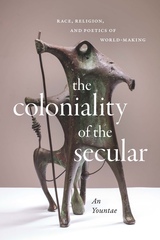 The Coloniality of the Secular: Race, Religion, and Poetics of World-Making
An Yountae
Duke University Press, 2024 In The Coloniality of the Secular, An Yountae investigates the collusive ties between the modern concepts of the secular, religion, race, and coloniality in the Americas. Drawing on the work of Édouard Glissant, Frantz Fanon, Aimé Césaire, Sylvia Wynter, and Enrique Dussel, An maps the intersections of revolutionary non-Western thought with religious ideas to show how decoloniality redefines the sacred as an integral part of its liberation vision. He examines these thinkers’ rejection of colonial religions and interrogates the narrow conception of religion that confines it within colonial power structures. An explores decoloniality’s conception of the sacred in relation to revolutionary violence, gender, creolization, and racial phenomenology, demonstrating its potential for reshaping religious paradigms. Pointing out that the secular has been pivotal to regulating racial hierarchies under colonialism, he advocates for a broader understanding of religion that captures the fundamental ideas that drive decolonial thinking. By examining how decolonial theory incorporates the sacred into its vision of liberation, An invites readers to rethink the transformative power of decoloniality and religion to build a hopeful future.
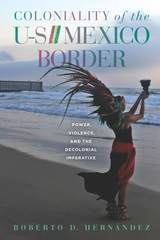 Coloniality of the US/Mexico Border: Power, Violence, and the Decolonial Imperative
Roberto D. Hernández
University of Arizona Press, 2018 National borders are often taken for granted as normal and necessary for a peaceful and orderly global civil society. Roberto D. Hernández here advances a provocative argument that borders—and border violence—are geospatial manifestations of long histories of racialized and gendered colonial violence.
In Coloniality of the U-S///Mexico Border, Hernández offers an exemplary case and lens for understanding what he terms the “epistemic and cartographic prison of modernity/coloniality.” He adopts “coloniality of power” as a central analytical category and framework to consider multiple forms of real and symbolic violence (territorial, corporeal, cultural, and epistemic) and analyzes the varied responses by diverse actors, including local residents, government officials, and cultural producers.
Based on more than twenty years of border activism in San Diego–Tijuana and El Paso–Ciudad Juárez, this book is an interdisciplinary examination that considers the 1984 McDonald’s massacre, Minutemen vigilantism, border urbanism, the ongoing murder of women in Ciudad Juárez, and anti-border music.
Hernández’s approach is at once historical, ethnographic, and theoretically driven, yet it is grounded in analyses and debates that cut across political theory, border studies, and cultural studies. The volume concludes with a theoretical discussion of the future of violence at—and because of—national territorial borders, offering a call for epistemic and cartographic disobedience.
Coloniality, Religion, and the Law in the Early Iberian World
Santa Arias
Vanderbilt University Press, 2013 From postcolonial, interdisciplinary, and transnational perspectives, this collection of original essays looks at the experience of Spain's empire in the Atlantic and the Pacific and its cultural production.
Hispanic Issues Series
Nicholas Spadaccini, Editor-in-Chief
Hispanic Issues Online
hispanicissues.umn.edu/online_main.html
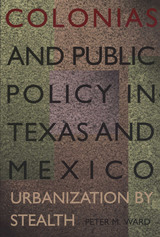 Colonias and Public Policy in Texas and Mexico: Urbanization by Stealth
By Peter M. Ward
University of Texas Press, 1999 Today in Texas, over 1500 colonias in the counties along the Mexican border are home to some 400,000 people. Often lacking basic services, such as electricity, water and sewerage, fire protection, policing, schools, and health care, these "irregular" subdivisions offer the only low-cost housing available to the mostly Hispanic working poor. This book presents the results of a major study of colonias in three transborder metropolitan areas and uncovers the reasons why colonias are spreading so rapidly. Peter Ward compares Texas colonias with their Mexican counterparts, many of which have developed into fully integrated working-class urban communities. He describes how Mexican governments have worked with colonia residents to make physical improvements and upgrade services-a model that Texas policymakers can learn from, Ward asserts. Finally, he concludes with a hard-hitting checklist of public policy initiatives that need to be considered as colonia housing policy enters its second decade in Texas.
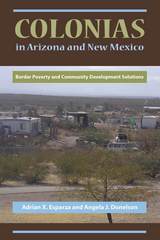 Colonias in Arizona and New Mexico: Border Poverty and Community Development Solutions
Adrian X. Esparza and Angela J. Donelson
University of Arizona Press, 2008 There are approximately half a million people living in 227 officially designated colonias in southern Arizona and New Mexico. These border communities are characterized by poor-quality housing, a lack of infrastructure (paved roads, water and sewer systems, and electricity), high levels of poverty and unemployment, and a disproportionate concentration of Hispanics. These colonias comprise one of the country’s largest pockets of poverty. Even so, little is known about these towns or the people who live in them. This book provides the first comprehensive treatment of Arizona and New Mexico colonias, with the aim of increasing their visibility and promoting community development.
Beginning with an examination of the origins of border region settlement and the emergence of colonias in southern Arizona and New Mexico in the late 1800s, the book then turns to an assessment of current social, economic, and housing conditions. The authors also examine how Mexico’s recent economic crises and U.S. immigration and border security policies have shaped the quality of life in colonias, and they evaluate recent community development initiatives. By examining the challenges and successes of these recent efforts, the authors are able to provide a generalized plan for community development. Balancing analyses of these communities with a review of the positive steps taken to improve the quality of life of their inhabitants, Colonias in Arizona and New Mexico is an indispensable tool for anyone interested in public policy or immigration issues.
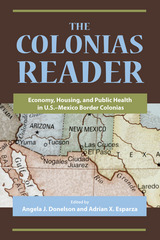 The Colonias Reader: Economy, Housing and Public Health in U.S.-Mexico Border Colonias
Edited by Angela J. Donelson and Adrian X. Esparza
University of Arizona Press, 2010 The colonias of the U.S.–Mexico border form a loose network of more than 2,500 settlements, ranging in size from villages to cities, that are home to over a million people. While varying in size, all share common features: wrenching poverty, substandard housing, and public health issues approaching crisis levels. This book brings together scholars, professionals, and activists from a wide range of disciplines to examine the pressing issues of economic development, housing and community development, and public and environmental health in colonias of the four U.S.–Mexico border states.
The Colonias Reader is the first book to present such a broad overview of these communities, offering a glimpse into life in the colonias and the circumstances that allow them to continue to exist—and even grow—in persistent poverty. The contributors document the depth of existing problems in each state and describe how government agencies, nongovernmental organizations, and community activists have mobilized resources to overcome obstacles to progress.
More than reporting problems and documenting programs, the book provides conceptual frameworks that tie poverty to institutional and class-based conflicts, and even challenges the very basis of colonia designations. Most of these contributions move beyond portraying border residents as hapless victims of discrimination and racism, showing instead their devotion to improving their own living conditions through grassroots organizing and community leadership.
These contributions show that, despite varying degrees of success, all colonia residents aspire to a livable wage, safe and decent housing, and basic health care. The Colonias Reader showcases many situations in which these people have organized to fulfill these ambitions and provides new insight into life along the border.
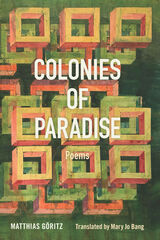 Colonies of Paradise: Poems
Matthias Göritz, translated from the German by Mary Jo Bang
Northwestern University Press, 2023 The first book of poetry by Matthias Göritz to be available in English, in a translation by a renowned writer
Very few books of poetry by contemporary German writers are available to English-speaking readers. In Colonies of Paradise, acclaimed poet and translator Mary Jo Bang introduces the poems of novelist, poet, and translator Matthias Göritz, one of the most exciting German writers publishing today. The poems in this book, which originally appeared in German under the title Loops, take the reader on a tour of Paris, Chicago, Hamburg, and Moscow as they explore childhood, travel, and the human experience. Unsettling our expectations about adulthood, the book permeates the quotidian with a disquieting strangeness that leads us deeper into our own lives and histories. Göritz’s sly humor, keen insight, and artistry are brought to the fore in Bang’s careful and innovative translation, allowing an English-language audience to enter fully the intricate interiority of Göritz’s work.
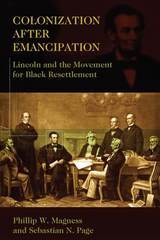 Colonization After Emancipation: Lincoln and the Movement for Black Resettlement
Phillip W. Magness and Sebastian N. Page
University of Missouri Press, 2011 History has long acknowledged that President Abraham Lincoln, the Great Emancipator, had considered other approaches to rectifying the problem of slavery during his administration. Prior to Emancipation, Lincoln was a proponent of colonization: the idea of sending African American slaves to another land to live as free people. Lincoln supported resettlement schemes in Panama and Haiti early in his presidency and openly advocated the idea through the fall of 1862. But the bigoted, flawed concept of colonization never became a permanent fixture of U.S. policy, and by the time Lincoln had signed the Emancipation Proclamation on January 1, 1863, the word “colonization” had disappeared from his public lexicon. As such, history remembers Lincoln as having abandoned his support of colonization when he signed the proclamation. Documents exist, however, that tell another story.
Colonization after Emancipation: Lincoln and the Movement for Black Resettlement explores the previously unknown truth about Lincoln’s attitude toward colonization. Scholars Phillip W. Magness and Sebastian N. Page combed through extensive archival materials, finding evidence, particularly within British Colonial and Foreign Office documents, which exposes what history has neglected to reveal—that Lincoln continued to pursue colonization for close to a year after emancipation. Their research even shows that Lincoln may have been attempting to revive this policy at the time of his assassination.
Using long-forgotten records scattered across three continents—many of them untouched since the Civil War—the authors show that Lincoln continued his search for a freedmen’s colony much longer than previously thought. Colonization after Emancipation reveals Lincoln’s highly secretive negotiations with the British government to find suitable lands for colonization in the West Indies and depicts how the U.S. government worked with British agents and leaders in the free black community to recruit emigrants for the proposed colonies. The book shows that the scheme was never very popular within Lincoln’s administration and even became a subject of subversion when the president’s subordinates began battling for control over a lucrative “colonization fund” established by Congress.
Colonization after Emancipation reveals an unexplored chapter of the emancipation story. A valuable contribution to Lincoln studies and Civil War history, this book unearths the facts about an ill-fated project and illuminates just how complex, and even convoluted, Abraham Lincoln’s ideas about the end of slavery really were.
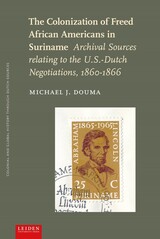 The Colonization of Freed African Americans in Suriname: Archival Sources relating to the U.S.-Dutch Negotiations, 1860-1866
Michael J. Douma
Leiden University Press, 2019 During the American Civil War, President Abraham Lincoln’s administration engaged in protracted negotiations with representatives of the Netherlands to aid in the voluntarily colonization of free African Americans to Suriname. Scores of diplomatic letters in Dutch, English, and French, dating to the period 1862 to 1866 attest to the very real possibility that such migration stream could have become a reality. They also indicate reasons why this scheme failed: it was bogged down by differences of opinion, mail delays, and ultimately a reluctance of any African Americans to migrate. Previously unpublished and unknown, these letters have been transcribed and translated here for the first time. The sources provide a rare look inside the minds of liberal government officials during the age of emancipation in the Atlantic World. They demonstrate the officials’ humanitarian concerns, their racial prejudices, respect for legal order and process, and faith in governments to solve international problems.
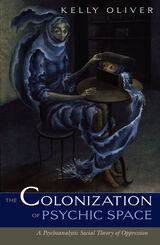 Colonization Of Psychic Space: A Psychoanalytic Social Theory Of Oppression
Kelly Oliver
University of Minnesota Press, 2004 Reveals the psychic and social costs of racial and sexual oppression We are, Julia Kristeva writes, strangers to ourselves; and indeed much of contemporary theory, whether psychoanalytic, historical, social, or critical, describes the human condition as one of alienation. Eloquently arguing that we cannot explain the development of individuality or subjectivity apart from its social context, Kelly Oliver makes a powerful case for recognizing the social aspects of alienation and the psychic aspects of oppression. Oliver’s work shows how existentialist and psychoanalytic notions of alienation cover up specific forms of racist and sexist alienation that serve as the underside of the human condition. She reveals that such notions are actually symptomatic of the subject’s anxiety and guilt over the oppression on which his privileged position rests. Not only does such alienation not embody subjectivity and humanity, it in fact undermines them.Asserting that sublimation and forgiveness—and not alienation—constitute subjectivity, Oliver explores the complex ways in which the alienation unique to oppression leads to depression, shame, anger, or violence; and how these affects, now often misread and misdiagnosed, can be transformed into agency, individuality, solidarity, and community.
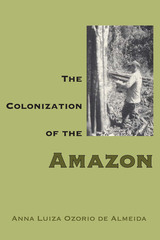 The Colonization of the Amazon
By Anna Luiza Ozorio de Almeida
University of Texas Press, 1992 Deforestation in the Amazon, one of today's top environmental concerns, began during a period of rapid colonization in the 1970s. Throughout that decade, Anna Luiza Ozorio de Almeida, a Stanford-trained economist, conducted a complex and massive economic study of what was going on in the Amazon, who was investing what, what was gained, and what it cost in all its aspects. The Colonization of the Amazon, the resulting work, brings together information on the physical, demographic, institutional, and economic dimensions of directed settlement in the Amazon Basin and raises significant questions about the gains and losses of the settlers, the reasons for these outcomes, and the economic rationale behind the devastation of the rainforest. Particularly illuminating is Almeida's exploration of the role of the frontier in Brazil and her distinction between types of migrants and migrations. She concludes that the political costs avoided by not undertaking agrarian reform are being paid by devastating the Amazon, with the conflict between distribution and conservation steadily worsening. Today, it can no longer be circumvented.
Colonization, Violence, and Narration in White South African Writing: André Brink, Breyten Breytenbach, and J. M. Coetzee
Rosemary Jane Jolly
Ohio University Press, 1995 The representation of pain and suffering in narrative form is an ongoing ethical issue in contemporary South African literature. Can violence be represented without sensationalistic effects, or, alternatively, without effects that tend to be conservative because they place the reader in a position of superiority over the victim or the perpetrator? Jolly looks at three primary South African authors—André Brink, Breyten Breytenbach, and J. M. Coetzee—to consider violence in the context of apartheid and colonialism and their inherent patriarchies. Jolly also discusses the violence attendant upon the act of narration in the broader context of critiques of Kafka, Freud, Hegel, the postcolonial critics Jan Mohamed and Bhabha, and feminists such as Susan Suleiman.
Colonizing, Decolonizing, and Globalizing Kolkata: From a Colonial to a Post-Marxist City
Siddhartha Sen
Amsterdam University Press, 2017 Colonizing, Decolonizing, and Globalizing Kolkata offers an extended analysis of the architecture and urban planning of Kolkata from the earliest days of colonialism through independence and on into the twenty-first century, all set in the larger context of Indian cities’ architecture and urban planning. What Siddhartha Sen shows is the transformation of a colonial city into a Marxist one — and ongoing attempts to further transform Kolkata into a global city. Richly illustrated, the book carefully situates architecture, design, and urban planning within Kolkata’s political economy and social milieu.
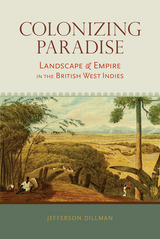 Colonizing Paradise: Landscape and Empire in the British West Indies
Jefferson Dillman
University of Alabama Press, 2015 Explores how perceptions and depictions of the physical landscape both reflected and influenced the history of the British colonial Caribbean
In Colonizing Paradise, historian Jefferson Dillman charts the broad spectrum of sentiments that British citizens and travelers held regarding their colonial possessions in the West Indies. Myriad fine degrees of ambivalence separated extreme views of the region as an idyllic archipelago or a nest of Satanic entrapments. Dillman shows the manner in which these authentic or spontaneous depictions of the environment were shaped to form a narrative that undergirded Britain’s economic and political aims in the region.
Because British sentiments in the Caribbean located danger and evil not just in indigenous populations but in Spanish Catholics as well, Dillman’s work begins with the arrival of Spanish explorers and conquistadors. Colonizing Paradise spans the arrival of English ships and continues through the early nineteenth century and the colonial era. Dillman shows how colonial entrepreneurs, travelers, and settlers engaged in a disquieted dialogue with the landscape itself, a dialogue the examination of which sheds fresh light on the culture of the Anglophone colonial Caribbean.
Of particular note are the numerous mythical, metaphorical, and biblical lenses through which Caribbean landscapes were viewed, from early views of the Caribbean landscape as a New World paradise to later depictions of the landscape as a battleground between the forces of Christ and Satan. The ideal of an Edenic landscape persisted, but largely, Dillman argues, as one that needed to be wrested from the forces of darkness, principally through the work of colonization, planting, cataloguing, and a rational ordering of the environment.
Ultimately, although planters and their allies continued to promote pastoral and picturesque views of the Caribbean landscape, the goal of such narratives was to rationalize British rule as well as to mask and obscure emerging West Indian problems such as diseases, slavery, and rebellions. Colonizing Paradise offers much to readers interested in Caribbean, British, and colonial history.
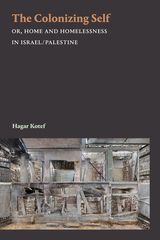 The Colonizing Self: Or, Home and Homelessness in Israel/Palestine
Hagar Kotef
Duke University Press, 2020 Colonizers continuously transform spaces of violence into spaces of home. Israeli Jews settle in the West Bank and in depopulated Palestinian houses in Haifa or Jaffa. White missionaries build their lives in Africa. The descendants of European settlers in the Americas and Australia dwell and thrive on expropriated indigenous lands. In The Colonizing Self Hagar Kotef traces the cultural, political, and spatial apparatuses that enable people and nations to settle on the ruins of other people's homes. Kotef demonstrates how the mass and structural modes of violence that are necessary for the establishment and sustainment of the colony dwell within settler-colonial homemaking, and through it shape collective and individual identities. She thus powerfully shows how the possibility to live amid the destruction one generates is not merely the possibility to turn one's gaze away from violence but also the possibility to develop an attachment to violence itself. Kotef thereby offers a theoretical framework for understanding how settler-colonial violence becomes inseparable from one's sense of self.
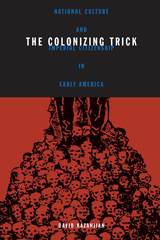 Colonizing Trick: National Culture And Imperial Citizenship In Early America
David Kazanjian
University of Minnesota Press, 2003 An illuminating look at the concepts of race, nation, and equality in eighteenth- and nineteenth-century America The idea that “all men are created equal” is as close to a universal tenet as exists in American history. In this hard-hitting book, David Kazanjian interrogates this tenet, exploring transformative flash points in early America when the belief in equality came into contact with seemingly contrary ideas about race and nation. The Colonizing Trick depicts early America as a white settler colony in the process of becoming an empire-—one deeply integrated with Euro-American political economy, imperial ventures in North America and Africa, and pan-American racial formations. Kazanjian traces tensions between universal equality and racial or national particularity through theoretically informed critical readings of a wide range of texts: the political writings of David Walker and Maria Stewart, the narratives of black mariners, economic treatises, the personal letters of Thomas Jefferson and Phillis Wheatley, Charles Brockden Brown’s fiction, congressional tariff debates, international treaties, and popular novelettes about the U.S.–Mexico War and the Yucatán’s Caste War. Kazanjian shows how emergent racial and national formations do not contradict universalist egalitarianism; rather, they rearticulate it, making equality at once restricted, formal, abstract, and materially embodied.
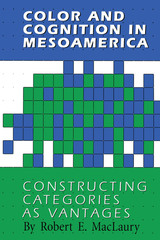 Color and Cognition in Mesoamerica: Constructing Categories as Vantages
By Robert E. MacLaury
University of Texas Press, 1996 More than 100 indigenous languages are spoken in Mexico and Central America. Each language partitions the color spectrum according to a pattern that is unique in some way. But every local system of color categories also shares characteristics with the systems of other Mesoamerican languages and of languages elsewhere in the world. This book presents the results of the Mesoamerican Color Survey, which Robert E. MacLaury conducted in 1978-1981. Drawn from interviews with 900 speakers of some 116 Mesoamerican languages, the book provides a sweeping overview of the organization and semantics of color categorization in modern Mesoamerica. Extensive analysis and MacLaury's use of vantage theory reveal complex and often surprising interrelationships among the ways languages categorize colors. His findings offer valuable cross-cultural data for all students of Mesoamerica. They will also be of interest to all linguists and cognitive scientists working on theories of categorization more generally.
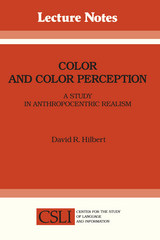 Color and Color Perception: A Study in Anthropocentric Realism
David R. Hilbert
CSLI, 1987 Color has often been supposed to be a subjective property, a property to be analyzed correctly in terms of the phenomenological aspects of human experience. In contrast with subjectivism, an objectivist analysis of color takes color to be a property objects possess in themselves, independently of the character of human perceptual experience. David Hilbert defends a form of objectivism that identifies color with a physical property of surfaces---their spectral reflectance.
This analysis of color is shown to provide a more adequate account of the features of human color vision than its subjectivist rivals. The author's account of color also recognizeds that the human perceptual system provides a limited and idiosyncratic picture of the world. These limitations are shown to be consistent with a realist account of color and to provide the necessary tools for giving an analysis of common sense knowledge of color phenomena.
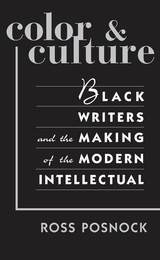 Color and Culture: Black Writers and the Making of the Modern Intellectual
Ross Posnock
Harvard University Press, 1998 The coining of the term “intellectuals” in 1898 coincided with W. E. B. Du Bois’s effort to disseminate values and ideals unbounded by the color line. Du Bois’s ideal of a “higher and broader and more varied human culture” is at the heart of a cosmopolitan tradition that Color and Culture identifies as a missing chapter in American literary and cultural history. The book offers a much needed and startlingly new historical perspective on “black intellectuals” as a social category, ranging over a century—from Frederick Douglass to Patricia Williams, from Du Bois, Pauline Hopkins, and Charles Chesnutt to Nella Larsen, Zora Neale Hurston, and Alain Locke, from Ralph Ellison and James Baldwin to Samuel Delany and Adrienne Kennedy. These writers challenge two durable assumptions: that high culture is “white culture” and that racial uplift is the sole concern of the black intellectual.
The remarkable tradition that this book recaptures, culminating in a cosmopolitan disregard for demands for racial “authenticity” and group solidarity, is strikingly at odds with the identity politics and multicultural movements of our day. In the Du Boisian tradition Ross Posnock identifies a universalism inseparable from the particular and open to ethnicity—an approach with the power to take us beyond the provincialism of postmodern tribalism.
Color and Empathy: Essays on Two Aspects of Film
Christine N. Brinckmann
Amsterdam University Press, 2015 The collection of essays brings together texts from two decades, documenting two of the author's ongoing areas of interest: the poetics of colour in film as well as affective viewer responses. Employing a bottom-up approach as a basis for theoretical exploration, each of the essays concentrates on a particular film or a number of related films to come to terms with a set of issues. These include the differences between black-and-white and color works, the emergence of bold chromatic schemes in the 1950s, experimental aesthetics of color negative stock, idiosyncratic uses of colour, idiosyncratic uses of motor mimicry, genre-specific reactions to the documentary, and empathetic reactions to animals and to architecture in film.
Color Atlas of the Surface Forms of the Earth
Helmut Blume and R. Gardner
Harvard University Press, 1992 This color atlas describes the manifold landforms of the earth's surface and explains how they evolved. The author has selected photos from all over the world in order to achieve a rather complete and systematic survey. In general as well as in explaining photos, the text is both concise and easily readable even for the general reader looking for information on landforms, morphodynamic processes, and also for explanation of geomorphic terms. Text, figures, and photos are arranged in a most didactic way so that the color atlas may serve as an introduction to the subject of geomorphology.
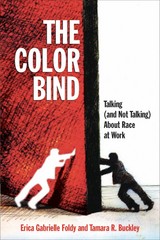 The Color Bind: Talking (and Not Talking) About Race at Work
Erica Gabrielle Foldy
Russell Sage Foundation, 2014 Since the 1960s, the dominant model for fostering diversity and inclusion in the United States has been the “color blind” approach, which emphasizes similarity and assimilation and insists that people should be understood as individuals, not as members of racial or cultural groups. This approach is especially prevalent in the workplace, where discussions about race and ethnicity are considered taboo. Yet, as widespread as “color blindness” has become, many studies show that the practice has damaging repercussions, including reinforcing the existing racial hierarchy by ignoring the significance of racism and discrimination. In The Color Bind, workplace experts Erica Foldy and Tamara Buckley investigate race relations in office settings, looking at how both color blindness and what they call “color cognizance” have profound effects on the ways coworkers think and interact with each other. Based on an intensive two-and-a-half-year study of employees at a child welfare agency, The Color Bind shows how color cognizance—the practice of recognizing the profound impact of race and ethnicity on life experiences while affirming the importance of racial diversity—can help workers move beyond silence on the issue of race toward more inclusive workplace practices. Drawing from existing psychological and sociological research that demonstrates the success of color-cognizant approaches in dyads, workgroups and organizations, Foldy and Buckley analyzed the behavior of work teams within a child protection agency. The behaviors of three teams in particular reveal the factors that enable color cognizance to flourish. While two of the teams largely avoided explicitly discussing race, one group, “Team North,” openly talked about race and ethnicity in team meetings. By acknowledging these differences when discussing how to work with their clients and with each other, the members of Team North were able to dig into challenges related to race and culture instead of avoiding them. The key to achieving color cognizance within the group was twofold: It required both the presence of at least a few members who were already color cognizant, as well as an environment in which all team members felt relatively safe and behaved in ways that strengthened learning, including productively resolving conflict and reflecting on their practice. The Color Bind provides a useful lens for policy makers, researchers and practitioners pursuing in a wide variety of goals, from addressing racial disparities in health and education to creating diverse and inclusive organizations to providing culturally competent services to clients and customers. By foregrounding open conversations about race and ethnicity, Foldy and Buckley show that institutions can transcend the color bind in order to better acknowledge and reflect the diverse populations they serve.
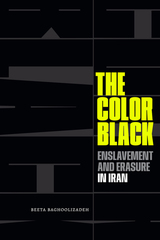 The Color Black: Enslavement and Erasure in Iran
Beeta Baghoolizadeh
Duke University Press, 2024 In The Color Black, Beeta Baghoolizadeh traces the twin processes of enslavement and erasure of Black people in Iran during the nineteenth and twentieth centuries. She illustrates how geopolitical changes and technological advancements in the nineteenth century made enslaved East Africans uniquely visible in their servitude in wealthy and elite Iranian households. During this time, Blackness, Africanness, and enslavement became intertwined—and interchangeable—in Iranian imaginations. After the end of slavery in 1929, the implementation of abolition involved an active process of erasure on a national scale, such that a collective amnesia regarding slavery and racism persists today. The erasure of enslavement resulted in the erasure of Black Iranians as well. Baghoolizadeh draws on photographs, architecture, theater, circus acts, newspapers, films, and more to document how the politics of visibility framed discussions around enslavement and abolition during the nineteenth and twentieth centuries. In this way, Baghoolizadeh makes visible the people and histories that were erased from Iran and its diaspora.
 Color: Essays on Race, Family, and History
Kenneth A. McClane
University of Notre Dame Press, 2009
In 1991, acclaimed poet Kenneth A. McClane published Walls: Essays, 1985-1990, a volume of essays dealing with life in Harlem, the death of his alcoholic brother, and the complexities of being black and middle-class in America. Now, in Color: Essays on Race, Family, and History, McClane contributes further to his self-described “autobiographical sojourn” with a second collection of interconnected essays. In McClane’s words, “All concern race, although they, like the human spirit, wildly sweep and yaw.”
A timely installment in our national narrative, Color is a chronicle of the black middle class, a group rarely written about with sensitivity and charity. In evocative, trenchant, and poetic prose, McClane employs the art of the memoirist to explore the political and the personal. He details the poignant narrative of racial progress as witnessed by his family during the 1950s, ’60s, and ’70s. We learn of his parents’ difficult upbringing in Boston, where they confronted much racism; of the struggles they and McClane encountered as they became the first blacks to enter previously all-white institutions, including the oldest independent school in the United States; and of the part his parents played in the civil rights movement, working with Dr. King and others. The book ends with a tender account of his parents in the throes of Alzheimer’s disease, which claimed both their lives.
“Ken McClane’s latest collection proves that he is one of the finest essayists currently plying the trade. Graceful, incisive, humane, Ken’s writing is both beautifully wrought and deeply informative about how we live life. All of us practicing essayists can only marvel in delight at his skill and envy his accomplishment. I have known Ken since my days in graduate school over twenty-five years ago and I still feel now as I felt then: when I grow up I want to be half the writer Ken McClane is.” —Gerald L. Early, author of The Culture of Bruising: Essays on Prizefighting, Literature, and Modern American Culture and This is Where I Came In: Black America in the 1960s
“Kenneth McClane’s voice is unique in American letters: pragmatic; contemplative; intriguingly moody; at times unabashedly and movingly sentimental. He chronicles a world of black people that is little-known and even less-imagined. Coloris a wonderful book of beautifully written, understated essays by an important writer who has steadily contributed to American letters.” —Elizabeth Alexander, Yale University
“Kenneth McClane argues that the inclusion of a jazz phrase in the midst of another obviously discrete modality becomes an act of communion that 'honors the fragile possibility for mutuality.' He is right, for he does this skillfully in Color. An exciting find, the volume is a compendium of sophisticated essays rendered with deceptive simplicity. Color, always insightful, sometimes inexplicably tender, is that rare volume, seldom encountered, that moves us beyond measure.” —Mari Evans, author of Continuum: New and Selected Poems and Clarity as Concept: A Poet’s Perspective
“The essays that comprise Color are mighty in their directed honesty and uncompromising views of the lived racialized world observed with an intellectual curiosity and wise generosity that astonishes on every page. Through it all, the words hum with love, so that even the pained heart sings.” —Helena Maria Viramontes, author of Their Dogs Came With Them
 Color Harmonies
Augusto Garau
University of Chicago Press, 1993 Because theories of visual perception have traditionally concentrated on form, artists have generally dealt with the problem of color through their own observation and intuition. In Color Harmonies, Augusto Garau systematically investigates the role of both color and form in visual perception and presents an original theory of the aesthetic relations among colors.
Garau, a painter who teaches the psychology of form, pays particular attention to the way colors behave when organized in patterns. His theory of color combination addresses two principal compositional elements: the relations between figure and ground and the phenomenon of transparency.
Garau meticulously analyzes the use of color in paintings by masters such as Cézanne, Picasso, and Matisse to show how his theory applies to actual works of art. Containing many full-color examples, his introduction to the workings of color relations is of great practical use to art historians and critics, artists, interior decorators, fashion and set designers, and anyone who works with color to display information or convey emotions.
"In an area of the psychology of art where reliable guidance is still so hard to come by, [Garau's] well-supported contributions to the theory of color composition ought to be welcomed by practitioners and scholars alike."—from the Foreword by Rudolf Arnheim
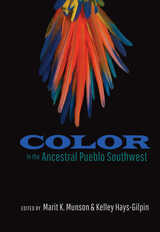 Color in the Ancestral Pueblo Southwest
Edited by Marit K. Munson and Kelley Hays-Gilpin
University of Utah Press, 2019 Color attracts attention, evokes emotions, conveys information, carries complex meanings, and makes things beautiful. Color is so meaningful, in fact, that research on the color choices of Ancestral Pueblo people has the potential to deepen our understanding of religious, social, and economic change in the ancient Southwest. This volume explores museum collections and more than a century of archaeological research to create the first systematic understanding of the many ways Ancestral Pueblo people chose specific colors through time and space to add meaning and visual appeal to their lives.
Beginning with the technical and practical concerns of acquiring pigments and using them to create paints, the authors explore how connections to landscapes and sacred places are embodied by many colorful materials. Contributors examine the development of polychromes and their juxtaposition with black-on-white vessels; document how color was used in rock paintings and architecture; and consider the inherent properties of materials, arguing that shell, minerals, and stone were valued not only for color but for other visual properties as well. The book concludes by considering the technological, economic, social, and ideological factors at play and demonstrates the significant role color played in aesthetic choices.
The Color Line and the Quality of Life in America
Reynolds Farley
Russell Sage Foundation, 1987 Is the United States a nation divided by the "color line," as W.E.B. Dubois declared? What is the impact of race on the lives of Americans today? In this powerful new assessment of the social reality of race, Reynolds Farley and Walter Allen compare demographic, social, and economic characteristics of blacks and whites to discover how and to what extent racial identity influences opportunities and outcomes in our society. They conclude that despite areas of considerable gain, black Americans continue to be substantially disadvantaged relative to whites. A Volume in the Russell Sage Foundation Census Series
The Color Line: Legacy for the Twenty-First Century
John Hope Franklin
University of Missouri Press, 1993 Nearly twenty years after his book Racial Equality in America, Franklin addressed the issue of racial inequality. In the Paul Anthony Brick Lectures given at the University of Missouri-Columbia, just one day after the "not guilty" verdict was returned in the trial of Los Angeles police officers for the beating of Rodney King, Franklin delivered a piercing depiction of the color line that persists in America. A scathing portrait of how discrimination has been allowed to flourish and a poignantly despairing prognosis for its end, The Color Line: Legacy for the Twenty-First Century is a perfect companion to the earlier volume. Together these books powerfully define and describe the long-held, but still unrealized, goal of equal rights for all Americans.
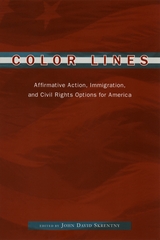 Color Lines: Affirmative Action, Immigration, and Civil Rights Options for America
John David Skrentny
University of Chicago Press, 2001 A new ethnic order has emerged in the United States. The growing number of Latinos and Asians has rendered the old black-and-white binary obsolete. And yet, political pundits and commentators on both the left and the right continue to overlook the changing face of discrimination and opportunity in today's new multiethnic, multiracial America. With Color Lines, John David Skrentny brings us a collection of essays that reexamines the role of affirmative action and civil rights in light of this important shift in American demographics. The book explores issues of public policy, equal opportunity, diversity, multiculturalism, pathways to better work and higher learning, and attempts in countries outside the United States to protect minority civil rights. Combining perspectives from specialists in fields as diverse as sociology, history, political science, and law, Color Lines is a balanced and broad-ranging guide for anyone interested in civil rights policy and the future of ethnic relations in America.
Contributors:
Erik Bleich
Lawrence D. Bobo
Frank Dobbin
John Aubrey Douglass
Hugh Davis Graham
Kyra R. Greene
Erin Kelly
George R. La Noue
Jennifer Lee
Michael Lichter
Deborah C. Malamud
Sunita Parikh
John C. Sullivan
Thomas J. Sugrue
Carol M. Swain
Steven M. Teles
Roger Waldinger
Christine Min Wotipka
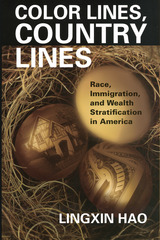 Color Lines, Country Lines: Race, Immigration, and Wealth Stratification in America
Lingxin Hao
Russell Sage Foundation, 2007 The growing number of immigrants living and working in America has become a controversial topic from classrooms to corporations and from kitchen tables to Capitol Hill. Many native-born Americans fear that competition from new arrivals will undermine the economic standing of low-skilled American workers, and that immigrants may not successfully integrate into the U.S. economy. In Color Lines, Country Lines, sociologist Lingxin Hao argues that the current influx of immigrants is changing America's class structure, but not in the ways commonly believed. Drawing on twenty years of national survey data, Color Lines, Country Lines investigates how immigrants are faring as they try to accumulate enough wealth to join the American middle class, and how, in the process, they are transforming historic links between race and socioeconomic status. Hao finds that disparities in wealth among immigrants are large and growing, including disparities among immigrants of the same race or ethnicity. Cuban immigrants have made substantially more progress than arrivals from the Dominican Republic, Chinese immigrants have had more success than Vietnamese or Korean immigrants, and Jamaicans have fared better than Haitians and immigrants from sub-Saharan Africa. Indeed, many of these immigrant groups have acquired more wealth than native-born Americans of the same race or ethnicity. Hao traces these diverging paths to differences in the political and educational systems of the immigrants' home countries, as well as to preferential treatment of some groups by U.S. immigration authorities and the U.S. labor market. As a result, individuals' country of origin increasingly matters more than their race in determining their prospects for acquiring wealth. In a novel analysis, Hao predicts that as large numbers of immigrants arrive in the United States every year, the variation in wealth within racial groups will continue to grow, reducing wealth inequalities between racial groups. If upward mobility remains restricted to only some groups, then the old divisions of wealth by race will gradually become secondary to new disparities based on country of origin. However, if the labor market and the government are receptive to all immigrant groups, then the assimilation of immigrants into the middle class will help diminish wealth inequality in society as a whole. Immigrants' assimilation into the American mainstream and the impact of immigration on the American economy are inextricably linked, and each issue can only be understood in light of the other. Color Lines, Country Lines shows why some immigrant groups are struggling to get by while others have managed to achieve the American dream and reveals the surprising ways in which immigration is reshaping American society.
 Color Me Michigan: A University of Michigan Coloring Book
Melissa Mueller
Michigan Publishing, 2017 If you ever thought that the University of Michigan was only Maize and Blue, think again. The only limit to the palette in this new adult coloring book is your imagination . . . and whatever pens or pencils you have on hand. Celebrate well-known Ann Arbor and U-M landmarks and unearth hidden treasures in the pages of Color Me Michigan, while celebrating the University’s 200-year history.
Whether you are an alum, current student, “Michigan parent,” or simply an admirer of this unique institution, we invite you to relax and reinvigorate your mind, while transforming the variety of black and white images into a colorful keepsake.
This coloring book has been published by Michigan Publishing Services, part of the University of Michigan Library. We exist to help faculty members, staff, and students to effectively disseminate their research, record the history of the institution, and develop affordable resources for teaching and learning.
Color me...Cherry & White: A Temple University Coloring Book
Temple University Press
Temple University Press, 2018 The first ever Temple University adult coloring book, Color Me...Cherry & White contains more than twenty iconic Temple University landmarks. From the magnificent Baptist Temple with its ornate stained glass windows, to Hooter the Owl, the campus food trucks, and the SEPTA rail station, students, parents, and alumni—even future Owls—now have a personal campus canvas to color with markers, pencils or crayons. The images in Color Me...Cherry & White were created from photographs from the University Photography Department and crafted into pages for amateur artists to beautify. The designs will stoke memories as well as provide stress relief as artists create their own impressions of the campus. Moreover, this keepsake will make the perfect gift and provide memories for the worldwide Temple community.
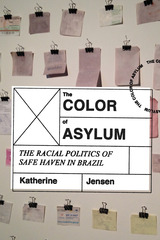 The Color of Asylum: The Racial Politics of Safe Haven in Brazil
Katherine Jensen
University of Chicago Press, 2023 An ethnography of the difficult experiences of refugees in Brazil.
In 2013, as Syrians desperate to escape a brutal war fled the country, Brazil took the remarkable step of instituting an open-door policy for all Syrian refugees. Why did Brazil—in contrast to much of the international community—offer asylum to any Syrian who would come? And how do Syrians differ from other refugee populations seeking status in Brazil?
In The Color of Asylum, Katherine Jensen offers an ethnographic look at the process of asylum seeking in Brazil, uncovering the different ways asylum seekers are treated and the racial logic behind their treatment. She focuses on two of the largest and most successful groups of asylum seekers: Syrian and Congolese refugees. While the groups obtain asylum status in Brazil at roughly equivalent rates, their journey to that status could not be more different, with Congolese refugees enduring significantly greater difficulties at each stage, from arrival through to their treatment by Brazilian officials. As Jensen shows, Syrians, meanwhile, receive better treatment because the Brazilian state recognizes them as white, in a nation that has historically privileged white immigration. Ultimately, however, Jensen reaches an unexpected conclusion: Regardless of their country of origin, even migrants who do secure asylum status find their lives remain extremely difficult, marked by struggle and discrimination.
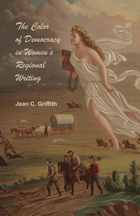 The Color of Democracy in Women's Regional Writing
Jean Carol Griffith
University of Alabama Press, 2009 An exciting addition to the ongoing debate about the place of regionalism in American literary history.
American regionalism has become a contested subject in literary studies alongside the ubiquitous triad of race, class, and gender. The Color of Democracy in Women's Regional Writing enters into the heart of an ongoing debate in the field about the significance of regional fiction at the end of the 19th century. Jean Griffith presents the innovative view that regional writing provided Edith Wharton, Ellen Glasgow, and Willa Cather with the means to explore social transformation in a form of fiction already closely associated with women readers and writers.
Griffith provides new readings of texts by these authors; she places them alongside the works of their contemporaries, including William Faulkner and Langston Hughes, to show regionalism's responses to the debate over who was capable of democratic participation and reading regionalism's changing mediations between natives and strangers as reflections of the changing face of democracy.
This insightful work enriches the current debate about whether regionalism critiques hierarchies or participates in nationalist and racist agendas and will be of great interest to those invested in regional writing or the works of these significant authors.
The Color of Dusk
Robin Caton
Omnidawn, 2001 In The Color of Dusk, Robin Caton bridges traditions of secular, religious, modernist, and post modernist writing to encounter word at its most unsettling, provocative, and urgent. At times conversational, elliptic, meditative, minimalist, expansive, Caton's poems are unified by an insistence to reach, with language, through language, to turn words toward what is ever outside their ability to name.
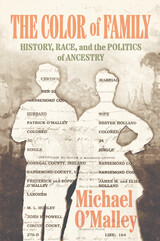 The Color of Family: History, Race, and the Politics of Ancestry
Michael O'Malley
University of Chicago Press, 2024 A uniquely blended personal family history and history of the changing definitions of race in America.
A zealous eugenicist ran Virginia’s Bureau of Vital Statistics in the first half of the twentieth century, misusing his position to reclassify people he suspected of hiding their “true” race. But in addition to being blinded by his prejudices, he and his predecessors were operating more by instinct than by science. Their whole dubious enterprise was subject not just to changing concepts of race but outright error, propagated across generations.
This is how Michael O’Malley, a descendant of a Philadelphia Irish American family, came to have “colored” ancestors in Virginia. In The Color of Family, O’Malley teases out the various changes made to citizens’ names and relationships over the years, and how they affected families as they navigated what it meant to be “white,” “colored,” “mixed race,” and more. In the process, he delves into the interplay of genealogy and history, exploring how the documents that establish identity came about, and how private companies like Ancestry.com increasingly supplant state and federal authorities—and not for the better.
Combining the history of O’Malley’s own family with the broader history of racial classification, The Color of Family is an accessible and lively look at the ever-shifting and often poisoned racial dynamics of the United States.
Color of Law: A Novel
David Milofsky
University Press of Colorado, 2000 This is a rich, absorbing novel about good, evil, and the inability of the legal system to mediate between the two. Two white Milwaukee motorcycle cops pursue and kill a young black man on a bitterly cold winter night in 1959 and with the help of their su
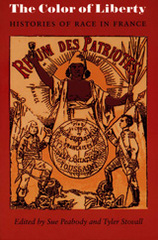 The Color of Liberty: Histories of Race in France
Sue Peabody and Tyler Stovall, eds.
Duke University Press, 2003 France has long defined itself as a color-blind nation where racial bias has no place. Even today, the French universal curriculum for secondary students makes no mention of race or slavery, and many French scholars still resist addressing racial questions. Yet, as this groundbreaking volume shows, color and other racial markers have been major factors in French national life for more than three hundred years. The sixteen essays in The Color of Liberty offer a wealth of innovative research on the neglected history of race in France, ranging from the early modern period to the present. The Color of Liberty addresses four major themes: the evolution of race as an idea in France; representations of "the other" in French literature, art, government, and trade; the international dimensions of French racial thinking, particularly in relation to colonialism; and the impact of racial differences on the shaping of the modern French city. The many permutations of race in French history—as assigned identity, consumer product icon, scientific discourse, philosophical problem, by-product of migration, or tool in empire building—here receive nuanced treatments confronting the malleability of ideas about race and the uses to which they have been put. Contributors. Leora Auslander, Claude Blanckaert, Alice Conklin, Fred Constant, Laurent Dubois, Yaël Simpson Fletcher, Richard Fogarty, John Garrigus, Dana Hale, Thomas C. Holt, Patricia M. E. Lorcin, Dennis McEnnerney, Michael A. Osborne, Lynn Palermo, Sue Peabody, Pierre H. Boulle, Alyssa Goldstein Sepinwall, Tyler Stovall, Michael G. Vann, Gary Wilder
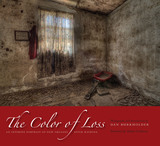 The Color of Loss: An Intimate Portrait of New Orleans after Katrina
Photographs and introduction by Dan Burkholder
University of Texas Press, 2008 The devastation of New Orleans after Hurricane Katrina has been imprinted in our collective visual memory by thousands of images in the media and books of dramatic photographs by Robert Polidori, Larry Towell, Chris Jordan, Debbie Fleming Caffrey, and others. New Orleanians want the world to see and respond to the destruction of their city and the suffering of its people—and yet so many images of so much destruction threaten a visual and emotional overload that would tempt us to avert our eyes and become numb. In The Color of Loss, Dan Burkholder presents a powerful new way of seeing the ravaged homes, churches, schools, and businesses of New Orleans. Using an innovative digital photographic technology called high dynamic range (HDR) imaging, in which multiple exposures are artistically blended to bring out details in the shadows and highlights that would be hidden in conventional photographs, he creates images that are almost like paintings in their richness of color and profusion of detail. Far more intense and poetic than purely documentary photographs, Burkholder's images lure viewers to linger over the artifacts of people's lives—a child's red wagon abandoned in a mud-caked room, a molding picture of Jesus—to fully understand the havoc thrust upon the people of New Orleans. In the deserted, sinisterly beautiful rooms of The Color of Loss, we see how much of the splendor and texture of New Orleans washed away in the flood. This is the hidden truth of Katrina that Dan Burkholder has revealed.
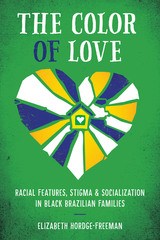 The Color of Love: Racial Features, Stigma, and Socialization in Black Brazilian Families
By Elizabeth Hordge-Freeman
University of Texas Press, 2015 Winner, Section on the Sociology of Emotions Outstanding Recent Contribution (Book) Award, American Sociological Association, 2016
Charles Horton Cooley Award for Recent Book, Society for the Study of Symbolic Interaction, 2017
Best Publication Award, Section on Body and Embodiment, American Sociological Association (ASA), 2018 The Color Of Love reveals the power of racial hierarchies to infiltrate our most intimate relationships. Delving far deeper than previous sociologists have into the black Brazilian experience, Elizabeth Hordge-Freeman examines the relationship between racialization and the emotional life of a family. Based on interviews and a sixteen-month ethnography of ten working-class Brazilian families, this provocative work sheds light on how families simultaneously resist and reproduce racial hierarchies. Examining race and gender, Hordge-Freeman illustrates the privileges of whiteness by revealing how those with “blacker” features often experience material and emotional hardships. From parental ties, to sibling interactions, to extended family and romantic relationships, the chapters chart new territory by revealing the connection between proximity to whiteness and the distribution of affection within families. Hordge-Freeman also explores how black Brazilian families, particularly mothers, rely on diverse strategies that reproduce, negotiate, and resist racism. She frames efforts to modify racial features as sometimes reflecting internalized racism, and at other times as responding to material and emotional considerations. Contextualizing their strategies within broader narratives of the African diaspora, she examines how Salvador’s inhabitants perceive the history of the slave trade itself in a city that is referred to as the “blackest” in Brazil. She argues that racial hierarchies may orchestrate family relationships in ways that reflect and reproduce racial inequality, but black Brazilian families actively negotiate these hierarchies to assert their citizenship and humanity.
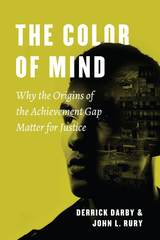 The Color of Mind: Why the Origins of the Achievement Gap Matter for Justice
Derrick Darby and John L. Rury
University of Chicago Press, 2018 American students vary in educational achievement, but white students in general typically have better test scores and grades than black students. Why is this the case, and what can school leaders do about it? In The Color of Mind, Derrick Darby and John L. Rury answer these pressing questions and show that we cannot make further progress in closing the achievement gap until we understand its racist origins.
Telling the story of what they call the Color of Mind—the idea that there are racial differences in intelligence, character, and behavior—they show how philosophers, such as David Hume and Immanuel Kant, and American statesman Thomas Jefferson, contributed to the construction of this pernicious idea, how it influenced the nature of schooling and student achievement, and how voices of dissent such as Frederick Douglass, Frances Ellen Watkins Harper, and W. E. B. Du Bois debunked the Color of Mind and worked to undo its adverse impacts.
Rejecting the view that racial differences in educational achievement are a product of innate or cultural differences, Darby and Rury uncover the historical interplay between ideas about race and American schooling, to show clearly that the racial achievement gap has been socially and institutionally constructed. School leaders striving to bring justice and dignity to American schools today must work to root out the systemic manifestations of these ideas within schools, while still doing what they can to mitigate the negative effects of poverty, segregation, inequality, and other external factors that adversely affect student achievement. While we cannot expect schools alone to solve these vexing social problems, we must demand that they address the dignitary injustices associated with how we track, discipline, and deal with special education that reinforce long-standing racist ideas. That is the only way to expel the Color of Mind from schools, close the racial achievement gap, and afford all children the dignity they deserve.
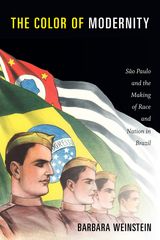 The Color of Modernity: São Paulo and the Making of Race and Nation in Brazil
Barbara Weinstein
Duke University Press, 2015 In The Color of Modernity, Barbara Weinstein focuses on race, gender, and regionalism in the formation of national identities in Brazil; this focus allows her to explore how uneven patterns of economic development are consolidated and understood. Organized around two principal episodes—the 1932 Constitutionalist Revolution and 1954’s IV Centenário, the quadricentennial of São Paulo’s founding—this book shows how both elites and popular sectors in São Paulo embraced a regional identity that emphasized their European origins and aptitude for modernity and progress, attributes that became—and remain—associated with “whiteness.” This racialized regionalism naturalized and reproduced regional inequalities, as São Paulo became synonymous with prosperity while Brazil’s Northeast, a region plagued by drought and poverty, came to represent backwardness and São Paulo’s racial “Other.” This view of regional difference, Weinstein argues, led to development policies that exacerbated these inequalities and impeded democratization.
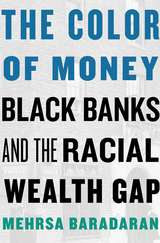 The Color of Money: Black Banks and the Racial Wealth Gap
Mehrsa Baradaran
Harvard University Press, 2017 “Read this book. It explains so much about the moment…Beautiful, heartbreaking work.”
—Ta-Nehisi Coates
“A deep accounting of how America got to a point where a median white family has 13 times more wealth than the median black family.”
—The Atlantic
“Extraordinary…Baradaran focuses on a part of the American story that’s often ignored: the way African Americans were locked out of the financial engines that create wealth in America.”
—Ezra Klein
When the Emancipation Proclamation was signed in 1863, the black community owned less than 1 percent of the total wealth in America. More than 150 years later, that number has barely budged. The Color of Money seeks to explain the stubborn persistence of this racial wealth gap by focusing on the generators of wealth in the black community: black banks.
With the civil rights movement in full swing, President Nixon promoted “black capitalism,” a plan to support black banks and minority-owned businesses. But the catch-22 of black banking is that the very institutions needed to help communities escape the deep poverty caused by discrimination and segregation inevitably became victims of that same poverty. In this timely and eye-opening account, Baradaran challenges the long-standing belief that black communities could ever really hope to accumulate wealth in a segregated economy.
“Black capitalism has not improved the economic lives of black people, and Baradaran deftly explains the reasons why.”
—Los Angeles Review of Books
“A must read for anyone interested in closing America’s racial wealth gap.”
—Black Perspectives
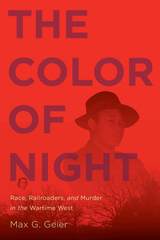 The Color of Night: Race, Railroaders, and Murder in the Wartime West
Max Geier
Oregon State University Press, 2015 On an unusually cold January night in 1943, Martha James was murdered on a train in rural Oregon, near the Willamette Valley town of Albany. She was White, Southern, and newly-married to a Navy pilot. Despite inconsistent and contradictory eyewitness accounts, a young Black cook by the name of Robert Folkes, a trainman from South Central Los Angeles, was charged with the crime. The ensuing investigation and sensational murder trial captured national attention during a period of intense wartime fervor and extensive Black domestic migration. Folkes’ trial and controversial conviction—resulting in his execution by the state of Oregon—reshaped how Oregonians and others in the West thought about race, class, and privilege.
In this deeply researched and detailed account, Geier explores how race, gender, and class affected the attitudes of local town-folk, law officers, and courtroom jurors toward Black trainmen on the West Coast, at a time when militarization skewed perceptions of virtue, status, and authority. He delves into the working conditions and experiences of unionized Black trainmen in their “home and away” lives in Los Angeles and Portland, while illuminating the different ways that they, and other residents of Oregon and southern California, responded to news of “Oregon’s murdered war bride.” Reporters, civil rights activists, and curiosity seekers transformed the trial and appeals process into a public melodrama.
The investigation, trial, and conviction of Robert Folkes galvanized civil rights activists, labor organizers, and community leaders into challenging the flawed judicial process and ultimately the death penalty in Oregon, serving as a catalyst for civil rights activism that bridged rural and urban divides. The Color of Night will appeal to “true crime” aficionados, and to anyone interested in the history of race and labor relations, working conditions, community priorities, and attitudes toward the death penalty in the first half of the 20th century.
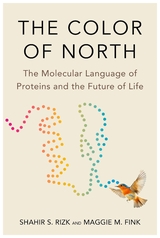 The Color of North: The Molecular Language of Proteins and the Future of Life
Shahir S. Rizk and Maggie M. Fink
Harvard University Press, 2025 An awe-inspiring journey into the world of proteins—how they shape life, and their remarkable potential to heal our bodies and our planet.
Each fall, a robin begins the long trek north from Gibraltar to her summer home in Central Europe. Nestled deep in her optic nerve, a tiny protein turns a lone electron into a compass, allowing her to see north in colors we can only dream of perceiving.
Taking us beyond the confines of our own experiences, The Color of North traverses the kingdom of life to uncover the myriad ways that proteins shape us and all organisms on the planet. Inside every cell, a tight-knit community of millions of proteins skillfully contorts into unique shapes to give fireflies their ghostly glow, enable the octopus to see predators with its skin, and make humans fall in love. Collectively, proteins orchestrate the intricate relationships within ecosystems and forge the trajectory of life. And yet, nature has exploited just a fraction of their immense potential. Shahir S. Rizk and Maggie M. Fink show how breathtaking advances in protein engineering are expanding on nature’s repertoire, introducing proteins that can detect environmental pollutants, capture carbon dioxide from the atmosphere, and treat diseases from cancer to COVID-19.
Weaving together themes of memory, migration, and family with cutting-edge research, The Color of North unveils a molecular world in which proteins are the pulsing heart of life. Ultimately, we gain a new appreciation for our intimate connections to the world around us and a deeper understanding of ourselves.
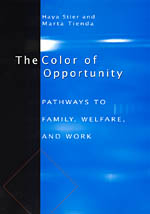 The Color of Opportunity: Pathways to Family, Welfare, and Work
Haya Stier and Marta Tienda
University of Chicago Press, 2000 In The Color of Opportunity, Haya Stier and Marta Tienda ask: How do race and ethnicity limit opportunity in post-civil rights Chicago? In the 1960s, Chicago was a focal point of civil rights activities. But in the 1980s it served as the laboratory for ideas about the emergence and social consequences of concentrated urban poverty; many experts such as William J. Wilson downplayed the significance of race as a cause of concentrated poverty, emphasizing instead structural causes that called for change in employment policy. But in this new study, Stier and Tienda ask about the pervasive poverty, unemployment, and reliance on welfare among blacks and Hispanics in Chicago, wondering if and how the inner city poor differ from the poor in general.
The culmination of a six-year collaboration analyzing the Urban Poverty and Family Life Survey of Chicago, The Color of Opportunity is the first major work to compare Chicago's inner city minorities with national populations of like race and ethnicity from a life course perspective. The authors find that blacks, whites, Mexicans, and Puerto Ricans living in poor neighborhoods differ in their experiences with early material deprivation and the lifetime disadvantages that accumulate—but they do not differ much from the urban poor in their family formation, welfare participation, or labor force attachment. Stier and Tienda find little evidence for ghetto-specific behavior, but they document the myriad ways color still restricts economic opportunity.
The Color of Opportunity stands as a much-needed corrective to increasingly negative views of poor people of color, especially the poor who live in deprived neighborhoods. It makes a key and lasting contribution to ongoing debates about the origins and nature of urban poverty.
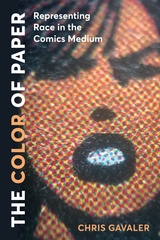 The Color of Paper: Representing Race in the Comics Medium
Chris Gavaler
Ohio State University Press, 2026 How does a comics reader understand that a certain race is assigned to a character? In The Color of Paper, Chris Gavaler establishes a formal approach for analyzing racial representations in comics, demonstrating that the ink-on-paper materiality of comics reveals the illogic of metaphorical colors as racial categorizations. Analyzing images by a wide range of comics artists and colorists, including Emilee Denich, Jaime Hernandez, George Herriman, Jack Kirby, and Ben Passmore, Gavaler goes beyond pigment and gradient to explore the formal and material elements of page backgrounds and the negative space of gutters that literally frame race in comics. He surveys major and independent publishers to assess how industry trends and evolving coloring techniques affect racial representation. And, breaking from subjective and overgeneralized analytical norms, Gavaler grounds his analysis in quantitative research on viewers’ responses. The centuries-old relationships between drawn racial markers and assumptions about their meanings continue in a white-dominated culture that benefits from and therefore preserves illusions of their natural accuracy. Denaturalizing racial depictions through formal visual analysis potentially alters racial thinking in ways that extend beyond works on paper and into daily lives.
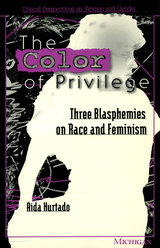 Color of Privilege: Three Blasphemies on Race and Feminism
Aida Hurtado
University of Michigan Press, 1996 This groundbreaking and important book explores how women of different ethnic/racial groups conceive of feminism. Aída Hurtado advances the theory of relational privilege to explain those differing conceptions. Previous theories about feminism have predominantly emphasized the lives and experiences of middle-class white women. Aída Hurtado argues that the different responses to feminism by women of color are not so much the result of personality or cultural differences between white women and women of color, but of their differing relationship to white men. For Hurtado, subordination and privilege must be conceived as relational in nature, and gender subordination and political solidarity must be examined in the framework of culture and socioeconomic context. Hurtado's analysis of gender oppression is written from an interdisciplinary, multicultural standpoint and is enriched by selections from poems by Sandra Cisneros, Gloria Anzaldúa, Lorna Dee Cervantes, and Elba Sanchez, and from plays by El Teatro Campesino, the United Farm Workers theater group. A final chapter proposes that progressive scholarship, and especially feminist scholarship, must have at its core a reflexive theory of gender oppression that allows writers to simultaneously document oppression while taking into account the writer's own privilege, to analyze the observed as well as the observer. Aída Hurtado is Associate Professor of Psychology, University of California, Santa Cruz.
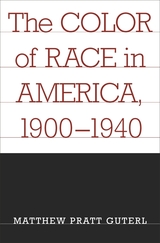 The Color of Race in America, 1900-1940
Matthew Pratt Guterl
Harvard University Press, 2002 With the social change brought on by the Great Migration of African Americans into the urban northeast after the Great War came the surge of a biracial sensibility that made America different from other Western nations. How white and black people thought about race and how both groups understood and attempted to define and control the demographic transformation are the subjects of this new book by a rising star in American history.
An elegant account of the roiling environment that witnessed the shift from the multiplicity of white races to the arrival of biracialism, this book focuses on four representative spokesmen for the transforming age: Daniel Cohalan, the Irish-American nationalist, Tammany Hall man, and ruthless politician; Madison Grant, the patrician eugenicist and noisy white supremacist; W. E. B. Du Bois, the African-American social scientist and advocate of social justice; and Jean Toomer, the American pluralist and novelist of the interior life. Race, politics, and classification were their intense and troubling preoccupations in a world they did not create, would not accept, and tried to change.
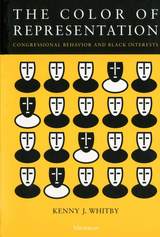 The Color of Representation: Congressional Behavior and Black Interests
Kenny J. Whitby
University of Michigan Press, 2000 The central domestic issue in the United States over the long history of this nation has been the place of the people of color in American society. One aspect of this debate is how African-Americans are represented in Congress. Kenny J. Whitby examines congressional responsiveness to black interests by focusing on the representational link between African-American constituents and the policymaking behavior of members of the United States House of Representatives. The book uses the topics of voting rights, civil rights, and race- based redistricting to examine how members of Congress respond to the interests of black voters. Whitby's analysis weighs the relative effect of district characteristics such as partisanship, regional location, degree of urbanization and the size of the black constituency on the voting behavior of House members over time. Whitby explores how black interests are represented in formal, descriptive, symbolic, and substantive terms. He shows the political tradeoffs involved in redistricting to increase the number of African-Americans in Congress.
The book is the most comprehensive analysis of black politics in the congressional context ever published. It will appeal to political scientists, sociologists, historians, and psychologists concerned with minority politics, legislative politics, and the psychological, political, and sociological effects of increasing minority membership in Congress on the perception of government held by African Americans.
Kenny J. Whitby is Associate Professor of Political Science, University of South Carolina.
The Color of Rock: A Novel
Sandra Cavallo Miller
University of Nevada Press, 2019 A young physician, Dr. Abby Wilmore, attempts to escape her past by starting over at the Grand Canyon Clinic. Silently battling her own health issues, Abby struggles with adjusting to the demands of this unique rural location. She encounters everything from squirrel bites to suicides to an office plagued by strong personalities. While tending to unprepared tourists, underserved locals, and her own mental trials, Abby finds herself entangled in an unexpected romance and trapped amidst a danger even more treacherous than the foreboding desert landscape.
Sandra Cavallo Miller’s debut novel transports readers to the beautiful depths of Arizona and weaves an adventurous and heartwarming tale of the courage and strength it takes to overcome personal demons and to find love.
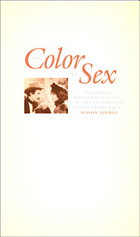 The Color of Sex: Whiteness, Heterosexuality, and the Fictions of White Supremacy
Mason Stokes
Duke University Press, 2001 In The Color of Sex Mason Stokes offers new ways of thinking about whiteness by exploring its surprisingly ambivalent partnership with heterosexuality. Stokes examines a wide range of white-supremacist American texts written and produced between 1852 and 1915—literary romances, dime novels, religious and scientific tracts, film—and exposes whiteness as a tangled network of racial and sexual desire. Stokes locates these white-supremacist texts amid the anti-racist efforts of African American writers and activists, deepening our understanding of both American and African American literary and cultural history.
The Color of Sex reveals what happens when race and sexuality meet, when white desire encounters its own ambivalence. As Stokes argues, whiteness and heterosexuality exist in anxious relation to one another. Mutually invested in “the normal,” they support each other in their desperate insistence on the cultural logic of exclusion. At the same time, however, they threaten one another in their attempt to create and sustain a white future, since reproducing whiteness necessarily involves the risk of contamination
Charting the curious movements of this “white heterosexuality,” The Color of Sex inaugurates a new moment in our ongoing attempt to understand the frenzied interplay of race and sexuality in America. As such, it will appeal to scholars interested in race theory, sexuality studies, and American history, culture, and literature.
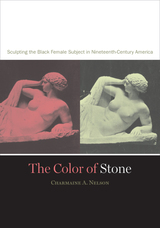 The Color of Stone: Sculpting the Black Female Subject in Nineteenth-Century America
Charmaine A. Nelson
University of Minnesota Press, 2007 Nineteenth-century neoclassical sculpture was a highly politicized international movement. Based in Rome, many expatriate American sculptors created works that represented black female subjects in compelling and problematic ways. Rejecting pigment as dangerous and sensual, adherence to white marble abandoned the racialization of the black body by skin color. In The Color of Stone, Charmaine A. Nelson brilliantly analyzes a key, but often neglected, aspect of neoclassical sculpture—color. Considering three major works—Hiram Powers’s Greek Slave, William Wetmore Story’s Cleopatra, and Edmonia Lewis’s Death of Cleopatra—she explores the intersection of race, sex, and class to reveal the meanings each work holds in terms of colonial histories of visual representation as well as issues of artistic production, identity, and subjectivity. She also juxtaposes these sculptures with other types of art to scrutinize prevalent racial discourses and to examine how the black female subject was made visible in high art. By establishing the centrality of race within the discussion of neoclassical sculpture, Nelson provides a model for a black feminist art history that at once questions and destabilizes canonical texts. Charmaine A. Nelson is assistant professor of art history at McGill University.
The Color of Strangers, the Color of Friends
Alan Peshkin
University of Chicago Press, 1991 Peshkin examines the role played by ethnicity in the daily life of a town he calls "Riverview" and its only high school. Immersing himself in the daily life of halls and classrooms of Riverview's high school and the streets of its neighborhoods, Peshkin coaxes from both young and old their own reflections on the town's early days, on the period of ethnic strife sparked by the assassination of Martin Luther King, Jr., and on the way they see Riverview today.
"Peshkin strikes a hopeful chord, revealing what social encounters among ethnic groups—at their best—can be like in America."—Education Digest
|
|


